

The Best Yacht Concepts From Around The World
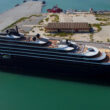
The Stunning Ritz Carlton EVRIMA Yacht
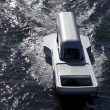
Gliding Across Tokyo’s Sumida River: The Mesmerizing Zipper Boat
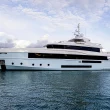
CROCUS Yacht: An 48 Meter Beauty by Admiral
- Zuretti Interior Design
- Zuretti Interior
- Zuccon International Project
- Ziyad al Manaseer
- Zaniz Interiors. Kutayba Alghanim
- Yuriy Kosiuk
- Yuri Milner
- Yersin Yacht
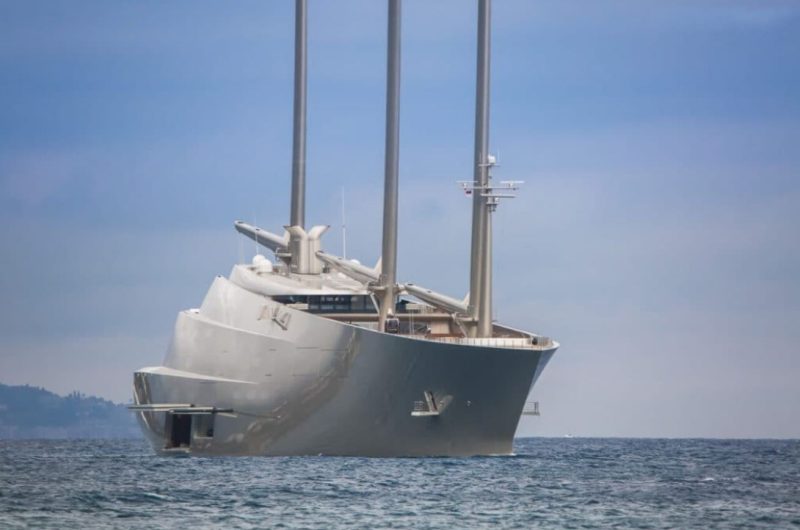
- Superyachts
SAILING YACHT A – World’s Biggest Sailing Yacht – $600 Million
SAILING YACHT A measures 143 meters making her the world’s biggest sailing yacht.
SAILING YACHT A is far more than a luxury vessel. She is a masterpiece of design and innovation combining sleek metal surfaces with futuristic naval architecture that took over two years to complete.
Launched in 2017, both the interior and exterior of this mega sailing yacht were designed by Phillippe Starck, who calls SAILING YACHT A one of his most high-profile projects.
The superyacht has taken on voyages all around the world and was most recently spotted sailing off the coasts of Gibraltar and Cyprus.
| Sailing Yacht A | |
| 143 meters | |
| 20 | |
| 20 | |
| Nobiskrug | |
| Phillipe Starke | |
| Reymond Langton Design | |
| 2017 | |
| 21 knots | |
| MTU | |
| 12,558 ton |
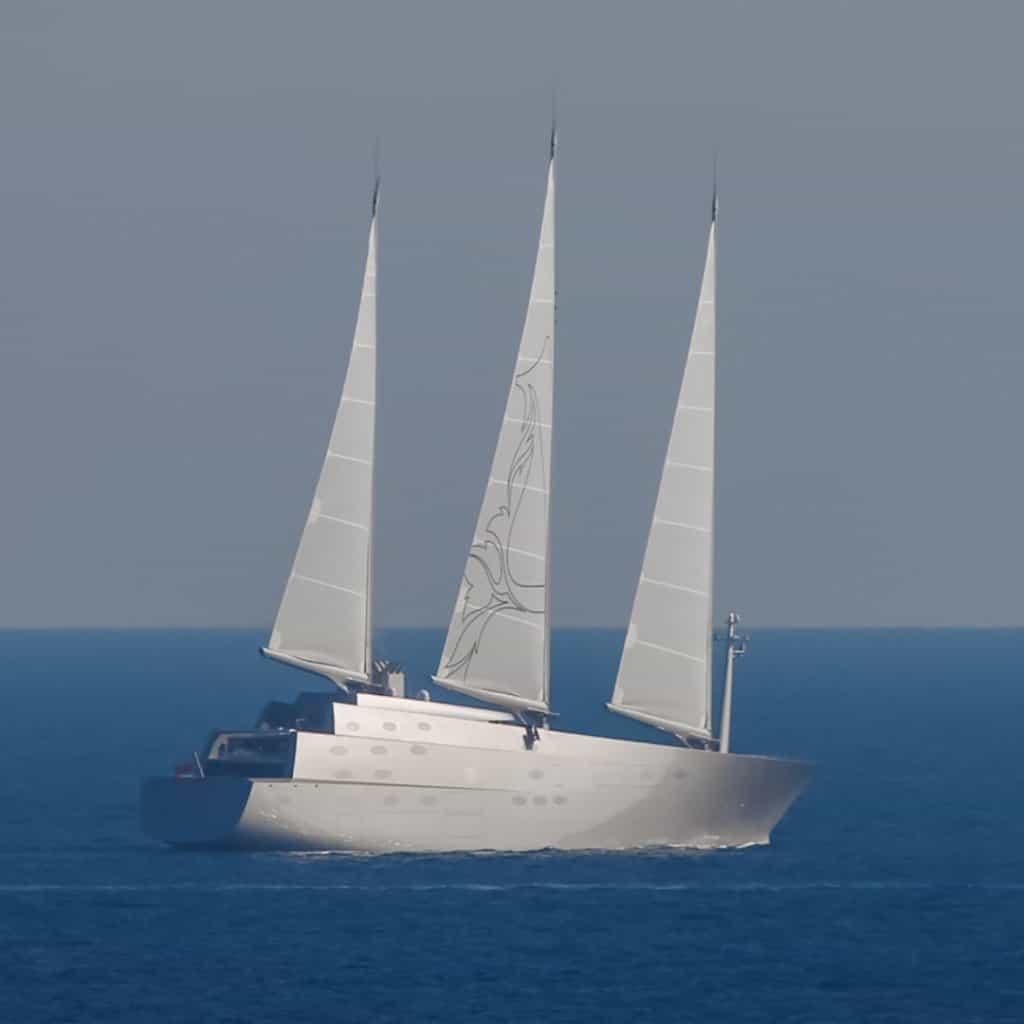
SAILING YACHT A interior
Both the interior and exterior of SAILING YACHT A were designed by Philippe Starck , a French architect known for his wide range of design projects.
He famously worked on the impressive MOTOR YACHT A, and the two iconic vessels share a lot of similarities in their layout and specifications.
Both yachts look incredibly futuristic and are sure to attract attention wherever they go.
While no exact details are known about the interior of SAILING YACHT A, it is rumored that she has an underwater observation pod with 30 cm (1 ft) thick glass located in the keel of the vessel.
This is one of the few parts where design mockups are publicly available, and the style of the interior can be examined.
The observation pod appears to have cream upholstery that stretches across the floor and ceiling of the cabin.
Two large symmetrical glass windows allow guests to view the breathtaking underwater world without even having to leave the yacht.
A third window is located at the bottom of the pod, which lets it feel like a true 360-degree experience and is almost comparable to a submarine.
A small floating side table provides guests with a space to place drinks or snacks in the pod and enjoy a one-of-a-kind dining experience in this unusual location.
Since the pod is located at the keel of the yacht, the large propellers are most likely visible from the windows suggesting it is most commonly used at anchor.
The superyacht has ten cabins that can accommodate 20 guests as well as a further 54 crew member.
Paparazzi photos and the work of yacht spotters provide a rare glimpse into the interior of SAILING YACHT A.
No official footage of cabins or salons has been released, although Starck’s past work suggests that the yacht would be furnished with opulent elements that perfectly combine luxury with style.
Silver and metal decorations play a large role and tie the interior design of the yacht together.
However, SAILING YACHT A was launched much later than her motorized companion suggesting her interior might be more modern with minimalistic elements rather than lavish furnishings.
Occasional photographs shot through open doors, and portholes show expensive art pieces decorating the interior of the yacht and rather absurd design choices like a set of chairs shaped like large human heads.
The yacht appears to feature a large, open salon with an elevated seating area and symmetrical arches on either side.
While details aren’t known to the public, it is rumored that SAILING YACHT A features a luxurious spa area, a sizable gym as well as an owner’s suite with several rooms that is only accessible via fingerprint.
The massive private area is said to feature a 60-inch television that disappears into the floor as well as a rotating bed.
Considering she is the largest sailing yacht in the world, it is surprising that SAILING YACHT A can only host 20 guests.
This suggests that there are spacious entertainment areas located on board, including several saloons and ample below-deck space for crew members.
Due to her large size and a small number of cabins, it is assumed that SAILING YACHT A can welcome a large number of day guests onboard for special events and celebrations.
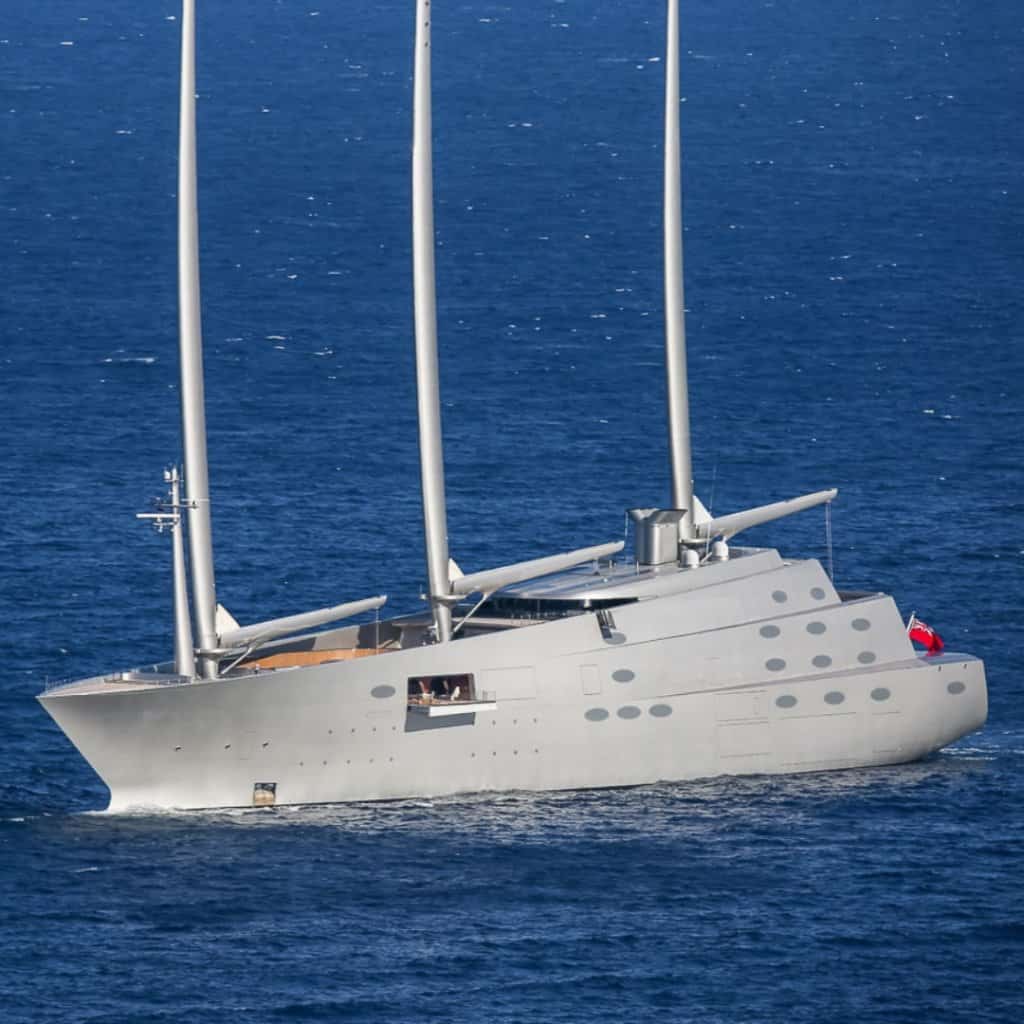
Biggest sailing yacht controversy
It has been the topic of debate that SAILING YACHT A is not the largest yacht in the world but instead the ‘largest sail-assisted motor yacht.
Depending on the definition used, that would make BLACK PEARL the biggest sailing yacht in the world.
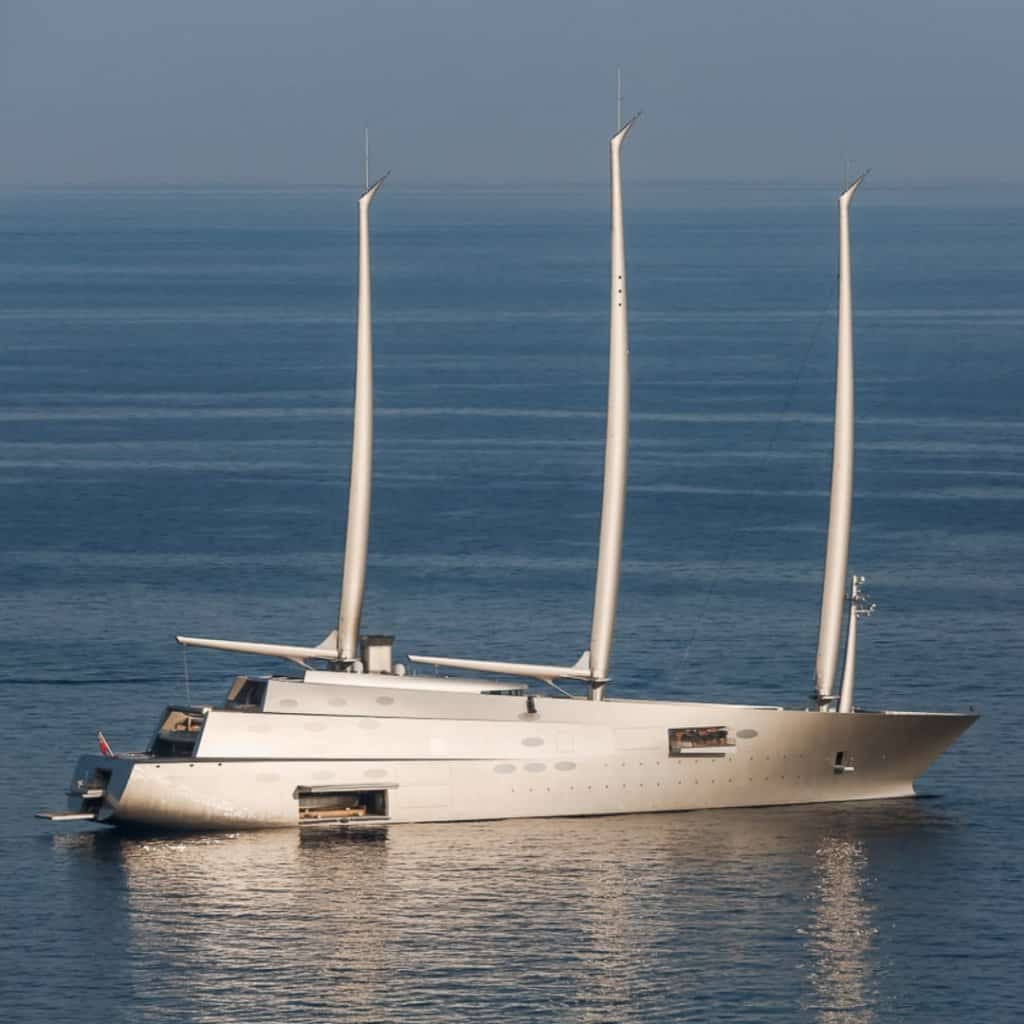
The most expensive sailing yacht
SAILING YACHT A is the most expensive sailing yacht in the world and cost an estimated price of US $600 million – a relatively “affordable” price considering her large size and tonnage.
A calculated US $48,000 per ton is considered low in the yachting industry, where European yachts are usually priced at US $60,000 per ton and over.
This average price would bring the value of SAILING YACHT A up to nearly US $800 million. However, due to the fact that the official sales price has not been released to the public, these numbers are mere estimates and cannot be validated officially.
Since the yacht is a custom project and one of a kind, it can be assumed that the total value of SAILING YACHT A lies far higher than her initial price.
In addition to any cost for the crew, supplies, and docking fees, she has annual running costs of US $50-75 million.
SAILING YACHT A is currently not available for sale or charter.
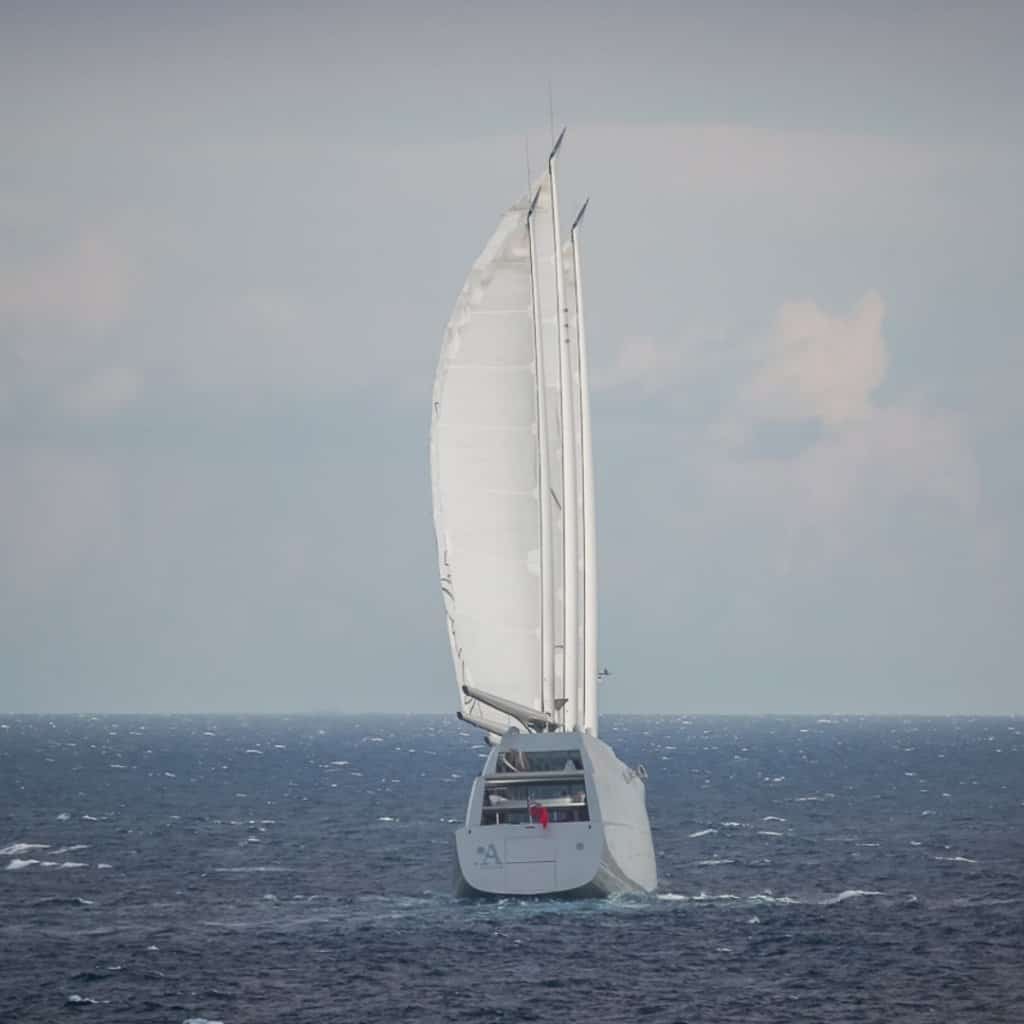
Specifications
SAILING YACHT A is incredibly large for a sailing yacht, and even compared to the longest motor yachts in the world, she would rank in the top ten.
Paired with her unusual futuristic design, this mega sailing yacht has a length of 143 meters (469 ft), a beam of 25 meters (82 ft), and a draft of 8 meters (26 ft) making her a more than an impressive vessel.
SAILING YACHT A was built by Nobiskrug , a German superyacht builder at their Kiel shipyard, and launched in 2017 after more than two years of construction.
To date, SAILING YACHT A is the largest yacht ever built by Nobiskrug and remains their flagship.
It is considered the most complicated project to ever be completed in the sailing industry and gained international media attention on its launch date. It has a total volume of 12.558 tons and is powered by hybrid diesel-electric engines.
SAILING YACHT A is considered the longest sailing yacht in the world and is more than 36 meters (118 ft) longer than BLACK PEARL, which ranks in second place on the list.
Coincidentally her project name was WHITE PEARL which is a reference to her brilliant white exterior, although it couldn’t have referred to BLACK PEARL since she was only launched in 2018, a year after Melnichenko’s masterpiece.
Her three-carbon masts stand at an impressive 100 meters (328 ft), making them some of the largest in the world and taller than Big Ben in London.
However, her large size is sometimes also limiting as she struggles to fit underneath most bridges and is therefore constrained to certain routes.
She once passed under the Golden Gate Bridge in San Francisco with only 20 feet to spare between her masts and the bottom of the famous bridge.
She is rumored to have an electric gimbal crow’s nest, which allows for remote operation and advanced wind measurements. Her sails are all white, and her masts have nearly sickle-like shapes, which add to her striking futuristic appearance.
It is noteworthy that she is commonly photographed with her sails down, which suggests she might be using her support engines more frequently than true wind power.
With a sail area of more than 3.700m^2 (40.000 square ft), she can reach top speeds of up to 21 knots which is supported by her twin 4895 Horsepower MTU engines .
Her average cruise speed lies at 16 knots, and her total range is estimated to lie at 5320 nautical miles. She features a state-of-the-art sail system that is able to raise and lower the sails and anchors at the touch of a button.
SAILING YACHT A has a steel hull and composite steel superstructure, which is unusual in the superyacht industry as most shipyards choose aluminum to reduce weight and keep the vessel light.
She currently sails under the flag of Bermuda, which is common for prominent sailing yachts.
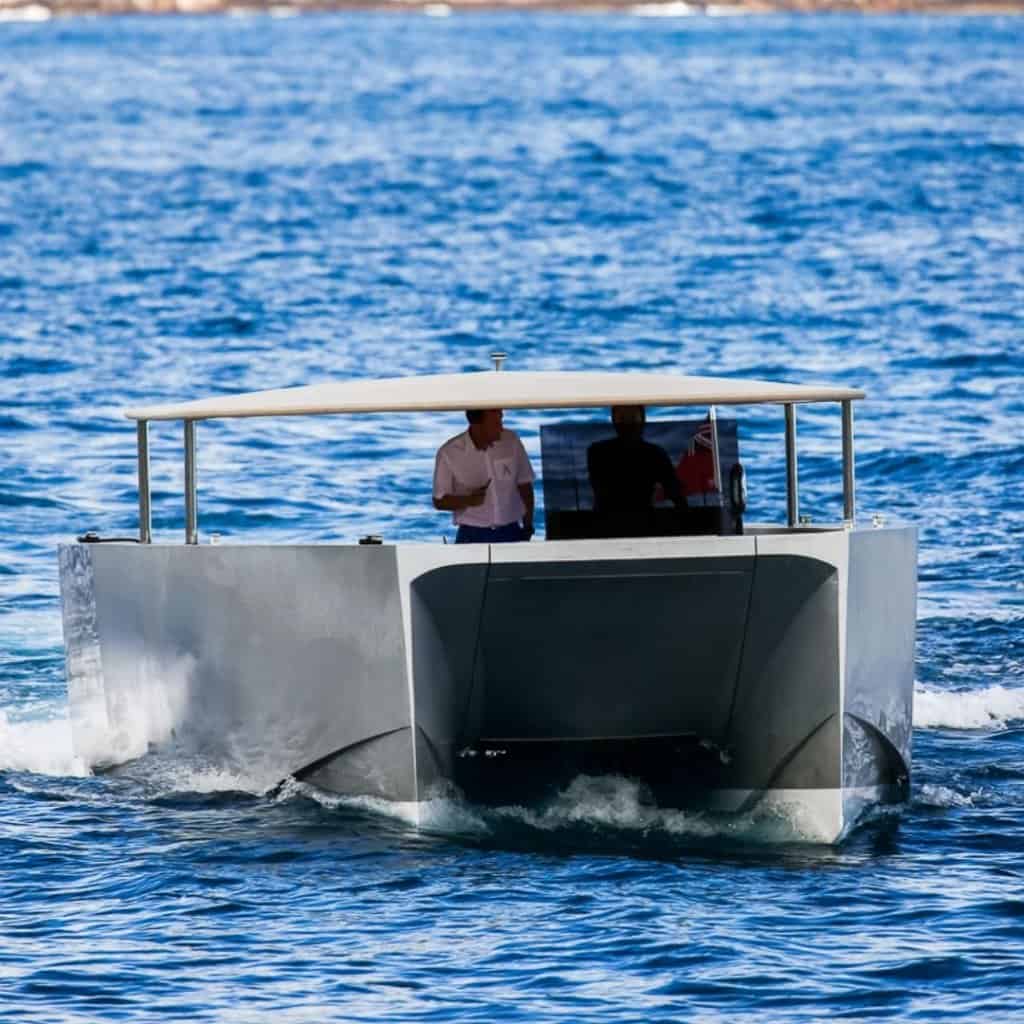
During construction, SAILING YACHT A was called project WHITE PEARL, a fitting name for this sizable vessel.
Like her interior, the exterior of SAILING YACHT A was designed by Philippe Starck, although the Dutch studio Dykstra Naval Architects played a role in the naval architecture of the vessel.
They specialize in sailing yachts of all sizes and have been involved in many prominent projects in the industry over the years.
She features eight teak decks with a large swimming pool located in the center and several elevators spread across the yacht.
She is even said to carry a submarine. The main pool is lowered into the deck allowing for additional privacy for the owners.
Her hull has 24 shell doors, which are used to access equipment and provide additional deck space if needed. She is accompanied by four tenders also designed by Philippe Starck and built by Lloyd Stevenson in New Zealand.
Their sleek and elegant design matches that of the main vessel, and they are used for transporting guests and taking them on excursions.
One of the tenders of SAILING YACHT A is a carbon fiber speedboat especially reserved for the owner who can operate the vessel autonomously whenever required without the aid of crew members.
This allows Melnichenko, who is a fan of driving high-speed cars to be independent when staying aboard his luxury yacht. The tender is small but powerful, reaching speeds of up to 53 knots.
The larger tenders can seat up to eight passengers and feature panoramic windows ideal for sightseeing and exploring but are much slower at only 30 knots.
The aft features a large garage used for storing jet skis, tenders, and other equipment.
High-profile artists such as Snoop Dogg are rumored to have performed here, although detailed evidence of such concerts remains unknown.
Whenever the aft isn’t used for performances or parties, it can be transformed into a swimming platform designed in the yacht’s iconic futuristic style.
However, despite her cutting-edge design features, SAILING YACHT A surprisingly also includes classic nautical elements. She has a wooden steering wheel that is reminiscent of a pirate ship, although it is not operational.
The captain of the vessel can instead use modern technologies to operate the massive yacht via a small joystick and touchscreen.
There are symmetric extendable balconies that protrude from the bridge of the yacht and allow the crew to have a better view to be able to gauge the dimensions of the immense vessel.
Of course, SAILING YACHT A has a modern underwater lighting system that illuminates the vessel perfectly at night.
Do you have anything to add to this listing?
- Phillipe Starke
- Reymond Langton Design
Love Yachts? Join us.
Related posts.
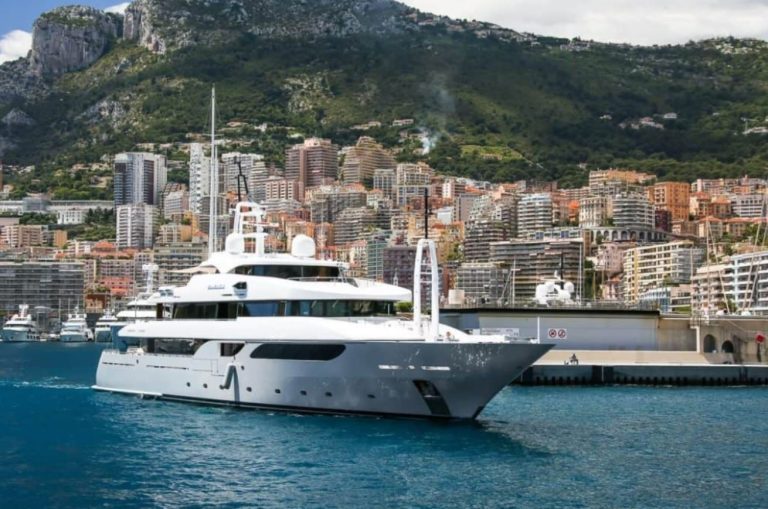
RARITY Yacht – Epic $23 Million Superyacht
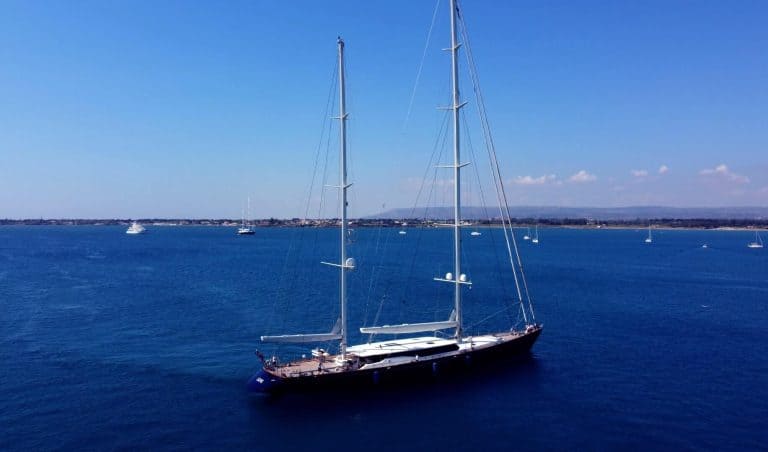
SQUALL YACHT – Inside the Amazing Perini Navi Sailing Yacht
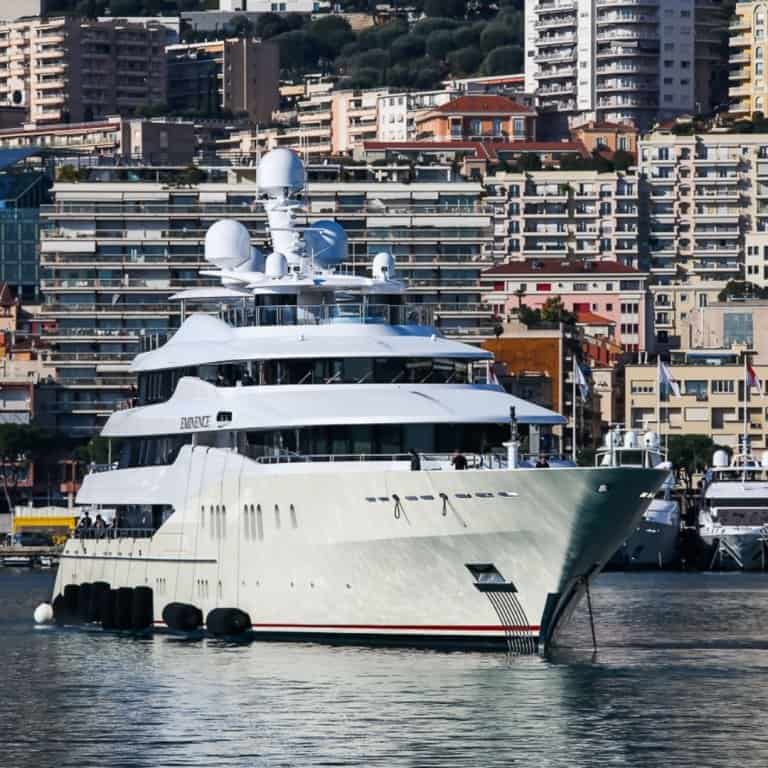
EMINENCE Yacht – World-class $90M Superyacht
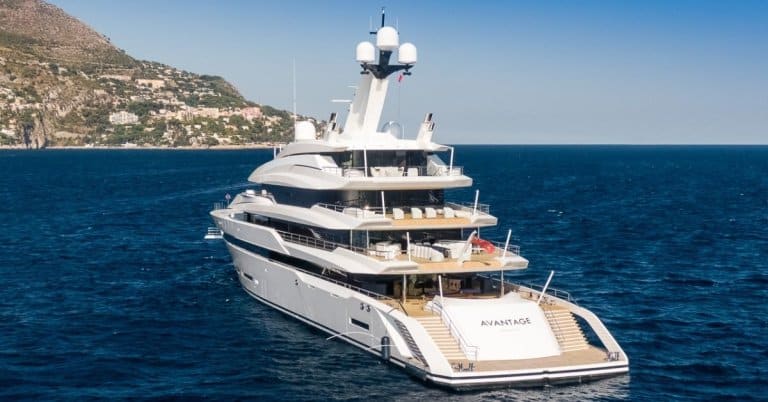
AVANTAGE Yacht – Divine $200M Superyacht

- Evolution of Innovation
Sailing Yacht A
- Jamaica Bay
- Triple Seven
- German Craftsmanship
- Behind the scenes
- Project Black Shark
Privacy & Discretion
- After-Sales
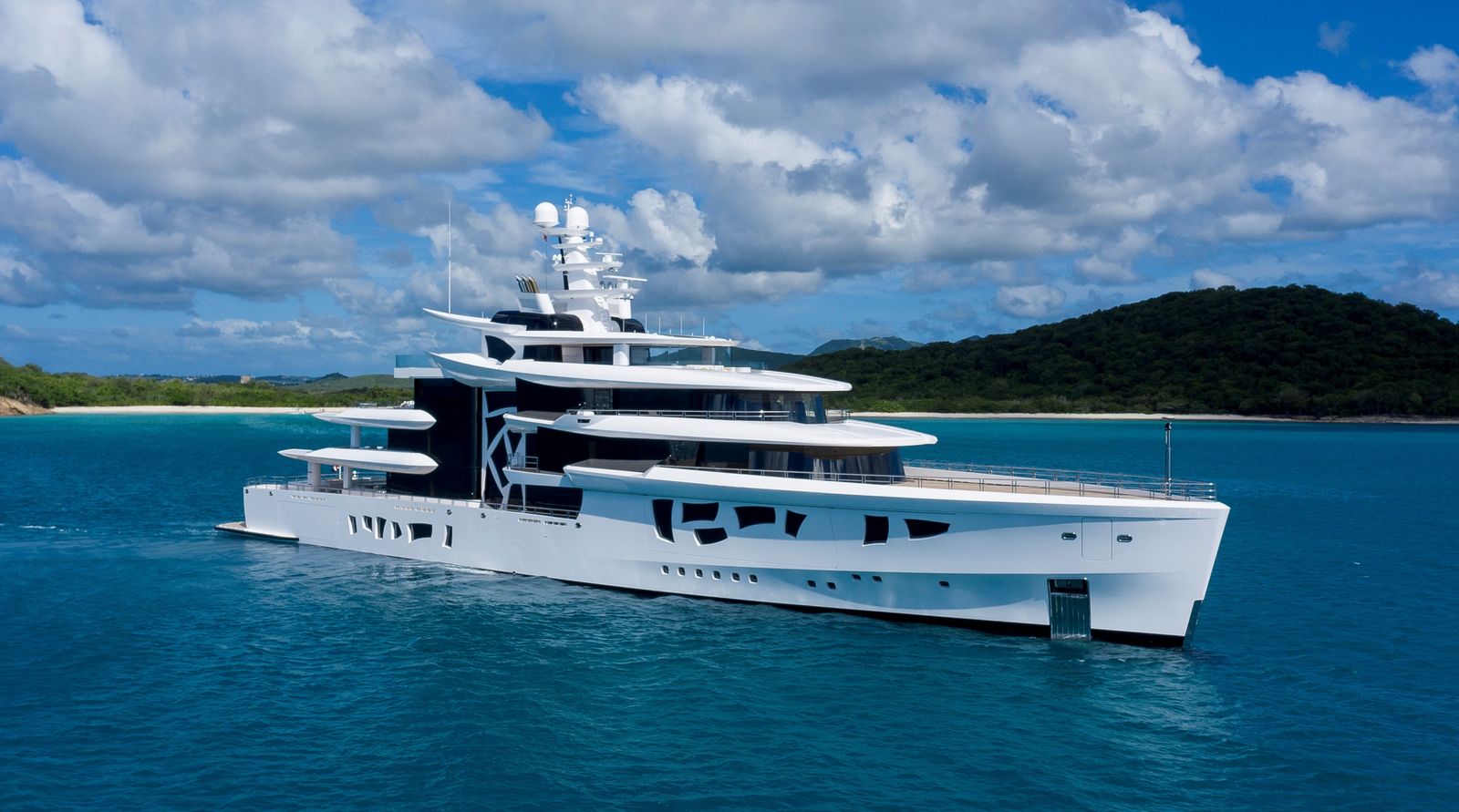
80 m / 262 ft
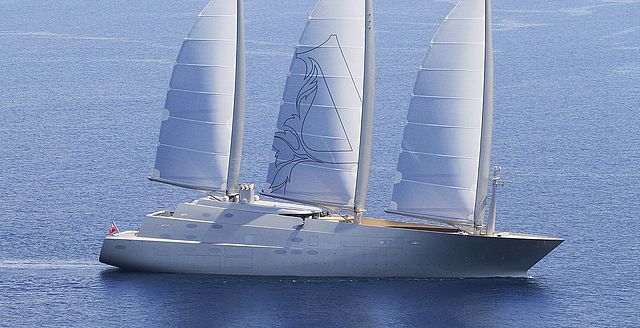
143 m / 468 ft
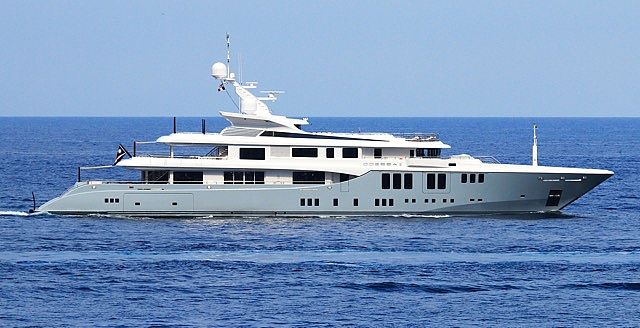
73 m / 239 ft
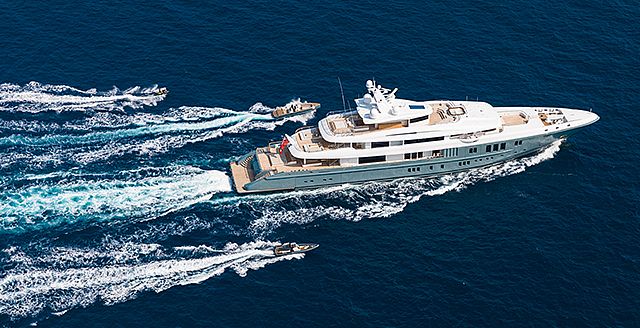
73.5 m / 241 ft
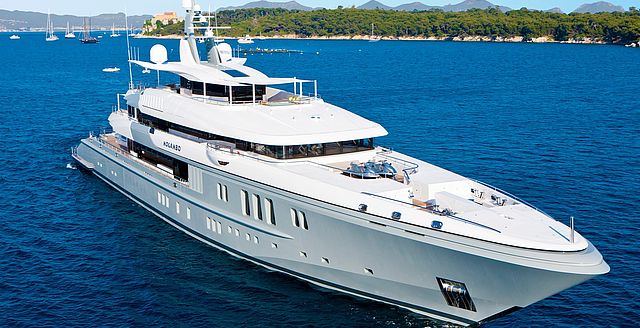
68 m / 223 ft
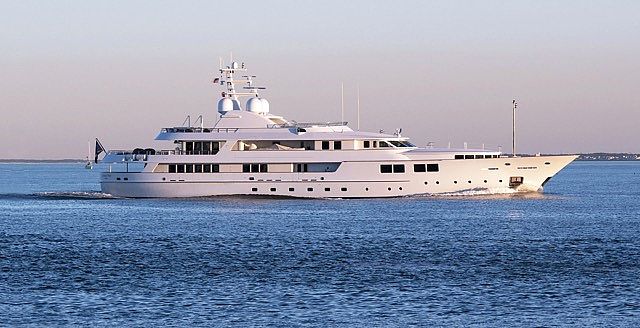
60 m / 196 ft
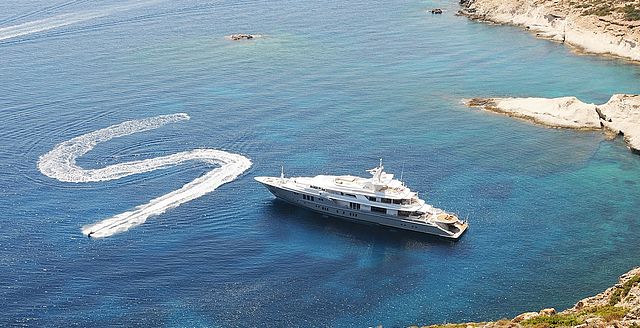
67 m / 219 ft
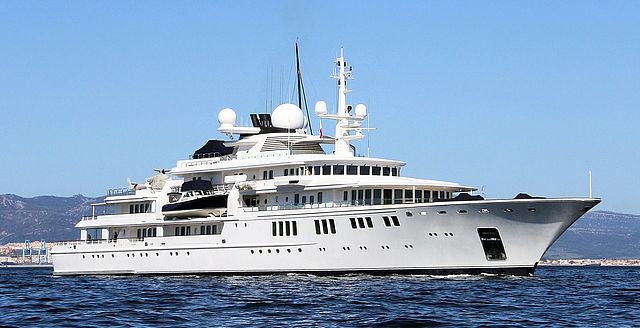
92.5 m / 303 ft
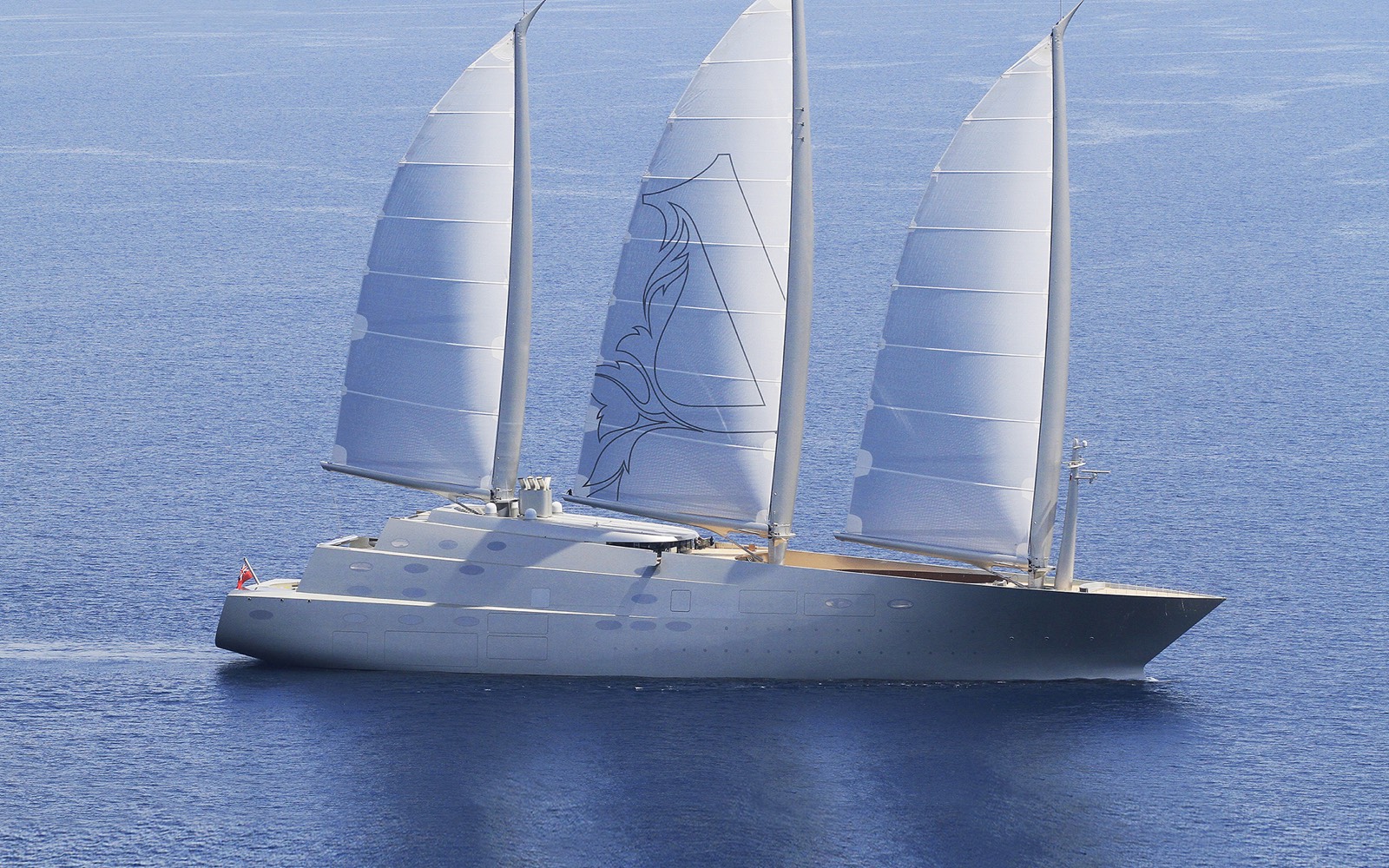
LOA: 142.81 m
Beam: 24.88 m
Draft: 8.00 m
Interior: Philippe Starck
Exterior: Philippe Starck
Hull: Steel
Superstructure: Steel / GRP
Max. speed: 21 knots
Cruising speed: 16 knots
Gross tonnage: 12.558
Project number
“Born from the desire of the owner to push the boundaries of engineering and challenge the status quo of the industry, ‘SAILING YACHT A’ is undoubtedly one of the most visionary projects NOBISKRUG has ever been involved in.”
SAILING YACHT A is the ultimate embodiment of German superyachts built for the 22 nd century.
She is unique.
She is the largest of her kind. She is a masterpiece in every detail. Her name: SAILING YACHT A. She will draw eyes the world over, as no other superyacht has ever done before.

She is sophisticated.
Measuring almost 143 m and a gross tonnage of about 12.600, she became one of the most impressive PYC superyachts in the world in terms of design and technology.
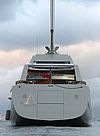
She is innovative.
She is one of the world’s largest and the most advanced superyachts with unique features such as an underwater observation pod, hybrid diesel-electric propulsion system and state-of- the-art navigation systems. The luxury sailing yacht's three masts are the tallest and most highly loaded freestanding composite structures in the world. The mainmast towers 100 m above the waterline.

The smooth, lustrous, silver-metallic surfaces…
…and nearly invisible windows give this yacht a futuristic look. World-renowned Philippe Starck created this unconventional design, which challenges the expectations of conventional aesthetics. NOBISKRUG high-tech building technology made this fascinating design possible.
Steel hull and steel superstructure with high-tech composite fashion plates that can be formed into any shape or size, a technology NOBISKRUG has developed during the past 15 years in co-operation with classification societies and special subcontractors.

Thanks to her striking looks and innovative technology SAILING YACHT A definitely changes the upcoming landscape of the NOBISKRUG fleet as well as the future of supersail.

Strictly confidential!
This is all we can tell you!
What would you like to explore next?
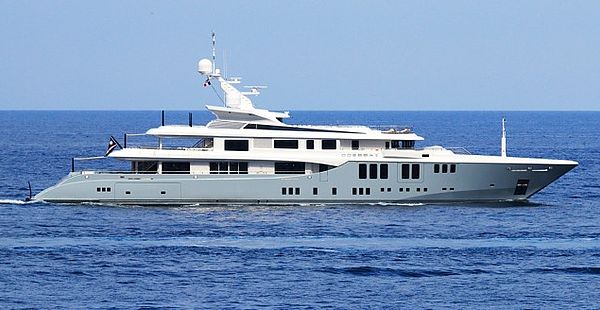

Find anything, super fast.
- Destinations
- Documentaries
SAILING YACHT A
SAILING YACHT A is an exceptionally unique 2017 build by Nobiskrug, measuring 142.80m (468'6"ft).
She is the ultimate embodiment of German superyachts built for the 22 nd century.
Measuring almost 143 m and a gross tonnage of about 12,600 GT, she became one of the most impressive PYC superyachts in the world in terms of design and technology.
She is one of the world’s largest and the most advanced superyachts with unique features such as an underwater observation pod, hybrid diesel-electric propulsion system and state-of- the-art navigation systems. The luxury sailing yacht's three masts are the tallest and most highly loaded freestanding composite structures in the world. The mainmast towers 100 m above the waterline.
The smooth, lustrous silver metallic surfaces and nearly invisible windows give this yacht a futuristic look. World-renowned Philippe Starck created this unconventional design, which challenges the expectations of conventional aesthetics. Nobiskrug high-tech building technology made this fascinating design possible.
Steel hull and steel superstructure with high-tech composite fashion plates that can be formed into any shape or size, a technology Nobiskrug has developed during the past 15 years in co-operation with classification societies and special subcontractors.
Thanks to her striking looks and innovative technology SAILING YACHT A was unquestionably the most anticipated delivery of 2017. She definitely changes the upcoming landscape of the Nobiskrug fleet as well as the future of supersail.
“Born from the desire of the owner to push the boundaries of engineering and challenge the status quo of the industry, ‘SAILING YACHT A’ is undoubtedly one of the most visionary projects Nobiskrug has ever been involved in.” Holger Kahl, Nobiskrug Managing Director.
- Yacht Builder Nobiskrug View profile
- Exterior Designer Philippe Starck No profile available
- Interior Designer Philippe Starck No profile available
Yacht Specs
Other nobiskrug yachts, related news.
- Pontoon Boats
- Personal Watercraft
- nauticalknowhow
- Nautical Knots
- Tools and Calculators
Sailing Yacht A: Everything You Want To Know
The sailing yacht known as A was built between 2015 and 2016 by German yacht makers Nobiskrug based on designs by French architect Phillippe Starck that seemed to have made use of some naval architecture for inspiration. It currently holds the record for being the world’s largest sailing yacht, though, to be fair, it is technically a sail-assisted motor yacht as it is fully capable of moving under its own power rather than relying on the sails.
Who Owns Sailing Yacht A?
Russian billionaire Andrey Melnichenko, a man who made his fortune thanks to a coal company and a chemical company, is the owner of Sailing Yacht A as well as its older sister yacht the Motor Yacht A. Melnichenko has French designer Philippe Starck design both of the vessels for him.
How Big is Sailing Yacht A?
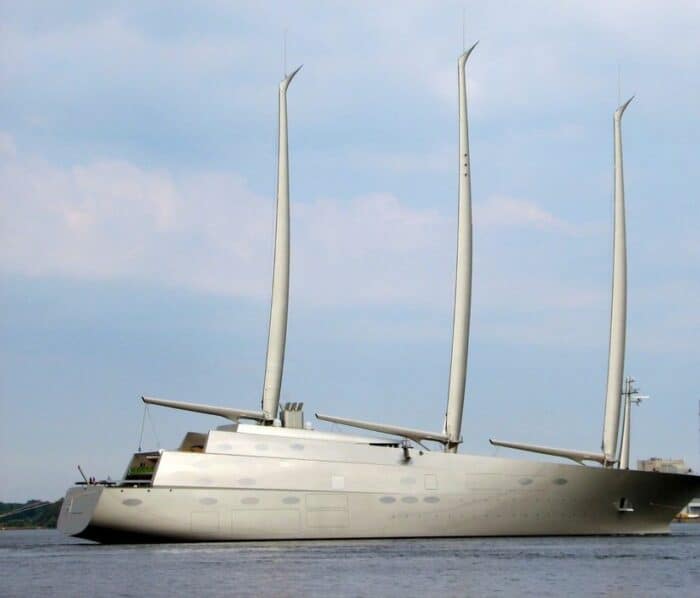
As mentioned, this is actually the largest sailing yacht in the world and it truly is immense. It earned the title of largest sailing yet specifically because of the length which clocks in at a stunning 468.5 feet. Not only is it the longest sailing yacht as a result of that, making it over 50 feet longer than its closest competitor, it qualifies as one of the largest yachts period, sailing or motor powered. It’s the 11th largest yacht in the world if you also include motor yachts.
Even aside from length, the stats are pretty remarkable. The masts, which are very hard to miss, are also gigantic. The main mast stands at over 100 meters or 300 feet tall. The entire boat has a listed height of 328 feet. That makes the A taller than the Tower of London or Big Ben.
The vessel is just over 81 feet wide and has a gross tonnage of 12,558 gt. The sails measure an incredible 3,747 square meters or 40,332 square feet. The sails can be controlled with an in-boom furling system. It also features a gimballed crow’s nest, accessible by an elevator, 60m high in one of the curved, carbon masts.
So It’s the Largest Sail Assisted Motor Yacht?
Technically, yes. There is not really a distinction made for more people between sail-assisted and sailing yacht.
Why Is it Called Sailing Yacht A?
Sailing Yacht A’s owner was being a little crafty when he came up with the name for the vessel. Like his earlier motor yacht, which is also called A or Motor Yacht A, Sailing Yacht A got the name it has so that it will always appear at the top of boat registry lists. It’s kind of like when businesses used to call themselves something like AAAA+ Plumbing so they’d be at the top of the page in the phone book, back when people still used phone books.
What is the Interior of Sailing Yacht A Like?
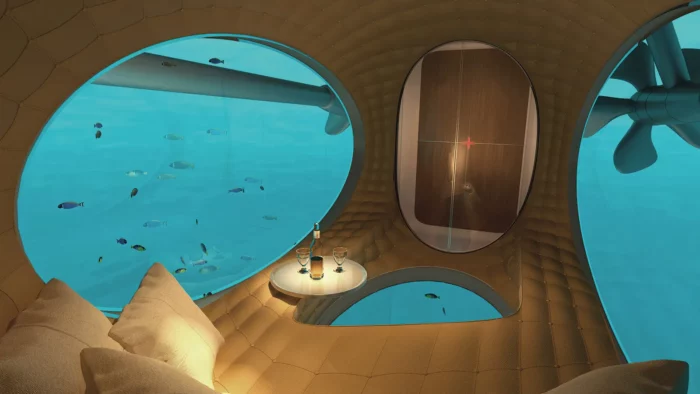
As you can imagine, there’s a lot going on in this massive yacht. To start, it’s a full eight decks. These can be accessed throughout the yacht with either a number of elevators or the free-floating spiral staircases. It’s rumored that there are cabins for at least 20 guests, plus a master suite on board.
There are oval windows throughout the vessel that are almost impossible to see from outside as they’re covered in a one-way film that allows passengers to look out but prevents anyone from looking in. Some of the rooms have floor to ceiling windows that simply can’t be seen from outside. It’s rumored that the master suite has a rotating bed and is presumably of a significant size as the master suite in the smaller Motor Yacht A was 2,500 square feet.
In terms of luxury amenities there’s plenty to choose from. The yacht has an underwater observation pod right in the keel with windows to the sides and below. The glass is one foot thick to ensure it can handle the pressure. It offers a view of the props in action which is unique and unlike observation windows you’d likely find on any other boats. And unlike many yachts which have launch vessels or jet skis in the garage, this one has a three-man submarine you can take out for fun as well as four tenders.
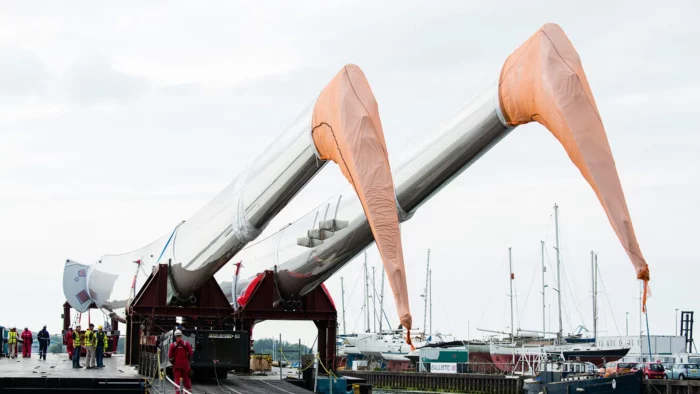
Melnichenko is known for throwing lavish parties – he’s had Lennie Kravitz and Snoop Dogg perform on board Motor Yacht A for him and his guests, and even had Whitney Houston and Christina Aguilera perform at his wedding some years ago, so it’s safe to assume the sailing yacht also features an extravagant party room as well.
A crew of up to 54 operate the vessel and much of that can be done easier than you’d think. Touch screen controls can power and maneuver the vessel at the touch of a button. Even the sails can be raised and lowered with electronic controls and a single person operating them.
In addition to the piloting of the ship, the crew run the yacht’s internal power plant, a professional galley the size of a kitchen you’d expect to find in a hotel, and other guest services like laundry and so on. These services and features are maintained across two of the boat’s 8 decks.
Much like any other yacht of this size, there is a helipad on the deck, and you can also find a large pool in the center of the deck as well. There are two other pools and all three are said to have current-generating technology to give them a more realistic ocean feel. As in his previous yacht, one of the pools has a glass floor so that you can see up into the pool from the deck below.
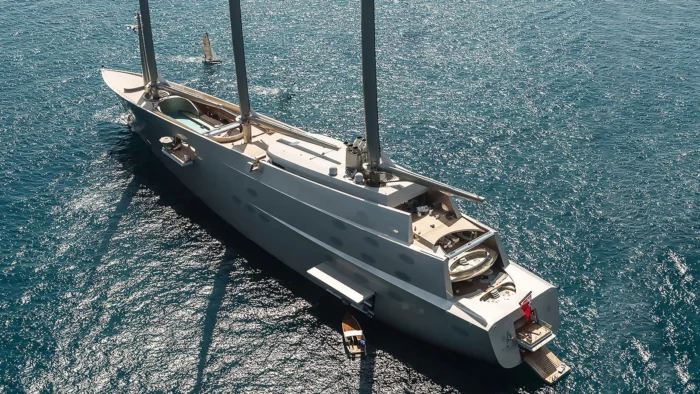
Many of the internal features have been kept under wraps as few people have had a chance to go on board the yacht. One particularly odd feature that has been noticed, however, is a chair on deck shaped like a giant, human head. Other glimpses of the interior have also shown off things like a large hot tub which has storage underneath it for a number of lifeboats, and the stunning blue navigation lights that line the exterior from bow to stern, just along the waterline.
The security features on the boat have not been disclosed, for obvious reasons, but Melnichenko previous yacht was rumored to feature everything from bomb proof glass to fingerprint scanners for enhanced security at key entry points.
Was Sailing Yacht A Seized?
In March, 2022, Sailing Yacht A was seized by Italian authorities in the Port of Trieste after Andrey Melnichenko was placed on an EU sanctions list following Russia’s invasion of Ukraine. Many Russian billionaires who have had ties to President Vladimir Putin had sanctions levied against them which resulted in assets being frozen or confiscated all over the world.
For unknown reasons, A was placed back in the water in June 2022 after being in dry dock for a few months. It was officially listed as being at anchor at that time with no further details about why the change in status. Melnichenko had stated at the time that he was going to contest the seizure of the luxury yacht but it’s unknown when or if that happened.
What Did Sailing Yacht A Cost?

Billionaires don’t always like to share their expenses with the world and Andrey Melnichenko is no different. He has not disclosed what he paid for the mega yacht and the yacht makers built it with a very thorough non-disclosure agreement in place that prevents them from sharing any of the particulars.
The fact that there has been no officially confirmed price tag doesn’t mean there hasn’t been some solid speculation about the price which has yet to be refuted. According to most sources, the yacht likely cost its owner somewhere in the neighborhood of €530 million which, at the time, probably worked out to around $578 million to $600 million US.
How Fast is Sailing Yacht A?
The props on the yacht are powered by twin MTU 20V 4000 ML73 main diesel engines or by electric motors or even by both together. It runs up to 2,050rpm, giving 2,800kW, and makes use of four generators instead of five to cut down on the overall weight. The generators are able to run down to 1,050rpm when it’s appropriate. Something called Superimposed System Controller (SSC) is able to constantly recalculate the optimal speed and determine the best combination of generators to use from moment to moment. This ensures optimal fuel and power usage while also limiting noise and vibration.
The result of all of this engineering is that the yacht has a cruising speed of 16 knots and a top speed of 21 knots.
The Bottom Line
Sailing Yacht A is the largest sail-assisted yacht in the world and, although the price is just speculated to be around $600 million, it’s clearly one of the most expensive yachts in the world as well. The exterior design is sleek and subtle and is able to hide many features including shell doors and windows while the interior spans 8 decks and has room for 54 crew and up to 20 passengers on board. The boat was seized by Italian authorities in 2022 and it’s unknown if or when the owner will get it back.
My grandfather first took me fishing when I was too young to actually hold up a rod on my own. As an avid camper, hiker, and nature enthusiast I'm always looking for a new adventure.
Categories : Yachts
Leave a Reply Cancel reply
Your email address will not be published. Required fields are marked *
Save my name, email, and website in this browser for the next time I comment.
More in Yachts
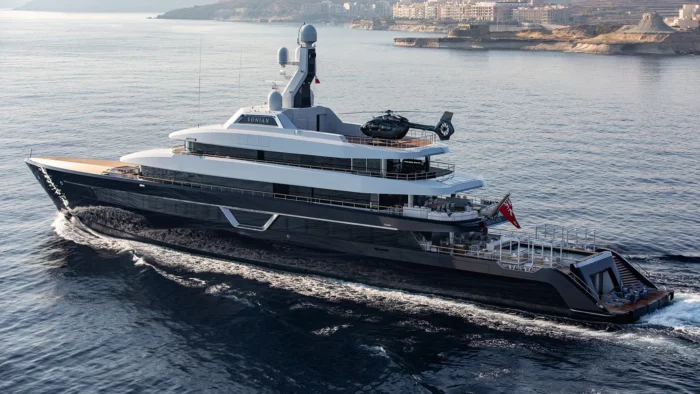
Lonian Yacht: An Insider's Guide
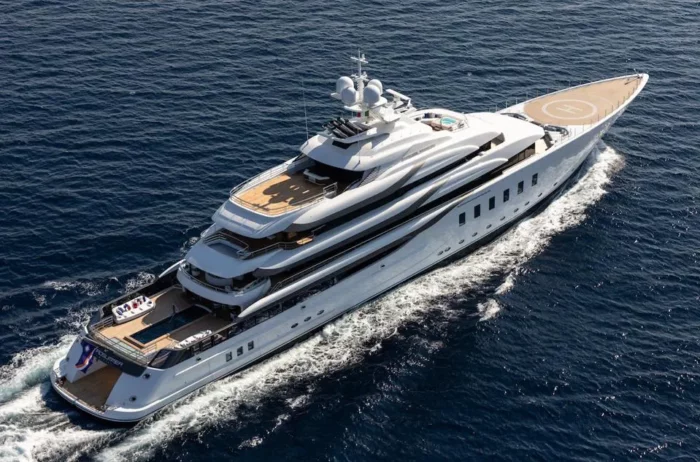
A Closer Look at the Madsummer Yacht
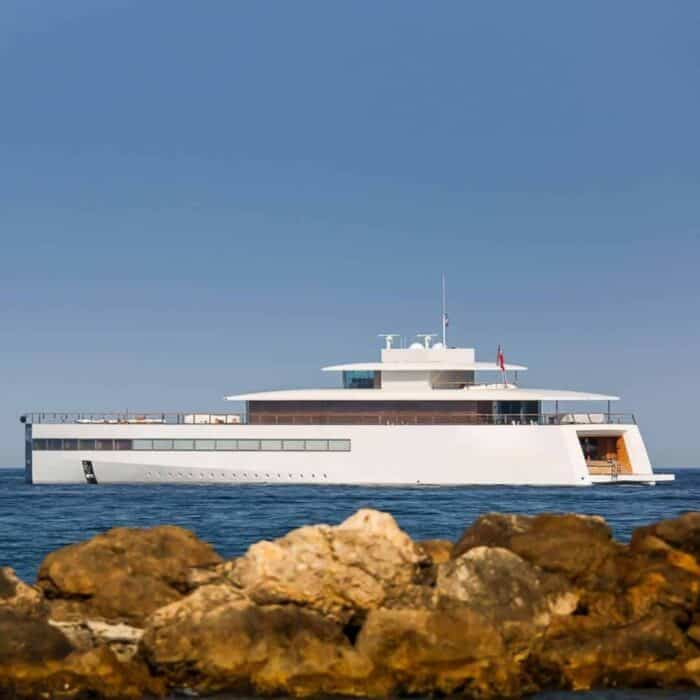
Your Insider’s Look at Steve Jobs’ Yacht Venus
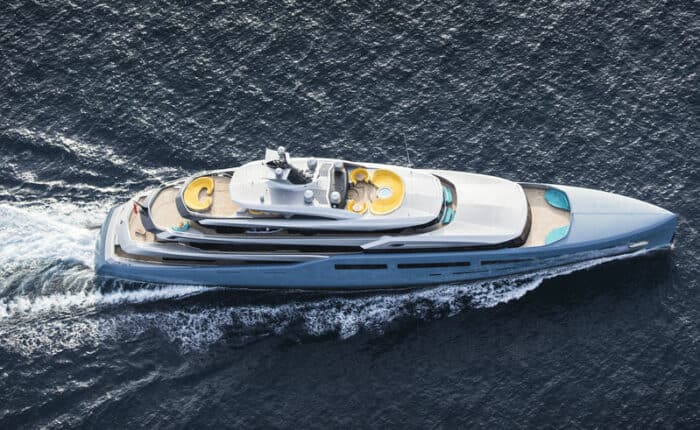
Your Insider’s Guide to the Aviva Yacht

The People’s Poncho Review and Ratings

Oru Lake Kayak Review

What Is A Gunwale?

131 of the Best Hawaiian Boat Names

167 Patriotic Boat Names
About boatsafe.
Established in 1998, BoatSafe is your independent guide into the world of boating, fishing, and watersports. We provide expert insights and detailed guides to help you find products tailored to your needs and budget.
Contact Boatsafe
- Address: 4021 West Walnut Street. Rogers, AR 72756
- Phone: (479)339-4795
- Email: [email protected]
Site Navigation
- How We Test
- Corrections Policy
- Privacy Policy
- Terms & Conditions
- Editorial Policy
- Affiliate Disclosure
Our Reviews

All content is © Copyright 2024. All rights reserved.
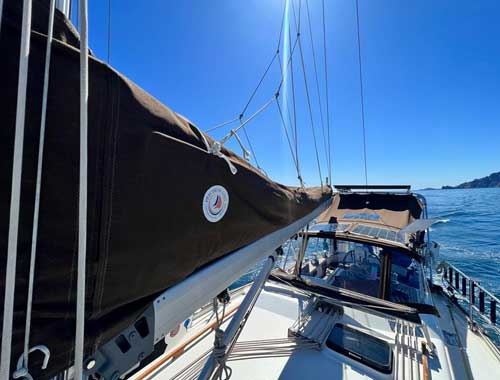
Save on Sail Bags and Lines!
Lazy Jack, Boom Covers, Lines, Turtle Bags, Spinnaker Socks, Halyards, Sheets, and More!
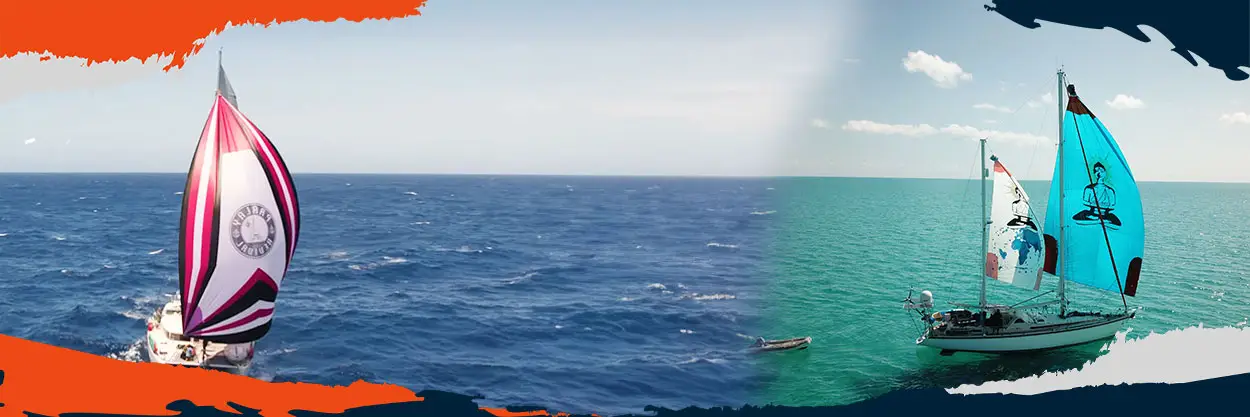
Summer Savings
Up to 30% off new sails with the fastest delivery in North America! 4-6 Weeks From Design to Delivery. Limited availability.
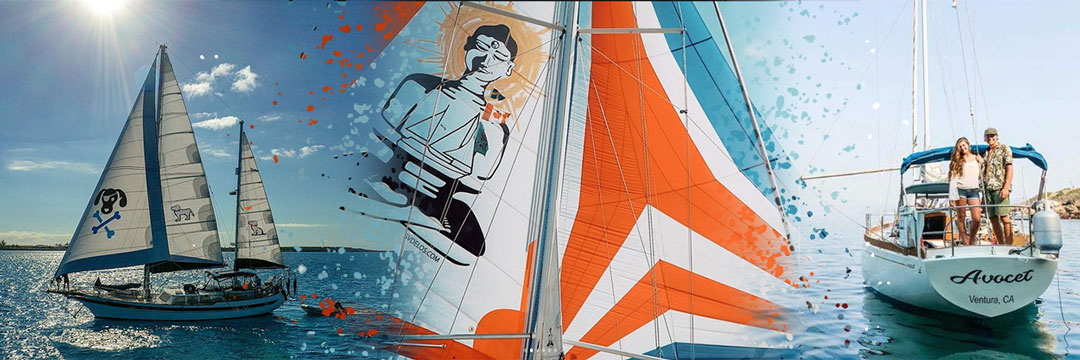
Trusted by YouTube’s Largest Sailing Channels
Sailing for a living requires sails that work. These inspirational sailors put hours on their sails in remote locations and put their trust in Precision Sails.
Custom Designed Sails
Designed for your boat, your sailing area, and the type of sailing you do. Over 15,000 Sailboat Rig Specs on file.
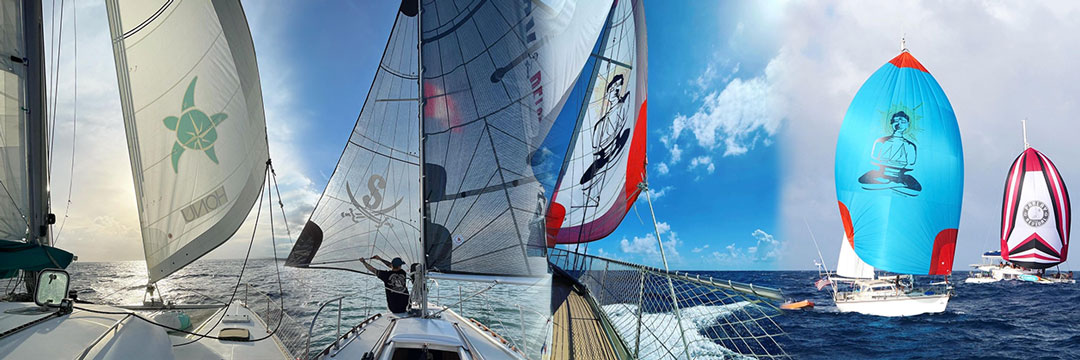
Any Sail That You Need
Mainsails, Headsails, Asymmetrical Spinnakers, Symmetrical Spinnakers, Gennakers, Code Zeros – we have it all!
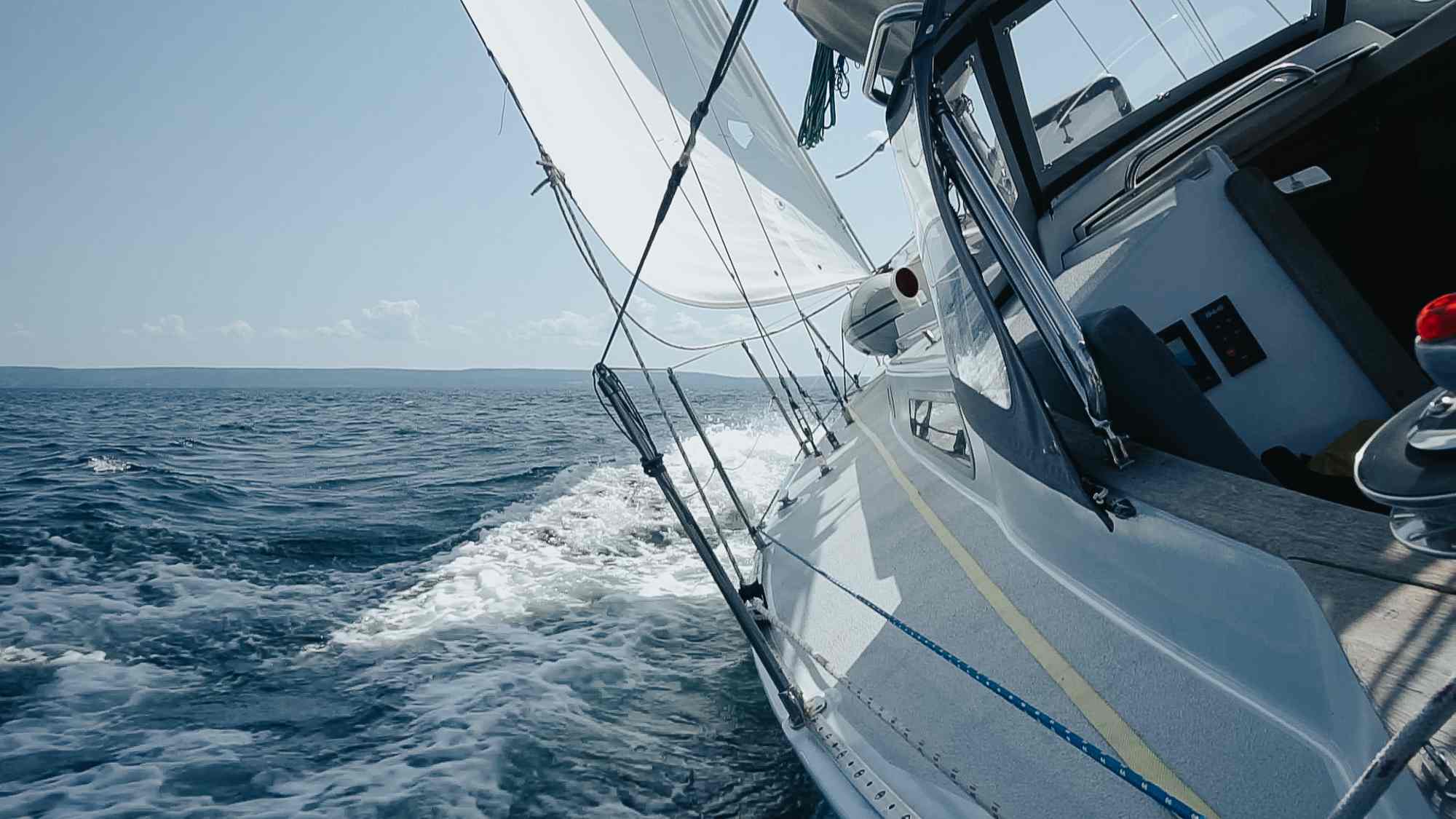
The Largest Sailcloth Selection in the Industry
With the widest selection of sailcloth available in the industry there is always a cloth suited for you. Let us help narrow down your options.
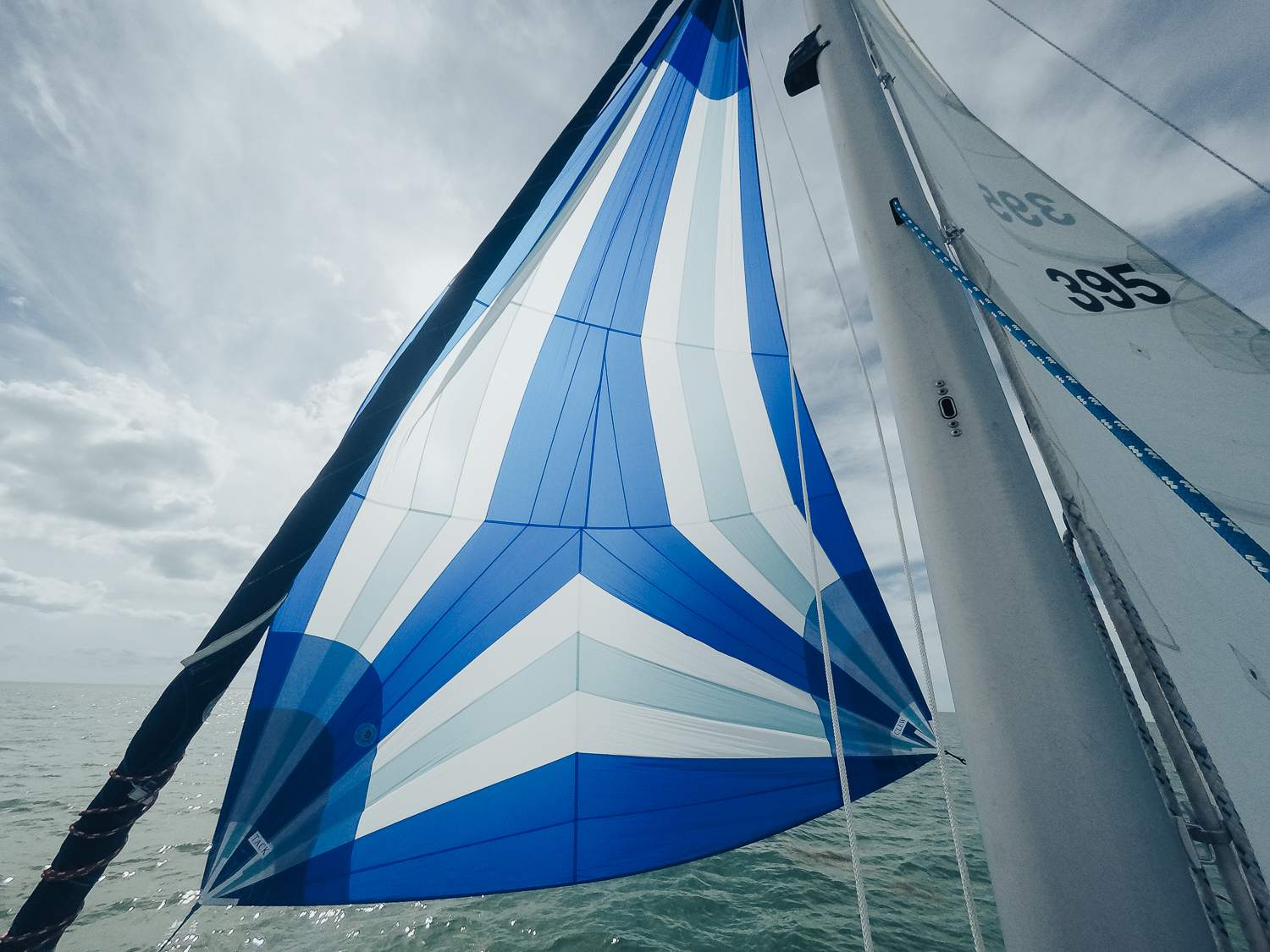
Perfect Fit Guaranteed, Every Time
Every step in our process is focused on ensuring the highest quality and satisfaction for our sailors. Smooth sailing is guaranteed with our innovative approach to production and our exceptional warranty coverage.
Mon-Fri: 8:00am to 4:00pm PST [email protected] – This opens in your default email application 1-888-958-5638 – This opens in your default telephone application
Educating & Consulting to Ensure You Get What You Need
Sails are the main propulsion force for sailboats. Unfortunately, most sailors don’t replace their sails often enough. This can lead to the assumption that purchasing new sails can be overwhelming and confusing. Precision Sails takes a new approach to the sailing industry by helping you choose what sails and sailcloth is best for you, your sailboat, the type of sailing you want to do, and the area in which you are sailing. We offer industry-leading transparency into what sailcloth is available worldwide and the importance of sail design to your sail’s performance and lifespan.
Our website is filled with educational resources related to cloth, design, and technical sailing knowledge. Our team of sail consultants is always available to walk you through the options and help you choose the sail that is right for you.
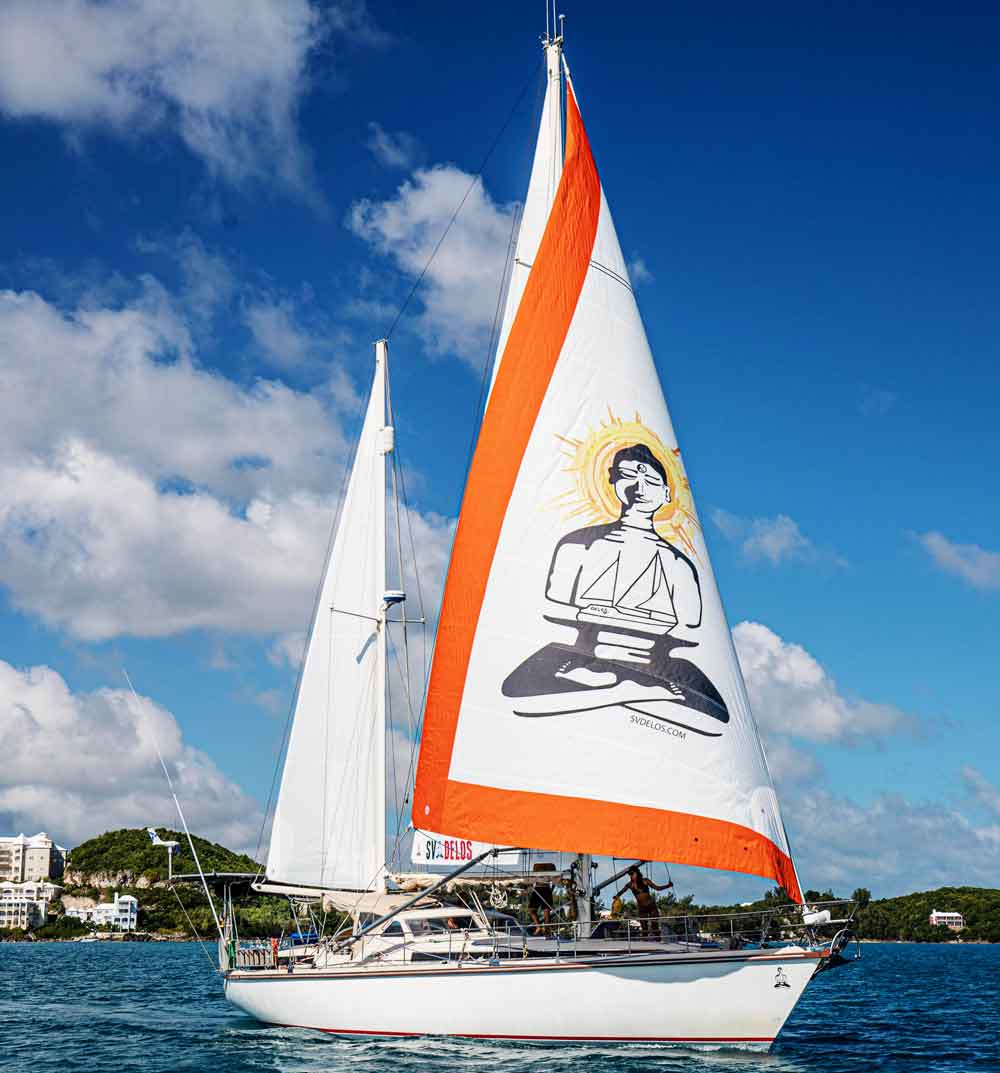
Perfect Sails Start With a Perfect Design
In order for a sail to fit and perform it needs to be designed properly. While other lofts are contracting sail designs to third-party design services, Precision Sails is building its in-house design team in Victoria BC, Canada, to work directly with sailors to ensure your new sail fits perfectly and performs the way that you want it to. Using the most modern 3D sail design software our design team will customize a sail that not only fits your rig as she sits in the water today but ensure that your sail fits and performs for years to come.
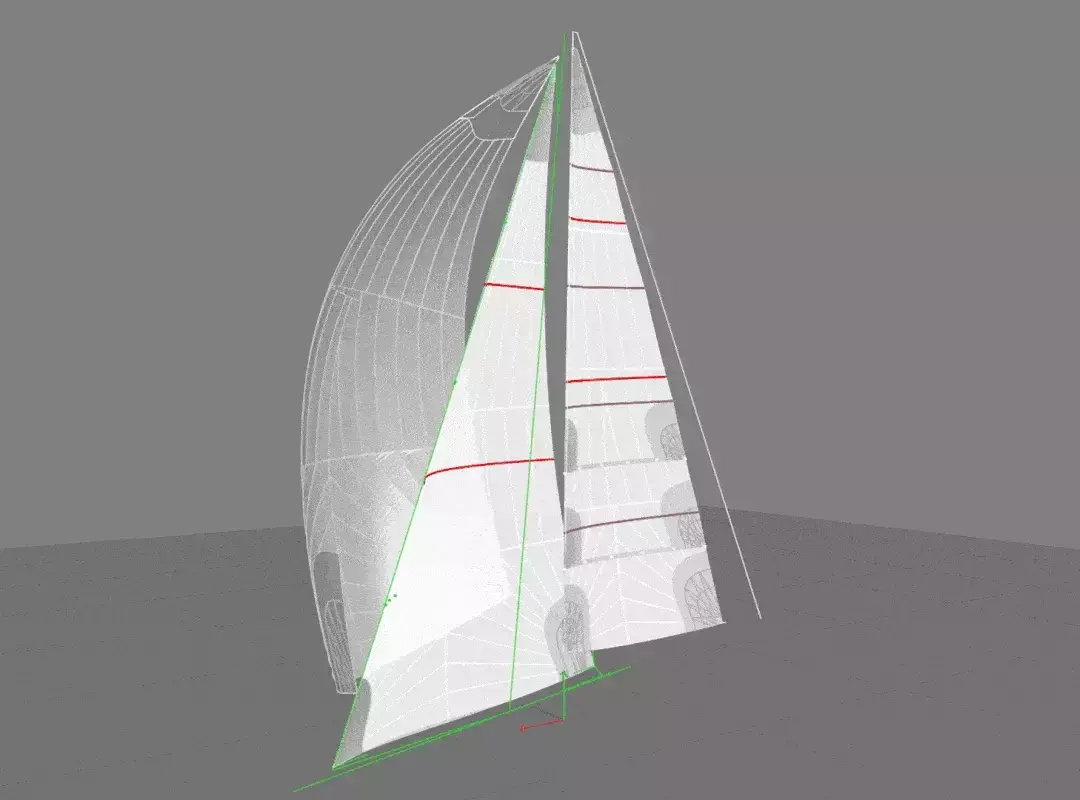
100% Fit and Performance Guarantee
Buying a new sail is a big investment. Precision Sails offers its 100% Guarantee so all our sailors have the confidence that Precision Sails has your back. Accidents are rare, but they can happen. If your sail does not fit or perform to your satisfaction your sail will be redesigned and rebuilt. As experts in our craft and with the confidence we have from supporting thousands of sailors worldwide, our team is proud to boast the widest covering sail warranty in the industry.
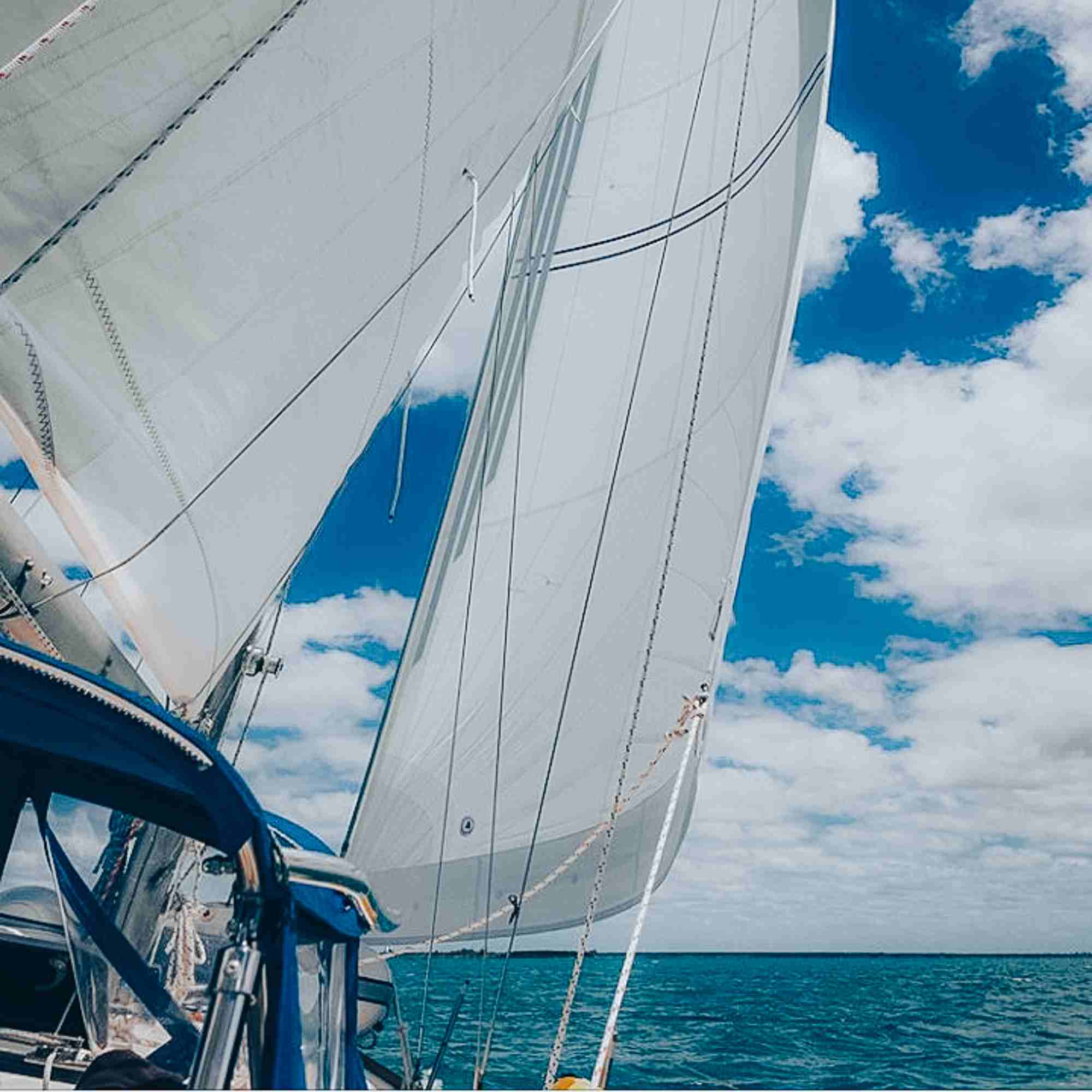
Leading the Industry in Sailcloth Options
Sailcloth manufacturers offer many different types of sailcloth in multiple different quality levels. There is always sailcloth available that will meet your sailing needs as well as your budget. Precision Sails offers all sailors full transparency into what sailcloth is offered and from which manufacture. Our team is here to help select which cloth is best suited for your sailing needs.
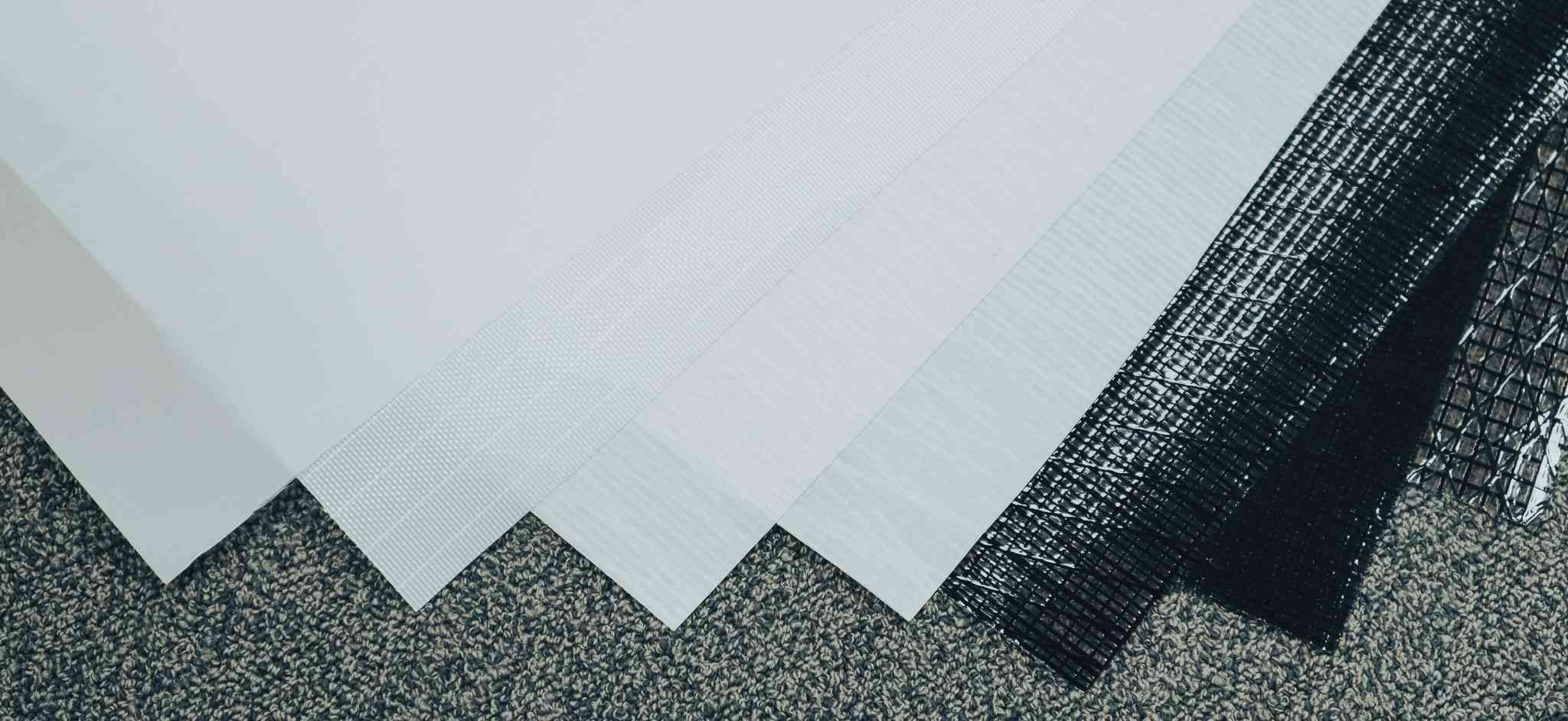
Our Partners
Precision Sails is proud to partner with these amazing sailors documenting their adventures. These sailors inspire new sailors and weekend warriors alike to learn how to sail, sail more often, and sail further than ever before. If you are looking for some inspiration to cut the lines and sail away make sure to help us support these creators by watching their episodes.
Learn More About Our Partners

Find your Sail
Your perfect sail is out there and Precision Sails is ready to make it for you. Request a quote for a sail and we’ll be in touch shortly.
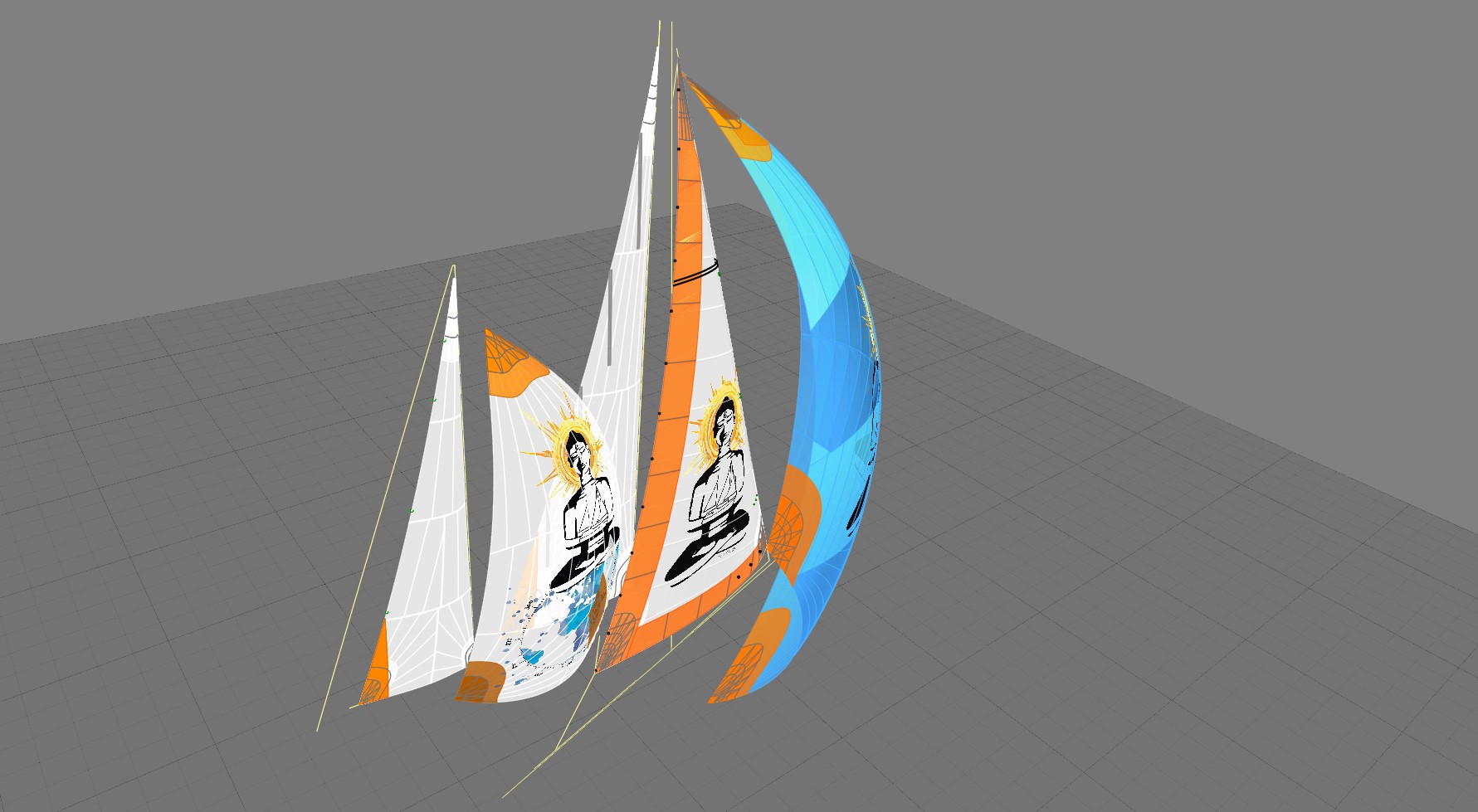
Types of Sails
Precision Sail Loft specializes in producing headsails, mainsails, spinnakers, gennakers, and code zeros. So no matter the type of sail you’re looking for, we can help. Our sails are trusted by cruisers and racers alike from around the globe. Review the sail options and craftsmanship available to customize your dream sail.
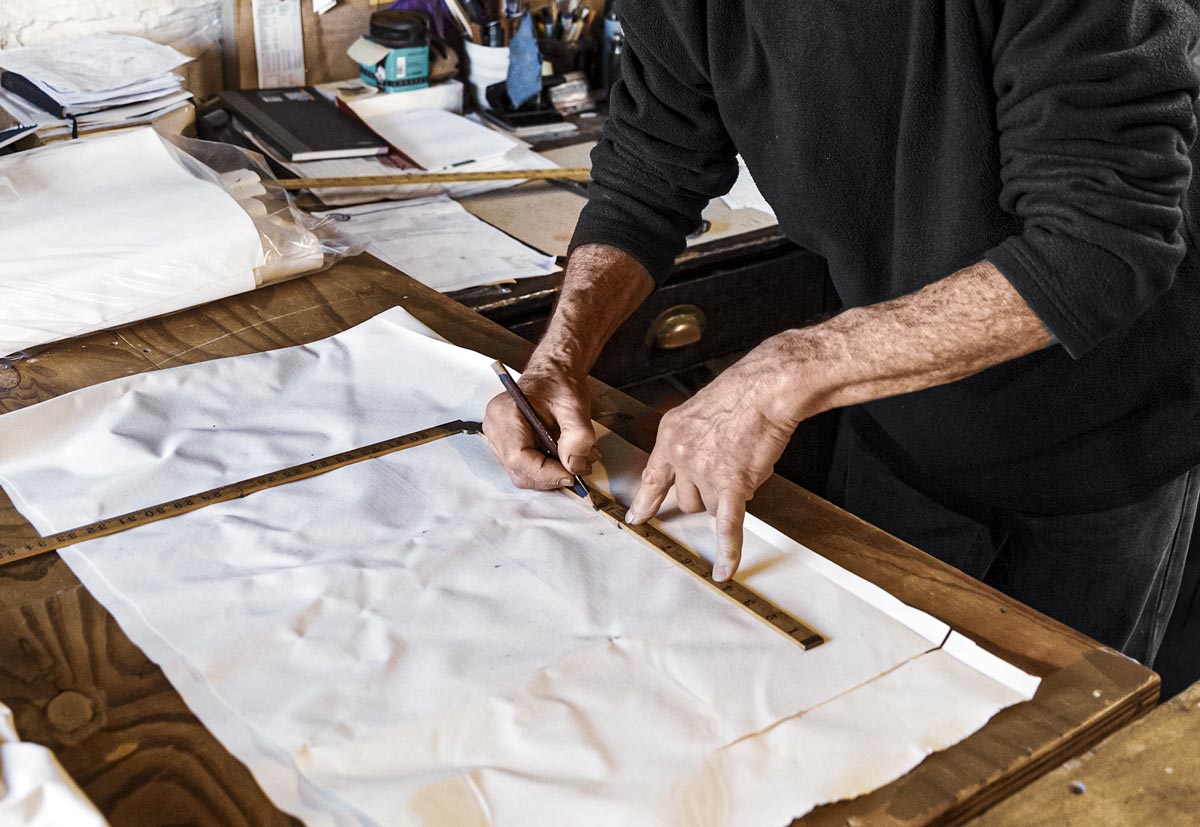
Build & Process
Every sail we craft is produced to the highest standards with the best hardware, craftsmanship, and skill-set in the industry. Pair that with Precision Sails’ approach to communication and your sailboat will be ready to set sail before you know it.
What are Sailors Saying About Precision Sails
Precision Sails thrives on communication. At each step from design to delivery, we encourage you to collaborate one-on-one with our expert sail consultants in finding the perfect sail to suit your needs. Don’t just hear it from us. Check out some reviews posted on third-party review sites by our sailors!
“ Thank you for getting the order for my mainsail and stack pack done in time for my summer trip to the San Juans! Really appreciate the effort to get this done. The mainsail fits perfectly, the stack pack works great, so I am an all-around happy customer and will be in touch whenever I need to replace my headsail and Genoa! Calling out Jeremy Roszmann, Trevor Parks, Marc Pettigrew, and Gary Boylan for great customer service. -Andy Koller
“ The new sails look and work great! No issues with the install and went from being last place in the club races to 2nd place (and probably would have snagged first if I hadn’t gotten confused about the order of the marks in the race !) -Eric Van Hensbergen
“ I have had two sails made by Precision Sails in the last 12 months. Both have exceeded my expectations. The fit to the boat and the performance of the sails are exceptional. The sail designer worked with me to make sure the resulting sail fit my objectives. Precision Sails has excellent documentation and videos to assure that your measurements are accurate. The sails are first rate and the price was very competitive. I am a very happy repeat customer. -Terry Noreault (Facebook)
“ I am very happy with the new mainsail you made for my Corsair F24 MK1. I have just returned from a week-long trip with a group of sailors and the performance of my new Dacron main is much better than my old Mylar race sail. -Brent Nielsen
“ I just received my asymmetrical spinnaker, with sock and turtle bag, along with a new 135 Genoa. The entire process was simple and both sales and the design team were in regular contact if there were any questions. The customer portal was easy to use and lets you keep track of where in the process your sails are. Great sails, great service -Graham Edwards (Facebook)
“ Very responsive, excellent quality, very fair prices. When they were not happy with the graphic on the first sail Ron called to let me know and they sent me a second sail at no charge. Highly recommended! -Gerry Beltgens (facebook)
“ We love the design, quality, construction, and performance of our new 95% furling jib from Precision Sails. The sail works well with our staysail and performs better than expected on all points of sail including poled out dead down wind. The new 95% jib does not get as overpowered as our old 135% Genoa and it is easier to tack with the staysail deployed. The design team made the process of getting accurate dimensions easy, took the time to understand our requirements, and was a pleasure to deal with. I will definitely do business with Precision again! -Charles Clark (Google)
“ Quality throughout the whole process… starting with quotation, options and cloth alternatives. Quick delivery time and the product is very good quality. I am very pleased to carry my Precision sails on my boat. I recommend them 100%! -Marcos D.
“ I just received the 2nd custom-made sail I’ve ordered through Precision Sails. The process for providing measurement information and custom images is very clearly laid out in the forms on their website, in addition to several instructional YouTube videos. The results turned out beautifully, just as I had pictured it for both sails! -Michael Shafer (Google)
“ Just received my new mainsail from Precision Sail Loft and am over the moon about it. Darryl walked me through all my options and gave great advice. The measurement form is foolproof. They keep you updated with the status of your order every step of the way. I can recommend them highly enough. -Henry Gomez (Google)
“ I was introduced to Precision Sails through Sailing Yacht Ruby Rose on You Tube. I decided to try the online experience myself. I provided the measurements and had good conversations with the sales team and with the sail designer. The new Genoa arrived in great condition and was a perfect fit! Couldn’t be happier!! -Brad Hamrlik (Google)
Sailor Resources
The Precision Sails’ team has a wealth of knowledge on all things sailing. Tap into our range of useful resources and browse all topics ranging from the best cloth types to sail maintenance tips. Check out our Ask Precision Sails series where we answer questions provided by sailors like you!
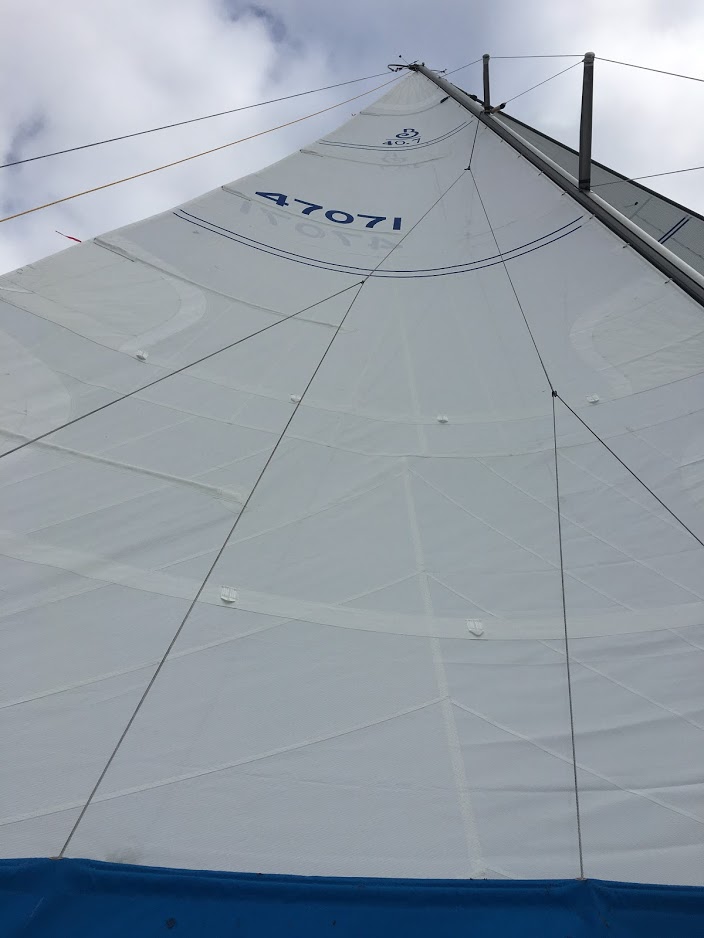
How to Measure for a New Mainsail
If you can read a tape measure you can measure your boat for a new Mainsail.
Purchasing a new Mainsail for your sailboat is one of those investments that every sailor will be faced with eventually. Sails don’t last for ever, even if you treat them like gold. Once you have decided to invest in new sails you may get that feeling of being over whelmed by the choices and the details involved. When deciding on a loft to work with make sure you choose a loft that will offer a good consultation on the cloth and sail feature choices as well as a design consultation if you want one.
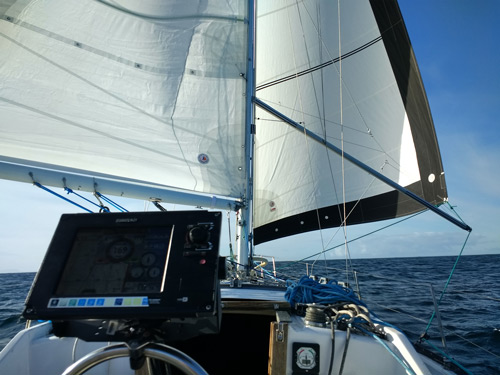
Jibs vs. Genoas
Get to know the difference!
Jibs and Genoas are triangular sails which are affixed to a stay in front of the mast. Typically they run from the head of the foremast to the bowsprit. Jibs and genoa’s are used in tandem with a mainsail to stabilize the vessel and are usually measured by their Luff Perpendicular percentage, that is, how much area within the fore-triangle they use.
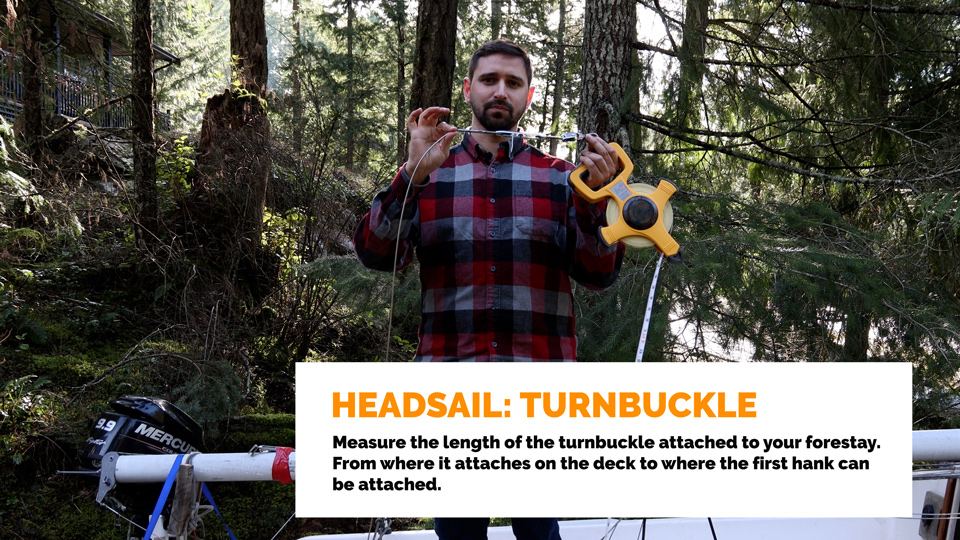
Taking Headsail Measurements with the Mast Down
Measuring your Headsail with your mast down is still possible.
Step by Step How To Instructions and Videos on how to collect your boats measurements for a your new headsail. Watch Jeremy Roszmann, sail designer, walk us through how to collecte great measurements to build a headsail with.
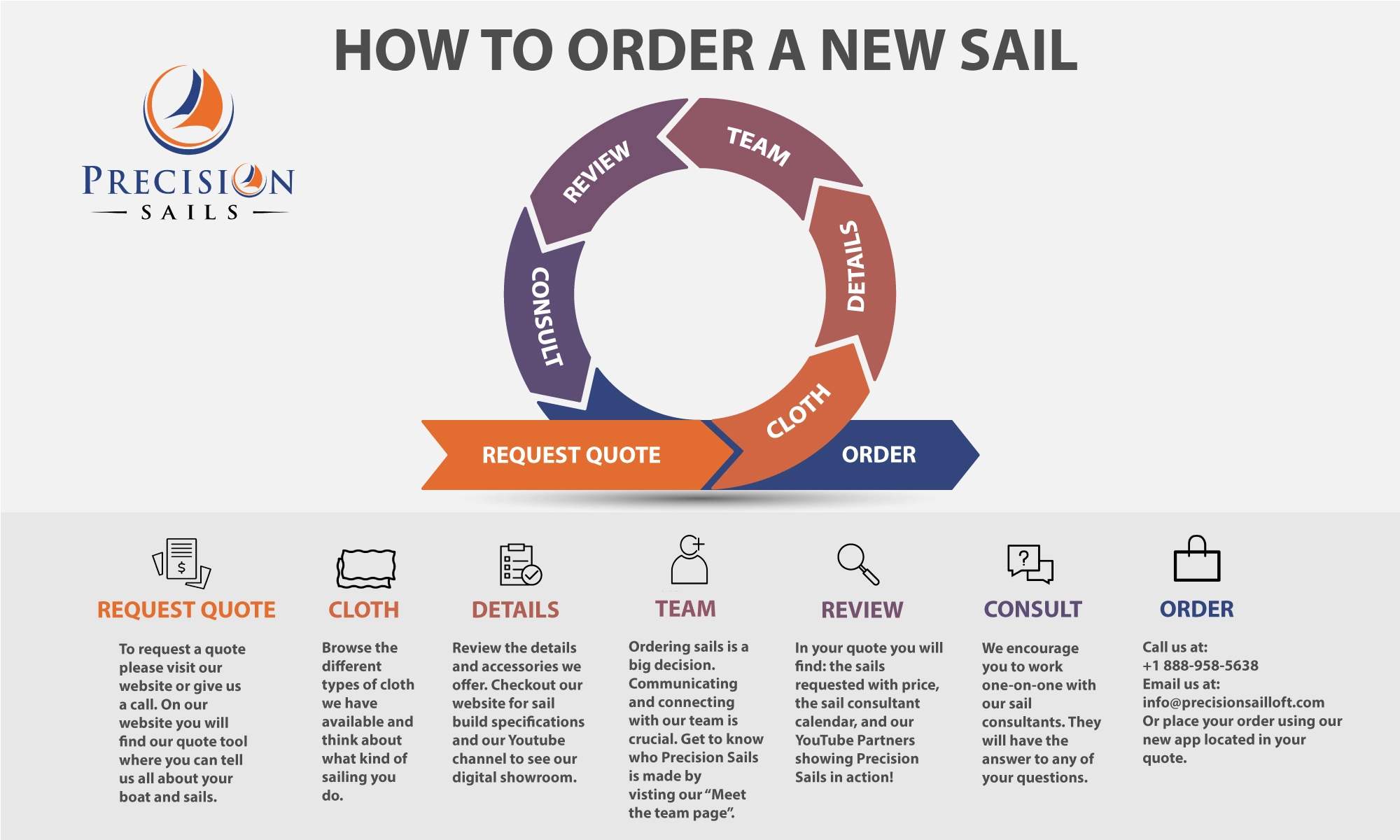
How To Measure for a New Spinnaker
Learn how to measure your boat and rig for a new spinnaker with our simple form.
Measuring your rig for a new spinnaker is easy. We need to know the location of your halyard, what your maximum hoist is, where the location you sheet to is located and what style. We also need to know if you have a bowsprit, plan to use a spinnaker sock, or other kind of furling system. Last but not least, you get to pick your colors!
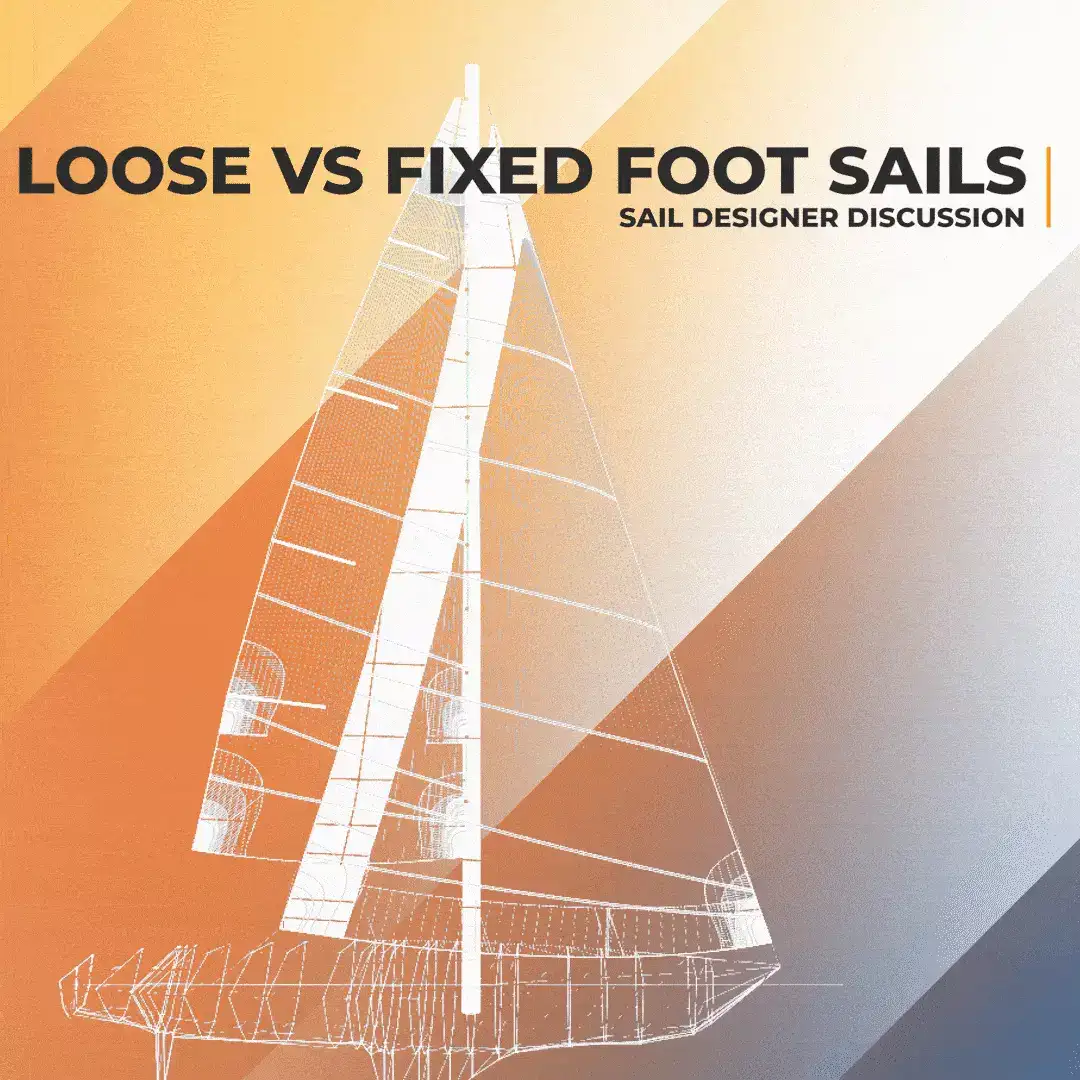
Mainsails: Loose Foot VS Fixed Foot
If you currently have a fixed footed mainsail read about the new modern design of a loose footed mainsail.
Sail design has come a long way in the past several decades. A loose footed mainsail is becoming the norm for most sailors. It allows for creating a better shaped sail. This increasings sail performance, efficency, and power. Having a loose-footed sail means having a much more versatile sail as far as trimming is concerned.
" * " indicates required fields
Thanks for telling us a bit about yourself and your boat. Our team will send you a preliminary quote based on information we have gathered from sailors similar to you.
We will give you a call in order to narrow down the options on your quote and improve the accuracy. If you want us to call you at a specific time, feel free to schedule a time on our calendar!
Thanks for telling us a bit about yourself and your boat. Our team will reach out to offer some suggestions and get started on finding you the perfect sail!
The Ultimate Guide to Sail Types and Rigs (with Pictures)
What's that sail for? Generally, I don't know. So I've come up with a system. I'll explain you everything there is to know about sails and rigs in this article.
What are the different types of sails? Most sailboats have one mainsail and one headsail. Typically, the mainsail is a fore-and-aft bermuda rig (triangular shaped). A jib or genoa is used for the headsail. Most sailors use additional sails for different conditions: the spinnaker (a common downwind sail), gennaker, code zero (for upwind use), and stormsail.
Each sail has its own use. Want to go downwind fast? Use a spinnaker. But you can't just raise any sail and go for it. It's important to understand when (and how) to use each sail. Your rigging also impacts what sails you can use.

On this page:
Different sail types, the sail plan of a bermuda sloop, mainsail designs, headsail options, specialty sails, complete overview of sail uses, mast configurations and rig types.
This article is part 1 of my series on sails and rig types. Part 2 is all about the different types of rigging. If you want to learn to identify every boat you see quickly, make sure to read it. It really explains the different sail plans and types of rigging clearly.

Guide to Understanding Sail Rig Types (with Pictures)
First I'll give you a quick and dirty overview of sails in this list below. Then, I'll walk you through the details of each sail type, and the sail plan, which is the godfather of sail type selection so to speak.
Click here if you just want to scroll through a bunch of pictures .
Here's a list of different models of sails: (Don't worry if you don't yet understand some of the words, I'll explain all of them in a bit)
- Jib - triangular staysail
- Genoa - large jib that overlaps the mainsail
- Spinnaker - large balloon-shaped downwind sail for light airs
- Gennaker - crossover between a Genoa and Spinnaker
- Code Zero or Screecher - upwind spinnaker
- Drifter or reacher - a large, powerful, hanked on genoa, but made from lightweight fabric
- Windseeker - tall, narrow, high-clewed, and lightweight jib
- Trysail - smaller front-and-aft mainsail for heavy weather
- Storm jib - small jib for heavy weather
I have a big table below that explains the sail types and uses in detail .
I know, I know ... this list is kind of messy, so to understand each sail, let's place them in a system.
The first important distinction between sail types is the placement . The mainsail is placed aft of the mast, which simply means behind. The headsail is in front of the mast.
Generally, we have three sorts of sails on our boat:
- Mainsail: The large sail behind the mast which is attached to the mast and boom
- Headsail: The small sail in front of the mast, attached to the mast and forestay (ie. jib or genoa)
- Specialty sails: Any special utility sails, like spinnakers - large, balloon-shaped sails for downwind use
The second important distinction we need to make is the functionality . Specialty sails (just a name I came up with) each have different functionalities and are used for very specific conditions. So they're not always up, but most sailors carry one or more of these sails.
They are mostly attached in front of the headsail, or used as a headsail replacement.
The specialty sails can be divided into three different categories:
- downwind sails - like a spinnaker
- light air or reacher sails - like a code zero
- storm sails

The parts of any sail
Whether large or small, each sail consists roughly of the same elements. For clarity's sake I've took an image of a sail from the world wide webs and added the different part names to it:

- Head: Top of the sail
- Tack: Lower front corner of the sail
- Foot: Bottom of the sail
- Luff: Forward edge of the sail
- Leech: Back edge of the sail
- Clew: Bottom back corner of the sail
So now we speak the same language, let's dive into the real nitty gritty.
Basic sail shapes
Roughly speaking, there are actually just two sail shapes, so that's easy enough. You get to choose from:
- square rigged sails
- fore-and-aft rigged sails
I would definitely recommend fore-and-aft rigged sails. Square shaped sails are pretty outdated. The fore-and-aft rig offers unbeatable maneuverability, so that's what most sailing yachts use nowadays.

Square sails were used on Viking longships and are good at sailing downwind. They run from side to side. However, they're pretty useless upwind.
A fore-and-aft sail runs from the front of the mast to the stern. Fore-and-aft literally means 'in front and behind'. Boats with fore-and-aft rigged sails are better at sailing upwind and maneuvering in general. This type of sail was first used on Arabic boats.
As a beginner sailor I confuse the type of sail with rigging all the time. But I should cut myself some slack, because the rigging and sails on a boat are very closely related. They are all part of the sail plan .
A sail plan is made up of:
- Mast configuration - refers to the number of masts and where they are placed
- Sail type - refers to the sail shape and functionality
- Rig type - refers to the way these sails are set up on your boat
There are dozens of sails and hundreds of possible configurations (or sail plans).
For example, depending on your mast configuration, you can have extra headsails (which then are called staysails).
The shape of the sails depends on the rigging, so they overlap a bit. To keep it simple I'll first go over the different sail types based on the most common rig. I'll go over the other rig types later in the article.
Bermuda Sloop: the most common rig
Most modern small and mid-sized sailboats have a Bermuda sloop configuration . The sloop is one-masted and has two sails, which are front-and-aft rigged. This type of rig is also called a Marconi Rig. The Bermuda rig uses a triangular sail, with just one side of the sail attached to the mast.
The mainsail is in use most of the time. It can be reefed down, making it smaller depending on the wind conditions. It can be reefed down completely, which is more common in heavy weather. (If you didn't know already: reefing is skipper terms for rolling or folding down a sail.)
In very strong winds (above 30 knots), most sailors only use the headsail or switch to a trysail.

The headsail powers your bow, the mainsail powers your stern (rear). By having two sails, you can steer by using only your sails (in theory - it requires experience). In any case, two sails gives you better handling than one, but is still easy to operate.
Let's get to the actual sails. The mainsail is attached behind the mast and to the boom, running to the stern. There are multiple designs, but they actually don't differ that much. So the following list is a bit boring. Feel free to skip it or quickly glance over it.
- Square Top racing mainsail - has a high performance profile thanks to the square top, optional reef points
- Racing mainsail - made for speed, optional reef points
- Cruising mainsail - low-maintenance, easy to use, made to last. Generally have one or multiple reef points.
- Full-Batten Cruising mainsail - cruising mainsail with better shape control. Eliminates flogging. Full-length battens means the sail is reinforced over the entire length. Generally have one or multiple reef points.
- High Roach mainsail - crossover between square top racing and cruising mainsail, used mostly on cats and multihulls. Generally have one or multiple reef points.
- Mast Furling mainsail - sails specially made to roll up inside the mast - very convenient but less control; of sail shape. Have no reef points
- Boom Furling mainsail - sails specially made to roll up inside the boom. Have no reef points.
The headsail is the front sail in a front-and-aft rig. The sail is fixed on a stay (rope, wire or rod) which runs forward to the deck or bowsprit. It's almost always triangular (Dutch fishermen are known to use rectangular headsail). A triangular headsail is also called a jib .
Headsails can be attached in two ways:
- using roller furlings - the sail rolls around the headstay
- hank on - fixed attachment
Types of jibs:
Typically a sloop carries a regular jib as its headsail. It can also use a genoa.
- A jib is a triangular staysail set in front of the mast. It's the same size as the fore-triangle.
- A genoa is a large jib that overlaps the mainsail.
What's the purpose of a jib sail? A jib is used to improve handling and to increase sail area on a sailboat. This helps to increase speed. The jib gives control over the bow (front) of the ship, making it easier to maneuver the ship. The mainsail gives control over the stern of the ship. The jib is the headsail (frontsail) on a front-and-aft rig.
The size of the jib is generally indicated by a number - J1, 2, 3, and so on. The number tells us the attachment point. The order of attachment points may differ per sailmaker, so sometimes J1 is the largest jib (on the longest stay) and sometimes it's the smallest (on the shortest stay). Typically the J1 jib is the largest - and the J3 jib the smallest.
Most jibs are roller furling jibs: this means they are attached to a stay and can be reefed down single-handedly. If you have a roller furling you can reef down the jib to all three positions and don't need to carry different sizes.

Originally called the 'overlapping jib', the leech of the genoa extends aft of the mast. This increases speed in light and moderate winds. A genoa is larger than the total size of the fore-triangle. How large exactly is indicated by a percentage.
- A number 1 genoa is typically 155% (it used to be 180%)
- A number 2 genoa is typically 125-140%
Genoas are typically made from 1.5US/oz polyester spinnaker cloth, or very light laminate.

This is where it gets pretty interesting. You can use all kinds of sails to increase speed, handling, and performance for different weather conditions.
Some rules of thumb:
- Large sails are typically good for downwind use, small sails are good for upwind use.
- Large sails are good for weak winds (light air), small sails are good for strong winds (storms).
Downwind sails
Thanks to the front-and-aft rig sailboats are easier to maneuver, but they catch less wind as well. Downwind sails are used to offset this by using a large sail surface, pulling a sailboat downwind. They can be hanked on when needed and are typically balloon shaped.
Here are the most common downwind sails:
- Big gennaker
- Small gennaker
A free-flying sail that fills up with air, giving it a balloon shape. Spinnakers are generally colorful, which is why they look like kites. This downwind sail has the largest sail area, and it's capable of moving a boat with very light wind. They are amazing to use on trade wind routes, where they can help you make quick progress.
Spinnakers require special rigging. You need a special pole and track on your mast. You attach the sail at three points: in the mast head using a halyard, on a pole, and on a sheet.
The spinnaker is symmetrical, meaning the luff is as long as its leech. It's designed for broad reaching.

Gennaker or cruising spinnaker
The Gennaker is a cross between the genoa and the spinnaker. It has less downwind performance than the spinnaker. It is a bit smaller, making it slower, but also easier to handle - while it remains very capable. The cruising spinnaker is designed for broad reaching.
The gennaker is a smaller, asymmetric spinnaker that's doesn't require a pole or track on the mast. Like the spinnaker, and unlike the genoa, the gennaker is set flying. Asymmetric means its luff is longer than its leech.
You can get big and small gennakers (roughly 75% and 50% the size of a true spinnaker).
Also called ...
- the cruising spinnaker
- cruising chute
- pole-less spinnaker
- SpinDrifter
... it's all the same sail.

Light air sails
There's a bit of overlap between the downwind sails and light air sails. Downwind sails can be used as light air sails, but not all light air sails can be used downwind.
Here are the most common light air sails:
- Spinnaker and gennaker
Drifter reacher
Code zero reacher.
A drifter (also called a reacher) is a lightweight, larger genoa for use in light winds. It's roughly 150-170% the size of a genoa. It's made from very lightweight laminated spinnaker fabric (1.5US/oz).
Thanks to the extra sail area the sail offers better downwind performance than a genoa. It's generally made from lightweight nylon. Thanks to it's genoa characteristics the sail is easier to use than a cruising spinnaker.
The code zero reacher is officially a type of spinnaker, but it looks a lot like a large genoa. And that's exactly what it is: a hybrid cross between the genoa and the asymmetrical spinnaker (gennaker). The code zero however is designed for close reaching, making it much flatter than the spinnaker. It's about twice the size of a non-overlapping jib.

A windseeker is a small, free-flying staysail for super light air. It's tall and thin. It's freestanding, so it's not attached to the headstay. The tack attaches to a deck pad-eye. Use your spinnakers' halyard to raise it and tension the luff.
It's made from nylon or polyester spinnaker cloth (0.75 to 1.5US/oz).
It's designed to guide light air onto the lee side of the main sail, ensuring a more even, smooth flow of air.
Stormsails are stronger than regular sails, and are designed to handle winds of over 45 knots. You carry them to spare the mainsail. Sails
A storm jib is a small triangular staysail for use in heavy weather. If you participate in offshore racing you need a mandatory orange storm jib. It's part of ISAF's requirements.
A trysail is a storm replacement for the mainsail. It's small, triangular, and it uses a permanently attached pennant. This allows it to be set above the gooseneck. It's recommended to have a separate track on your mast for it - you don't want to fiddle around when you actually really need it to be raised ... now.

| Sail | Type | Shape | Wind speed | Size | Wind angle |
|---|---|---|---|---|---|
| Bermuda | mainsail | triangular, high sail | < 30 kts | ||
| Jib | headsail | small triangular foresail | < 45 kts | 100% of foretriangle | |
| Genoa | headsail | jib that overlaps mainsail | < 30 kts | 125-155% of foretriangle | |
| Spinnaker | downwind | free-flying, balloon shape | 1-15 kts | 200% or more of mainsail | 90°–180° |
| Gennaker | downwind | free-flying, balloon shape | 1-20 kts | 85% of spinnaker | 75°-165° |
| Code Zero or screecher | light air & upwind | tight luffed, upwind spinnaker | 1-16 kts | 70-75% of spinnaker | |
| Storm Trysail | mainsail | small triangular mainsail replacement | > 45 kts | 17.5% of mainsail | |
| Drifter reacher | light air | large, light-weight genoa | 1-15 kts | 150-170% of genoa | 30°-90° |
| Windseeker | light air | free-flying staysail | 0-6 kts | 85-100% of foretriangle | |
| Storm jib | strong wind headsail | low triangular staysail | > 45 kts | < 65% height foretriangle |
Why Use Different Sails At All?
You could just get the largest furling genoa and use it on all positions. So why would you actually use different types of sails?
The main answer to that is efficiency . Some situations require other characteristics.
Having a deeply reefed genoa isn't as efficient as having a small J3. The reef creates too much draft in the sail, which increases heeling. A reefed down mainsail in strong winds also increases heeling. So having dedicated (storm) sails is probably a good thing, especially if you're planning more demanding passages or crossings.
But it's not just strong winds, but also light winds that can cause problems. Heavy sails will just flap around like laundry in very light air. So you need more lightweight fabrics to get you moving.
What Are Sails Made Of?
The most used materials for sails nowadays are:
- Dacron - woven polyester
- woven nylon
- laminated fabrics - increasingly popular
Sails used to be made of linen. As you can imagine, this is terrible material on open seas. Sails were rotting due to UV and saltwater. In the 19th century linen was replaced by cotton.
It was only in the 20th century that sails were made from synthetic fibers, which were much stronger and durable. Up until the 1980s most sails were made from Dacron. Nowadays, laminates using yellow aramids, Black Technora, carbon fiber and Spectra yarns are more and more used.
Laminates are as strong as Dacron, but a lot lighter - which matters with sails weighing up to 100 kg (220 pounds).
By the way: we think that Viking sails were made from wool and leather, which is quite impressive if you ask me.
In this section of the article I give you a quick and dirty summary of different sail plans or rig types which will help you to identify boats quickly. But if you want to really understand it clearly, I really recommend you read part 2 of this series, which is all about different rig types.
You can't simply count the number of masts to identify rig type But you can identify any rig type if you know what to look for. We've created an entire system for recognizing rig types. Let us walk you through it. Read all about sail rig types
As I've said earlier, there are two major rig types: square rigged and fore-and-aft. We can divide the fore-and-aft rigs into three groups:
- Bermuda rig (we have talked about this one the whole time) - has a three-sided mainsail
- Gaff rig - has a four-sided mainsail, the head of the mainsail is guided by a gaff
- Lateen rig - has a three-sided mainsail on a long yard

There are roughly four types of boats:
- one masted boats - sloop, cutter
- two masted boats - ketch, schooner, brig
- three masted - barque
- fully rigged or ship rigged - tall ship
Everything with four masts is called a (tall) ship. I think it's outside the scope of this article, but I have written a comprehensive guide to rigging. I'll leave the three and four-masted rigs for now. If you want to know more, I encourage you to read part 2 of this series.
One-masted rigs
Boats with one mast can have either one sail, two sails, or three or more sails.
The 3 most common one-masted rigs are:
- Cat - one mast, one sail
- Sloop - one mast, two sails
- Cutter - one mast, three or more sails
1. Gaff Cat

2. Gaff Sloop

Two-masted rigs
Two-masted boats can have an extra mast in front or behind the main mast. Behind (aft of) the main mast is called a mizzen mast . In front of the main mast is called a foremast .
The 5 most common two-masted rigs are:
- Lugger - two masts (mizzen), with lugsail (cross between gaff rig and lateen rig) on both masts
- Yawl - two masts (mizzen), fore-and-aft rigged on both masts. Main mast much taller than mizzen. Mizzen without mainsail.
- Ketch - two masts (mizzen), fore-and-aft rigged on both masts. Main mast with only slightly smaller mizzen. Mizzen has mainsail.
- Schooner - two masts (foremast), generally gaff rig on both masts. Main mast with only slightly smaller foremast. Sometimes build with three masts, up to seven in the age of sail.
- Brig - two masts (foremast), partially square-rigged. Main mast carries small lateen rigged sail.

4. Schooner

5. Brigantine

This article is part 1 of a series about sails and rig types If you want to read on and learn to identify any sail plans and rig type, we've found a series of questions that will help you do that quickly. Read all about recognizing rig types
Related Questions
What is the difference between a gennaker & spinnaker? Typically, a gennaker is smaller than a spinnaker. Unlike a spinnaker, a gennaker isn't symmetric. It's asymmetric like a genoa. It is however rigged like a spinnaker; it's not attached to the forestay (like a jib or a genoa). It's a downwind sail, and a cross between the genoa and the spinnaker (hence the name).
What is a Yankee sail? A Yankee sail is a jib with a high-cut clew of about 3' above the boom. A higher-clewed jib is good for reaching and is better in high waves, preventing the waves crash into the jibs foot. Yankee jibs are mostly used on traditional sailboats.
How much does a sail weigh? Sails weigh anywhere between 4.5-155 lbs (2-70 kg). The reason is that weight goes up exponentially with size. Small boats carry smaller sails (100 sq. ft.) made from thinner cloth (3.5 oz). Large racing yachts can carry sails of up to 400 sq. ft., made from heavy fabric (14 oz), totaling at 155 lbs (70 kg).
What's the difference between a headsail and a staysail? The headsail is the most forward of the staysails. A boat can only have one headsail, but it can have multiple staysails. Every staysail is attached to a forward running stay. However, not every staysail is located at the bow. A stay can run from the mizzen mast to the main mast as well.
What is a mizzenmast? A mizzenmast is the mast aft of the main mast (behind; at the stern) in a two or three-masted sailing rig. The mizzenmast is shorter than the main mast. It may carry a mainsail, for example with a ketch or lugger. It sometimes doesn't carry a mainsail, for example with a yawl, allowing it to be much shorter.
Special thanks to the following people for letting me use their quality photos: Bill Abbott - True Spinnaker with pole - CC BY-SA 2.0 lotsemann - Volvo Ocean Race Alvimedica and the Code Zero versus SCA and the J1 - CC BY-SA 2.0 Lisa Bat - US Naval Academy Trysail and Storm Jib dry fit - CC BY-SA 2.0 Mike Powell - White gaff cat - CC BY-SA 2.0 Anne Burgess - Lugger The Reaper at Scottish Traditional Boat Festival
Hi, I stumbled upon your page and couldn’t help but notice some mistakes in your description of spinnakers and gennakers. First of all, in the main photo on top of this page the small yacht is sailing a spinnaker, not a gennaker. If you look closely you can see the spinnaker pole standing on the mast, visible between the main and headsail. Further down, the discription of the picture with the two German dinghies is incorrect. They are sailing spinnakers, on a spinnaker pole. In the farthest boat, you can see a small piece of the pole. If needed I can give you the details on the difference between gennakers and spinnakers correctly?
Hi Shawn, I am living in Utrecht I have an old gulf 32 and I am sailing in merkmeer I find your articles very helpful Thanks
Thank you for helping me under stand all the sails there names and what there functions were and how to use them. I am planning to build a trimaran 30’ what would be the best sails to have I plan to be coastal sailing with it. Thank you
Hey Comrade!
Well done with your master piece blogging. Just a small feedback. “The jib gives control over the bow of the ship, making it easier to maneuver the ship. The mainsail gives control over the stern of the ship.” Can you please first tell the different part of a sail boat earlier and then talk about bow and stern later in the paragraph. A reader has no clue on the newly introduced terms. It helps to keep laser focused and not forget main concepts.
Shawn, I am currently reading How to sail around the World” by Hal Roth. Yes, I want to sail around the world. His book is truly grounded in real world experience but like a lot of very knowledgable people discussing their area of expertise, Hal uses a lot of terms that I probably should have known but didn’t, until now. I am now off to read your second article. Thank You for this very enlightening article on Sail types and their uses.
Shawn Buckles
HI CVB, that’s a cool plan. Thanks, I really love to hear that. I’m happy that it was helpful to you and I hope you are of to a great start for your new adventure!
Hi GOWTHAM, thanks for the tip, I sometimes forget I haven’t specified the new term. I’ve added it to the article.
Nice article and video; however, you’re mixing up the spinnaker and the gennaker.
A started out with a question. What distinguishes a brig from a schooner? Which in turn led to follow-up questions: I know there are Bermuda rigs and Latin rig, are there more? Which in turn led to further questions, and further, and further… This site answers them all. Wonderful work. Thank you.
Great post and video! One thing was I was surprised how little you mentioned the Ketch here and not at all in the video or chart, and your sample image is a large ship with many sails. Some may think Ketch’s are uncommon, old fashioned or only for large boats. Actually Ketch’s are quite common for cruisers and live-aboards, especially since they often result in a center cockpit layout which makes for a very nice aft stateroom inside. These are almost exclusively the boats we are looking at, so I was surprised you glossed over them.
Love the article and am finding it quite informative.
While I know it may seem obvious to 99% of your readers, I wish you had defined the terms “upwind” and “downwind.” I’m in the 1% that isn’t sure which one means “with the wind” (or in the direction the wind is blowing) and which one means “against the wind” (or opposite to the way the wind is blowing.)
paul adriaan kleimeer
like in all fields of syntax and terminology the terms are colouual meaning local and then spead as the technology spread so an history lesson gives a floral bouque its colour and in the case of notical terms span culture and history adds an detail that bring reverence to the study simply more memorable.
Hi, I have a small yacht sail which was left in my lock-up over 30 years ago I basically know nothing about sails and wondered if you could spread any light as to the make and use of said sail. Someone said it was probably originally from a Wayfayer wooden yacht but wasn’t sure. Any info would be must appreciated and indeed if would be of any use to your followers? I can provide pics but don’t see how to include them at present
kind regards
Leave a comment
You may also like, 17 sailboat types explained: how to recognize them.
Ever wondered what type of sailboat you're looking at? Identifying sailboats isn't hard, you just have to know what to look for. In this article, I'll help you.

How Much Sailboats Cost On Average (380+ Prices Compared)
- Setting sail: A beginner's guide to sailing a yacht
Sailing a yacht, with its billowing sails and the gentle sound of water against the hull, is an enchanting experience that beckons adventurers and dreamers alike. Whether you've always been drawn to the allure of the open waters or you simply seek a new and exhilarating hobby, setting sail on a yacht is an extraordinary journey that awaits you.
The allure of sailing
There's something truly captivating about sailing on a boat, where the wind becomes your guide and the vast expanse of the ocean becomes your playground. The sense of freedom and connection with nature is unparalleled as you navigate the waters, leaving behind the noise and haste of everyday life.
Preparing to sail
Before embarking on your sailing adventure, it's essential to make necessary preparations. Learn about weather conditions, tides, and navigational charts to ensure a safe and enjoyable voyage. Familiarize yourself with the yacht's equipment, safety protocols, and communication systems.

Understanding the basics of sailing
For beginners, learning the fundamentals of sailboat handling and terminology is crucial. Discover the various parts of a sailboat, such as the mast, rigging, sails, and rudder, and understand how they work together to catch the wind and propel you forward.
Read our top notch articles on topics such as sailing, sailing tips and destinations in our Magazine.
Steer with confidence: How to sail a yacht
Mastering the art of steering a yacht is both empowering and rewarding. Learn the techniques to control the sails, adjust the angle, and harness the wind's power to navigate your vessel smoothly and efficiently.
Hoist the sails: Sailing techniques for beginners
As a novice sailor, it's essential to explore different sailing techniques. Learn how to tack and jibe, sail upwind and downwind, and handle different wind conditions. Practice basic maneuvers until they become second nature, building your confidence on the water.
Navigating the waters: Where to sail
The world's oceans and waterways offer a vast array of sailing destinations. Discover scenic coastlines, picturesque islands, and hidden coves as you plan your sailing routes. Research the best sailing locations that suit your skill level and preferences.
Yacht at sea.
Safety first: Sailing precautions and best practices
Safety should always be a top priority when sailing a yacht. Familiarize yourself with life-saving equipment, emergency procedures, and safety checks before each voyage. Understand how to respond to unexpected challenges and ensure the well-being of yourself and your crew.
Weathering the storm: Dealing with challenging conditions
Mother Nature can be unpredictable, and weather conditions can change rapidly at sea. Learn how to interpret weather forecasts and respond to adverse conditions. Having the knowledge and preparedness to navigate through challenging weather ensures a safe and successful sailing trip.
Sailing gear and equipment: The essentials for your voyage
Investing in quality sailing gear and equipment enhances your comfort and safety on board. From life jackets and harnesses to navigational tools and communication devices, having the right gear ensures a smooth and enjoyable journey.
A smooth sail: Troubleshooting and problem solving
In the world of sailing, unexpected challenges may arise. Knowing how to troubleshoot common issues, such as tangled rigging or minor equipment malfunctions, empowers you to handle situations effectively and continue your voyage with confidence.
So you want to get into sailing?
If you're drawn to the world of sailing but don't know where to begin, seek out sailing schools, clubs, and organizations that offer introductory courses and sailing experiences. Engaging with the sailing community provides invaluable guidance and support as you embark on your sailing journey.
Making sailing accessible: Sailing schools and training
Sailing schools offer structured courses led by experienced instructors, providing you with hands-on learning and a comprehensive understanding of sailing techniques. Consider enrolling in a sailing course to acquire the skills and knowledge needed to sail with confidence.
Sailing community: Building connections and finding support
Joining a sailing community opens up a world of camaraderie and shared experiences. Connect with fellow sailors, participate in sailing events and regattas, and exchange tips and stories with like-minded individuals who share your passion for the sea.
The joy of sailing: An sdventure like no other
As you set sail and immerse yourself in the world of yachting, you'll discover the true joy of sailing. The sense of accomplishment, the thrill of mastering the winds, and the breathtaking vistas of the open sea create memories that will last a lifetime.
So what are you waiting for? Take a look at our range of charter boats and head to some of our favourite sailing destinations .
Faqs about sailing.
What are the common sailing terms I should know?
Brush up on basic sailing terms like port, starboard, bow, stern, tacking, jibing, and points of sail.
Can I sail a yacht alone or do I need a crew?
While experienced sailors may sail solo, it's advisable for beginners to have a small crew for safety and assistance.
Is sailing a yacht physically demanding?
Sailing can require some physical effort, but modern yachts and equipment make it accessible to people of various fitness levels.

Types of Sails: A Comprehensive Guide
In the enchanting world of sailboat dynamics, where the dance between wind and water takes center stage, the significance of sails cannot be overstated. Like the wings of a bird, these meticulously crafted sails unfurl to catch the slightest whisper of breeze, converting it into a powerful forward thrust that carries us through the vast expanse of the ocean. They are the very essence of a sailboat, the conduits through which dreams and aspirations set sail.
Join us on a captivating voyage as we unfurl the secrets of the myriad types of sails adorning the mastheads of sailboats across the globe. From the grandeur of the mainsail, proudly dominating the skyline, to the nimble headsails that steer with precision, and the enigmatic mizzensails that add an extra touch of finesse, we shall embark on a comprehensive exploration of the diverse array of sail types.
Different Types of Sails on a Sailboat: Why Use Different Sails at All?
Different sail types for different wind conditions.
Triangular sails, such as the mainsail and jib, are commonly used on modern sailboats to optimize performance when sailing upwind. The shape of these sails helps to create lift, which propels the boat forward even against the wind’s direction. The mainsail is attached to the mast at the front edge and a boom at the bottom. Jibs, on the other hand, are headsails that are attached to a stay near the bow of the boat.
Balloon sails, like spinnaker sails, are designed for downwind sailing and catching more wind to increase boat speed when sailing with the wind behind it. These types of sails have a large surface area that allows them to catch more wind than triangular sails. Spinnaker sails can come in different shapes depending on their intended use and can be flown from a spinnaker pole or directly from the bow.
Sail Plans: Different Combinations for Different Boats
Sail plans refer to how different types of sails are arranged and combined on a sailing craft. Sail plans can vary depending on specific design features and intended use of boats. For example, some boats may have multiple masts with several triangular-shaped sails attached while others may only have one mast with one triangular sail (mainsail) and one square sail (spinnaker). The combination of different types of sails can also affect how easy it is to handle a boat under certain conditions.
Understanding Sail Anatomy
Head, tack, foot, luff, leech, and clew. These are the different parts that make up a sail’s anatomy. But what exactly are they and why are they important? In this section, we’ll take a closer look at each part and how it contributes to the performance of a sailboat.

The Head: The Top of the Sail
Starting from the top, we have the head of the sail. This is where the halyard (the rope or wire used to hoist the sail) is attached. The head determines how high or low the sail sits on its mast. A higher head means more power but less control over the sail’s shape. Conversely, a lower head provides better control but less power.
The Tack: The Lower Front Corner of the Sail
Next is the tack which is found at the lower front corner of most sails. It’s where one end of a line called a “sheet” attaches to control how much wind enters through this corner of your sail. Adjusting your sheet will affect your boat’s speed and direction.
The Foot: The Bottom of the Sail
At the bottom edge of any sail lies its foot which helps determine its overall shape and size. Generally speaking, longer feet result in larger sails that provide more power while shorter feet result in smaller sails with better maneuverability.
The Luff: The Forward Edge of the Sail
The forward edge of any sail is called its luff which runs along its mast track or forestay depending on what type of rigging you have set up on your boat. It helps maintain proper airflow over your sails by keeping them from flapping around too much in high winds.
The Leech: The Back Edge of Your Sail
Opposite from your luff is your leech – or back edge – which helps create lift by allowing air to flow smoothly over your sail. A longer leech will result in a more powerful sail, while a shorter one will provide better control and maneuverability.
The Clew: The Bottom Back Corner of Your Sail
Lastly, we have the clew which is found at the bottom back corner of most sails. It’s where the other end of your sheet attaches to control how much wind enters through this corner of your sail. Adjusting your sheet here can affect how well you’re able to steer your boat.
Primary Sail Types
The main sail is attached to the main mast and boom and can be adjusted to match the wind conditions. Its main purpose is to keep the boat steady and under control by providing stability to the stern (back) of the vessel.
There are several variations of mainsails that sailors can choose from depending on their needs. One popular type of mainsail is an in-mast furling mainsail. This type of sail can be easily furled and unfurled by pulling a line, making it ideal for short-handed sailing or cruising. Another variation is a slab reefing mainsail, which has horizontal strips called battens that help maintain its shape. Finally, there is also a boom furling mainsail, which uses a roller system inside the boom to make it easier to handle.
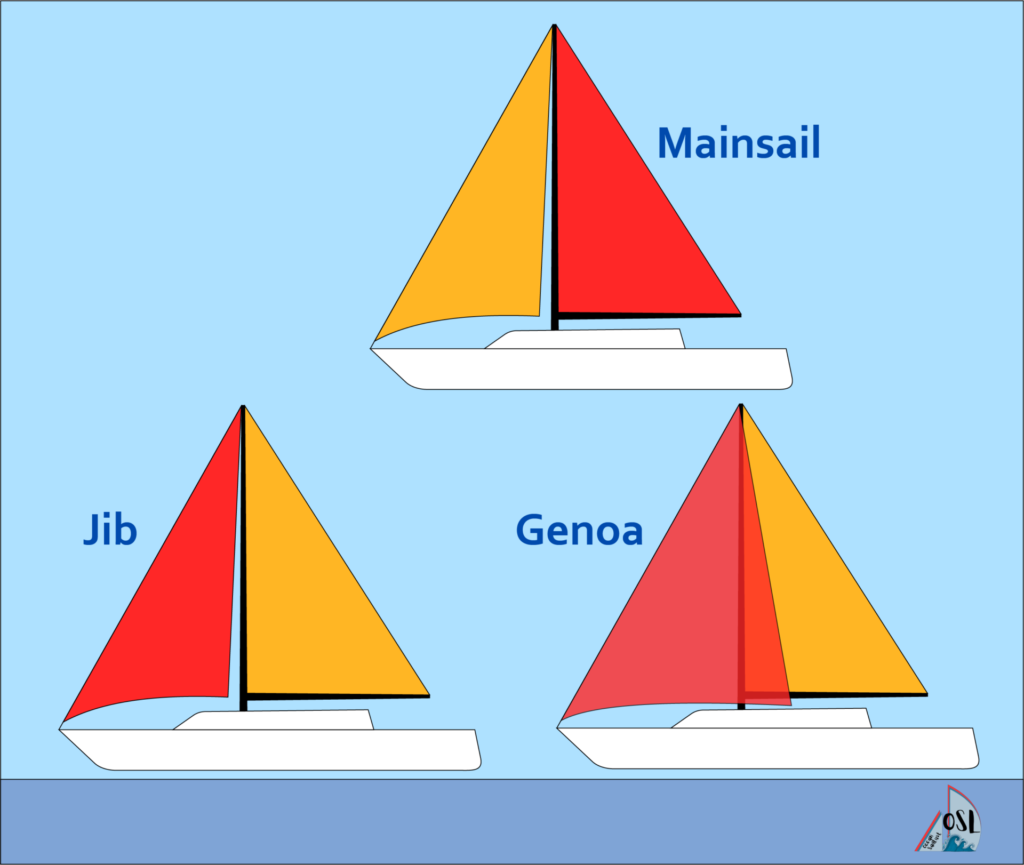
A headsail is any sail located forward of the mast on a sailing vessel. These sails are designed to work in conjunction with the main sail to provide optimal performance under varying wind conditions. There are several types of headsails available, each with its own unique characteristics and purposes.
One popular type of headsail is known as a genoa. This large foresail extends beyond the mast and overlaps with the main sail, providing additional power when sailing upwind or reaching across wind angles. Genoas come in various sizes ranging from 110% up to 150%, depending on how much overlap you want.
Another common type of headsail is called a jib. This smaller foresail does not overlap with the main sail but instead works in conjunction with it. The jib is typically used in higher wind conditions when a smaller sail area is needed to maintain control of the boat.
A staysail is a smaller sail located between the mast and the forestay. This type of headsail is typically used on larger boats to provide additional power when sailing upwind or reaching across wind angles. Staysails are often used in conjunction with other sails, such as a genoa or main sail.
Finally, there is also a mizzensail, which is located aft of the main mast on ketches and yawls. This sail provides additional power when sailing downwind or reaching across wind angles. Mizzensails come in various sizes and can be either fully battened or free-flying.
Lightwind Sails
Spinnaker sails are a type of downwind sail that can be used to increase boat speed when sailing in light winds. They are typically used in wind conditions below 10 knots, which are considered light air sails. Spinnakers come in two types: symmetrical and asymmetrical.

Symmetrical vs Asymmetrical Spinnaker
The symmetrical spinnaker is designed to sail directly downwind or with the wind coming from behind the boat. It is shaped like a balloon, with equal amounts of material on both sides of the sail. The sail is attached to a spinnaker pole, which extends out from the mast and holds the sail away from the boat.
Asymmetrical spinnakers, on the other hand, are designed for sailing at angles off the wind. They have an uneven shape, with more material on one side than the other. This design allows them to be flown without a spinnaker pole, making them easier to handle for smaller crews.
Another type of downwind sail is called a gennaker. Gennakers are similar to asymmetrical spinnakers but have a hybrid characteristic between a spinnaker and a genua. They are designed for reaching or running downwind at higher speeds than traditional cruising chutes or asymmetric spinnakers.
For those who prefer an even more user-friendly option than asymmetrical spinnakers or gennakers, parasailors might be what you’re looking for! A parasailor combines aspects of both a traditional spinnaker and a parachute into one easy-to-use package. The unique design of this sail makes it ideal for use in light winds when other sails may not perform well enough.
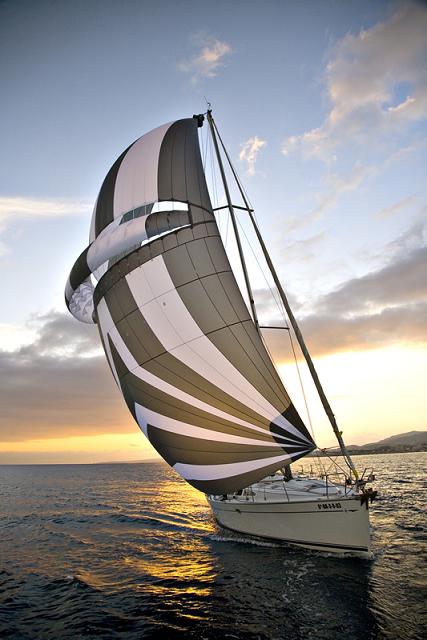
Finally, there’s another type of upwind/downwind sail called the code zero. Code zeros are designed to be used in light winds when sailing upwind, but they can also be used for reaching and running downwind. These sails have a flat shape that allows them to generate lift even in very light wind conditions.
Heavy Weather Sails
Heavy weather sailing is a challenging and potentially dangerous activity. The use of heavy weather sails, such as trysails, is crucial to ensure the safety of sailors and their vessels.
A trysail is a small triangular sail made of heavy-duty material, typically spinnaker cloth or other lightweight fabric. It is designed to be used in stormy weather conditions when winds are high and the seas are rough.
The role of a trysail is to provide an alternative source of propulsion when the main sail or jib cannot be used. In addition, it helps reduce the heeling effect on the vessel caused by strong winds. Trysails are rigged using a separate halyard and can be set up quickly when needed.
A trysail should be used in severe weather conditions when winds exceed 40 knots or more. It is recommended that sailors practice setting up their trysail before they need it so that they can do it quickly and efficiently in an emergency situation.

Another type of heavy weather sail that every sailor should have on board is a storm jib. This sail is typically much smaller than a regular jib and made from heavier materials such as Dacron or nylon. Its purpose is to provide additional stability during high wind speeds and rough seas.
The features of a storm jib include its size, shape, and weight distribution. It has a large luff (the leading edge) which allows it to be hoisted higher up on the rigging than other sails. This helps keep the boat stable during high-speed sailing in strong winds.
A storm jib should be used in extreme weather conditions where wind speeds exceed 50 knots or more. When using this sail, it is important to ensure that the halyard is properly tensioned and that the sail is sheeted in tightly. This will help prevent any unnecessary movement or fluttering of the sail.
Overview Common Sail Types
100% of mainsail
Light – High
100% of foretriangle
Moderate – High
triangular, overlapping
110% – 150% of foretriangle
Light – Moderate
60% – 80% of foretriangle
Close Reach – Broad Reach
Lightwind, Downwind
balloon shape, free flying
200% of mainsail (or even more)
Broad Reach, Running
parachute shape
100% of spinnaker
80% – 85% of spinnaker
Lightwind, Upwind
75% of spinnaker
30% – 60% of mainsail
Mainsail, heavy weather
17.5% of mainsail (or less)
Headsail, heavy weather
max. 65% of the hight of the foretriangle
Unconventional Sails
Wing sails are a type of sail design that is not commonly used in traditional sailboat designs. They are essentially vertical airfoils that generate lift and propulsion by directing the wind over the surface of the sail. Wing sails have become increasingly popular in modern sailing craft, particularly in high-performance racing boats.
One of the main advantages of wing sails is their ability to produce a significant amount of power with very little heeling force. This means that they can be used effectively in high-wind conditions without causing the boat to tip over. Additionally, wing sails are highly efficient at sailing upwind, which allows sailors to point higher into the wind than with other types of sails.
While wing sails may seem like a relatively new concept, they have actually been around for quite some time. The first recorded use of a wing sail was by German engineer Wolfgang Zimmermann in 1959. Since then, many different variations on the design have been developed and tested.

Kite sails are another unconventional type of sail that has gained popularity in recent years. Unlike traditional downwind sails such as spinnaker or parasailors, kite sails are flown from a line attached to the bow of the boat and do not require a mast or boom.
Sail Materials and Technology
Traditional sail materials.
Sails have been used for thousands of years to harness the power of the wind and propel boats across water. Traditional sail materials were flax, hemp, or cotton. These natural fibers were woven together to create a strong, yet flexible material that could withstand the harsh conditions at sea. However, as technology advanced and sailors began to demand more from their sails, new materials were developed.
Modern Sail Materials
Modern sailboats use synthetic materials such as polyester, nylon, or laminated fabrics for their sails. These materials are lightweight and incredibly strong, allowing sailors to achieve greater speeds with less effort. They are also more durable than traditional sail materials and can withstand prolonged exposure to sunlight and saltwater.
Popular Sail and Mast Configurations

The sloop rig is one of the most popular sail plans for modern sailboats. It features a single mast and one headsail, like a jib or genoa. The mainsail is typically triangular in shape and hoisted up the main mast using a backstay to support it. The jib or genoa is attached to the forestay that runs from the top of the mast to the bow of the boat.
Another popular sail plan is the cutter rig, which also features a single mast but has two headsails – an overlapping jib and a smaller staysail. The mainsail is still triangular in shape and hoisted up the main mast with a backstay for support.
Moving onto two-masted rigs, we have ketch rig, which features a main mast and a shorter mizzen mast located in front of the rudder. The mainsail is still triangular in shape and hoisted up the main mast with a backstay for support, while the mizzen sail is generally smaller and triangular or quadrilateral in shape.
Lastly, we have the yawl rig which is similar to the ketch rig but has its shorter mizzenmast located aft of the rudder. The mainsail is still triangular in shape and hoisted up the main mast with a backstay for support, while the mizzen sail is generally smaller and triangular or quadrilateral in shape.
Conclusion: Understanding the Different Types of Sails
Understanding the Different Types of Sails is crucial for any sailor who wants to optimize their performance and safety on the water. Whether you’re racing, cruising or simply enjoying a day out on your sailboat, having the right sails for the conditions can make all the difference.
Ultimately, understanding the different types of sails is essential for any sailor looking to improve their skills on the water. By selecting the right sail for your boat and conditions, you can optimize your performance while staying safe and comfortable during your time at sea.
So whether you’re a seasoned sailor or just starting out, take some time to explore the various types of sails available and find the ones that work best for you. With a little knowledge and experience under your belt, you’ll be well on your way to mastering this exciting sport!
Similar Posts

Mainsail Furling Systems – Which one is right for you?
With the variety of options of mainsail furling systems available, including slab, in-boom, and in-mast systems, it can be challenging to determine which one best suits your needs. In this comprehensive guide, we will explore the pros and cons of each system, enabling you to make an informed decision that aligns with your sailing requirements….
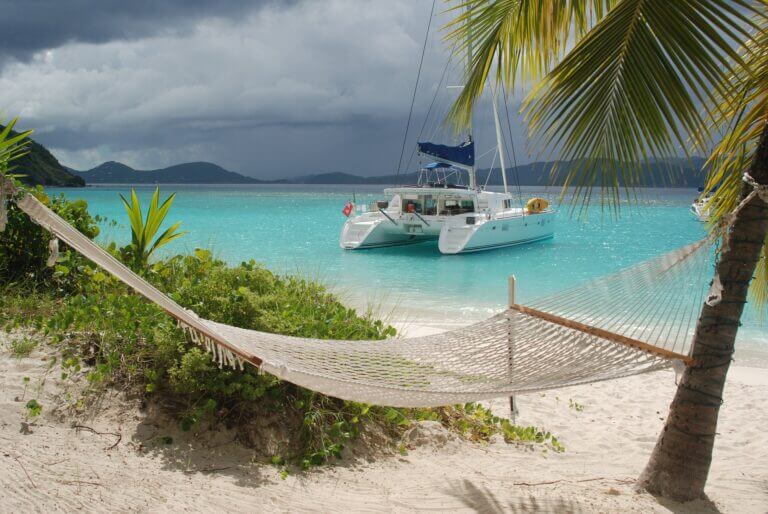
Advantages of Catamaran Sailboat Charter
A catamaran sailboat charter is an exciting way to explore the beauty of the sea. Whether you are an experienced sailor or a first-timer, booking a catamaran sailboat charter has a lot of advantages that you can enjoy. In this article, we will discuss the advantages of booking a catamaran sailboat charter, so that you…
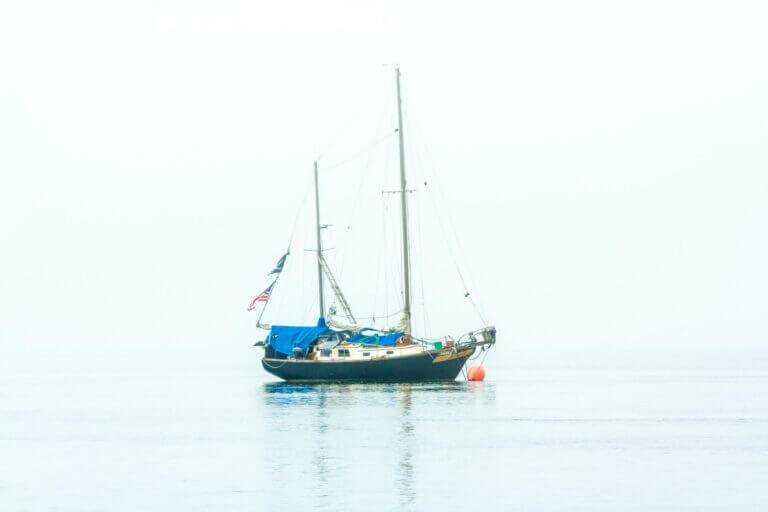
What is a Ketch Sailboat?
Ketch boats are frequently seen in certain regions and offer various advantages in terms of handling. However, what is a ketch and how does it stand out? A ketch is a sailboat with two masts. The mainmast is shorter than the mast on a sloop, and the mizzenmast aft is shorter than the mainmast. Ketches…

What is a Keel?: The Backbone of a Ship
As ships sail through tumultuous seas, their stability and maneuverability are tested to the fullest extent. The intricate design and engineering that go into a ship’s construction ensure that it can withstand the forces of nature and navigate through any challenging conditions. One of the most critical components of a ship’s design is the keel,…

Basic Sailing Terminology: Sailboat Parts Explained
Sailing is a timeless activity that has captivated the hearts of adventurous souls for centuries. But, let’s face it, for beginners, sailing can be as intimidating as trying to navigate through a dark, labyrinthine maze with a blindfold on. The vast array of sailing terminology, sailboat parts and jargon can seem like a foreign language…
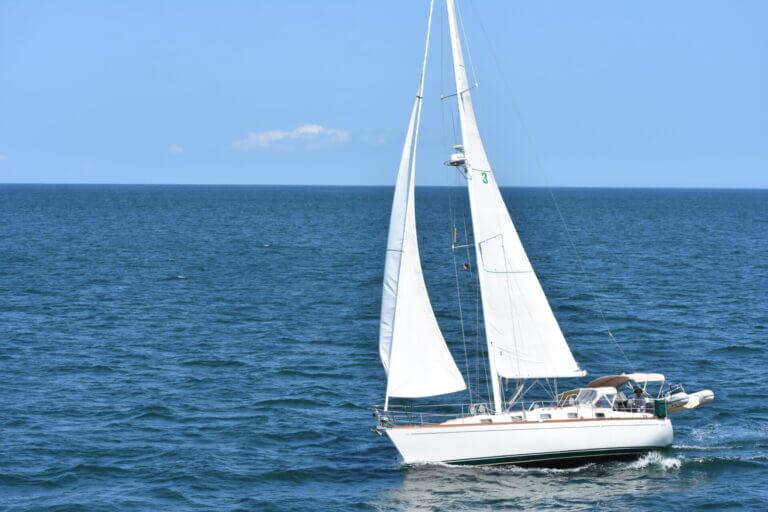
What is a Sloop? Definition, Types and History
A sloop is a type of sailboat that has a single mast and a fore-and-aft rig. Sloops are a type of sailboat that has been around for centuries. They are known for their versatility and ease of handling, making them popular among sailors of all skill levels. Sloops have a single mast and a fore-and-aft…
Better Sailing

Sailboat Vs Yacht: What is The Difference?
Many boaters use the terms “sailboat” and “yacht” interchangeably when they are actually quite distinct. A yacht is a larger boat or ship that is used for recreational purposes. The term “yacht” is of Dutch origin, and it was initially described as a small, swift sailing vessel used by the Dutch navy to track down and catch pirates. A boat, on the other hand, is a smaller vessel that can range from a fishing boat to a sailboat in size. So, if you’re interested in this topic, this article will compare yachting with sailing in many ways. Like this, you will have a much better understanding of which option is best for you. Keep reading!
Sailboats and Yachts: Meaning
Firstly, it’s important to understand the meaning of each word. Generally, a boat is a form of watercraft that comes in a variety of shapes and sizes. A boat is a watercraft that is small enough to fit on a ship, which is typically less than 1,000 feet long. A ship is a huge vessel with a large carrying capacity that can transport other vessels. The size, shape, and capacity of a boat vary depending on its intended usage. Boats are most commonly employed for navigating places along the water’s edge or inland waterways like lakes and rivers, although they can be utilized on any water source. Boats can be used for a variety of purposes, including providing service to people and vessels on the water, recreational activities, commercial passenger, and cargo transportation across waterways.
So, a sailboat (sailing vessel) is a boat that is propelled primarily by the force of the wind on sails. Keep in mind that the term “boat” can cause some misconceptions about the vessel’s size. People may refer to it as a sailing ship rather than a sailing boat once it reaches a particular size. Also, boats are generally thought to be smaller than ships. A sailboat is a water-borne watercraft whose principal means of propulsion is the wind, which is captured and controlled by triangular-shaped pieces of cloth known as ‘sails.’ On the other hand, a powerboat is a watercraft with an internal combustion engine as its primary source of propulsion.
A yacht is most likely a vessel that is primarily used for personal rather than business purposes. There are yachts that you can hire for a week or more. This might add a little confusion as they are commercially owned but within the hire period, they are used by individuals for leisure purposes. Generally, people usually refer to sailboats as yachts or vice-versa. This is a common phenomenon nowadays, however, there are significantly more sailing yachts than motor yachts at the seaside/marina. If you want to specify a boat that is not largely powered by the wind, use the word motor yacht.
Sailing yachts and motor-powered yachts are the two forms of yachts available today. Yachts range in length from 26 feet to hundreds of feet. A cabin cruiser, or just a cruiser, is a luxury vessel that is less than 39 feet long. A superyacht is typically above 70 feet long. So, what is the definition of a mega yacht? They usually exceed 150 feet in length, but there is no top limit! Note that the world’s largest boat is 728 feet long, or 222 meters.
Let’s now check the main differences between a sailboat and a yacht:
Sails and Motor
The boat may be powered purely by the wind or by one or more inboard or outboard motors, depending on the model. While some larger boats may have very massive engines to provide genuine speed on the water, most yacht engines are far less powerful. Yacht engines are substantially larger, can produce far more power – up to 800hp in some circumstances – and can go many further distances.
If you’re searching for a vessel that’s easier to operate, you could argue that a yacht is a superior option. Sure, the computer components are more complicated, and there is more to manage, but sailing will be simpler. In stormy weather, managing a sail can be tricky. From inside the cabin, you can’t manage your sails. You may, however, operate your yacht from the cabin.
It’s a fact that sailboats will always have sails. After all, it’s their primary source of propulsion. The nail is what propels the boat forward by harnessing the wind. So long as the weather permits, sailing can be done anywhere, at any time. Yachting, on the other hand, has its own set of restrictions. A yacht will usually lack a sail, which can be viewed as a good or negative aspect, depending on your perspective.
The advantage of having a sail over only an engine is that you don’t have to worry about running out of fuel. Fuel is not only costly but also inconvenient and pollutes the environment. When on long voyages, you must always keep an eye on your fuel levels, or you risk breaking down at sea. The great thing with sailboats is that as long as there is wind, a sailboat can sail. If you have an extra sail onboard, you should be alright regardless of what occurs. You have a significantly lower chance of being left stranded at sea.
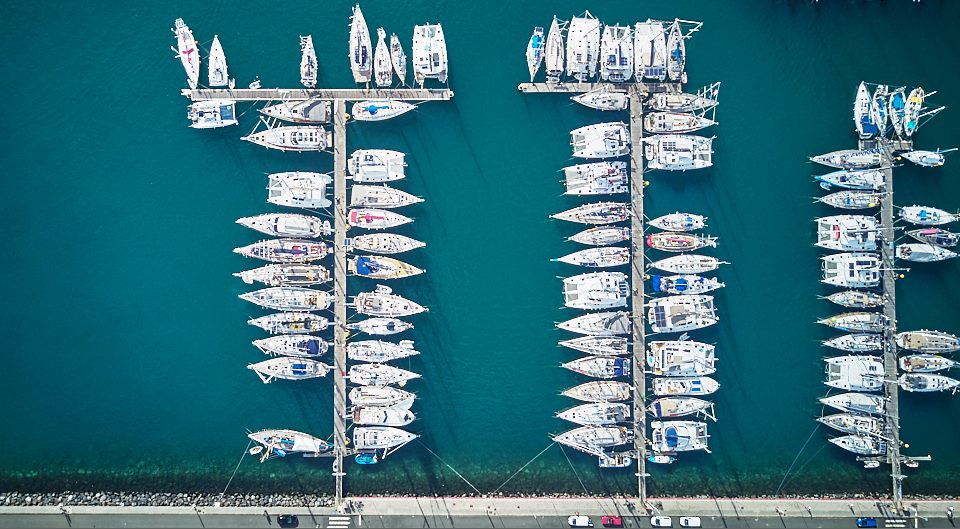
>>Also Read: Sailboats Vs Powerboats: Why Sailboats are Better
Size Matters
The size difference between a yacht and a sailboat is one of the most significant ones. Most of the time, a sailboat will almost certainly be smaller than a yacht. Of course, some sailboats are larger than others, but if we’re talking about average sizes, a yacht will be larger. The reason that size counts so much when deciding which boat to buy is that the available space is limited. So, if you opt for space note that the larger your boat is, the more space you’ll have. This may seem self-evident, but it is one of the most crucial aspects of your boat to which many people forget to give due consideration.
Generally, when it comes to boats, size will always matter. Except in cases where someone prefers overall better performance and speed. But, keep in mind that almost everything you do will be influenced by the size of your boat. The smaller the boat, the less storage space you have, the less space you have for emergency supplies, and even the less space you have for yourself. Regardless of the size of your boat, your sleeping quarters will most certainly be small. Also, depending on your height, every inch of a room may be crucial.
When there are more people on your boat than just you, size matters the most. If you intend to live alone on your yacht, you will have a significant space advantage. If there are three persons on board, you probably going to need more equipment and devices for cooking or for emergencies. All of this suggests that the sleeping space is the most significant distinction between living alone and living with people. If you live alone on a yacht that can sleep four people in theory, you will have a lot more storage and consequently space.
People on Board
The extent to which the crew will influence your decision is mostly determined by your budget and the size of the vessel you are considering buying. Meaning that if you’re intending to buy a sailboat, you won’t need any crew. Except for your family/friends that live on your boat with you, you basically are the entire crew. However, if you own a yacht, it’s an entirely different scenario.
If you intend to live aboard your yacht, you may require the assistance of one or two crew members. There will be plenty to do even if you are the most essential member of the team, i.e. the captain. This is because you might haven’t already mastered things like navigation, maintenance, plumbing, and engineering. So, a yacht often requires a complete crew to assist with navigation, maintenance, electronics and engineering, repairs, and sometimes even stewards to attend to the passengers.
In other words, having a sailboat means that you can take care of everything yourself. There are only a few computer components that will need to be repaired, and you are unlikely to have an engine. Repairing a sailboat isn’t easy in and of itself; it’s just easier for one person to handle. Meaning that it’s far easier to replace a sail than it is to fix an engine. In bad weather, a small sailboat is just easier to monitor than a large yacht. At the absolute least, another set of eyes will be probably required when sailing with a yacht.
Price also Matters
In general, yachts tend to be more expensive than sailboats. Occasionally, a great deal more. For a variety of factors, the most important of which are materials, design, and construction techniques. Note also that a boat’s price is likely to rise as it becomes more modern. Although this isn’t always the case, it is the vast majority of the time. If money is a key factor in deciding which boat to buy, here’s something to think about: just because a yacht is more expensive doesn’t mean you shouldn’t have one. If you have the cash, knowledge, and you know the kind of sailing you will be doing then go for a yacht!
Note also that a sailboat can be outfitted with a variety of amenities and conveniences. But, the sailboat doesn’t always include these features. This will mostly depend on the type of sailboat. As a result, buying a basic sailboat can save you a lot of money. However, most yachts will provide high end amenities. As a result, a motor yacht will cost significantly more than a regular sailboat. Sailboats are also smaller than yachts, which means you have a larger selection of less expensive boats to pick from when making your purchase. But, yachts often start in the six-figure range and can reach millions of dollars depending on the yacht’s size, age, and build quality.
Maintenance and Repairs
Yachts are frequently more expensive to maintain than sailboats. Meaning that boat engines require a great deal of upkeep, and the expense of fuel can be prohibitive for many individuals. For example, did you know that a gallon of diesel fuel in a yacht may only allow you to travel less than 1 nautical mile? If you’re going on a long voyage out to the sea, you can end up spending a lot of money on fuel. A sailboat, on the other hand, can take you wherever you want to go with very little fuel. Bear in mind also that a yacht’s insurance is more expensive than that of a sailboat. One of the main reasons is because it is classified as a yacht.
In addition to the boat’s price there are some other things to consider. The most important one is maintenance and repairs. A boat will always need these and it might need them once per month or once per year. It depends on the kind of repairs and on the way in which you “treat” your boat. Also, if you’re buying a used sailboat, you will need sometimes more research and more money for upgrades. It will be repainted, restored, and upgraded, although it will remain the same size. You should approach buying a boat in the same way that you would with a car. So, according to the size and kind of boat you want to buy, it’s important to keep in mind the price and extra costs as well.
While advanced marine electronics and navigation systems are available on some boats, they are more of a must for yachts. When doing transatlantic voyages, it is critical not only to be able to navigate with precision but also to be able to identify other boats or objects that you may not be able to see, as well as to comprehend your vessel’s performance.
When it comes to technology, it’s not just about whether you’re choosing a sailboat or a yacht. The age of the specific vessel is also something to consider. A sailboat that is more than ten years old may not be as technologically advanced as a brand new sailboat. Better technology can offer a lot of opportunities for you if you decide to buy a yacht. First and foremost, it can make working on your boat much more convenient. There’s no reason you couldn’t work remotely from your boat if you have the ability to set up a functional office with wifi.
Technology also brings up a lot of new possibilities for you when it comes to the act of sailing. A sailboat could traverse the Pacific or Atlantic, but it would be rather difficult. On the other hand, with a yacht, it can be a lot easier. In comparison to a sailboat, your yacht will have advanced navigational systems, warning and guidance systems, and many more safety features.
Sea, Lakes, or Rivers?
Bear in mind that in shallow waters, large yachts are unable to sail. A sailboat is a way to go if you plan on sailing in areas with shallow waters. In the Caribbean, for example, a yacht might be difficult to navigate. At the very least, it’ll be more difficult than sailing. A yacht, on the other hand, may travel to far more places than a sailboat.
A small sailboat might theoretically sail across the Atlantic. However, it can be quite risky, and your boat might not be able to withstand the strong winds and waves. Furthermore, if you’re aboard a sailboat, you can be the only one on board. This means that if the worst happens, far out at sea, there will be no one to aid you. You can do it, of course, but it is risky.
So, smaller boats may normally operate in calmer seas such as lakes, rivers, and shallow harbors. Larger boats, usually between 20 and 30 feet long, can equally navigate rougher ocean seas. A yacht, on the other hand, can sail in deeper ocean waters and handle more choppy seas. Yachts are significantly more ideal for lengthy ocean voyages due to their bigger size, high-tech electronics and guidance equipment, weather protection, and a variety of other characteristics.
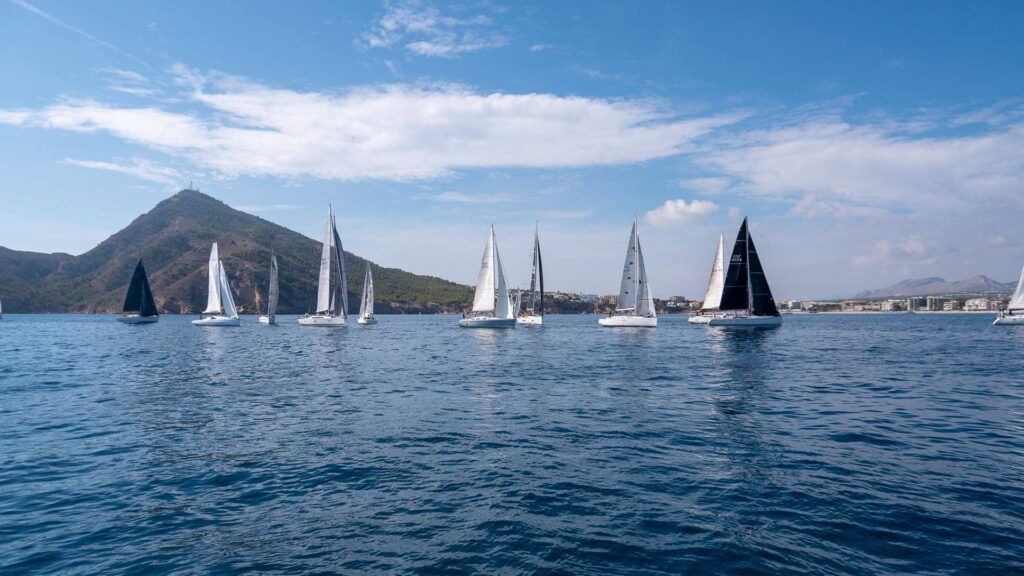
>>Also Read: Sailing Vs Boating: Why Sailing Is Better
Sailboat and Yatch Construction
Depending on the anticipated scale of production, sailboat makers can fabricate their own parts or order them. Masts, sails, engines, and metal fittings are common items provided by specialty vendors. Boatbuilders, on the other hand, create their own fiberglass hulls, using Gel coat polyester resin, a catalyst for the resin, woven fiberglass roving, and fiberglass. Wooden hull manufacturers create and shape their own wood in the same way. Note that the main building materials used in boat construction are aluminum, metal, wood, and fiberglass. The unique structure of each material offers a different design and usage as well as additional features to the way in which the boat is built.
Material considerations are important, whether they affect the cost or the durability of the product. Fiberglass, carbon fiber, and metals such as titanium will also be used to construct a boat. On the contrary, a sailboat will most likely be composed of wood or fiberglass. So, in case you value safety and sturdiness above all else, and money isn’t a big issue, a yacht will be significantly safer for you.
The material can also influence the way in which you make repairs. For instance, a wooden boat is much easier to repair than a metal boat. You can make some simple and quick repairs using wood, and they’ll probably last till you get to a marina. To do major repairs on a yacht, you’ll need a lot of specialized equipment and knowledge. Moreover, you may need to ask for a crew member to help you with this.
Sailboat Vs Yacht – Summary
As you can see there are many differences between a sailboat and a yacht. Nowadays many people tend to confuse or don’t be aware of the exact meaning and differences of these vessels, and it’s normal. But, we, as sailors, have to know the differences in order to understand which kind of boat is right for us. For example, if you want big spaces, luxury, or intend to liveaboard then you should opt for a yacht. But, if you want to experience the true joy of sailing, sail anywhere without worrying about polluting the environment or spending too much on fuel, then go for a sailboat! It will entirely depend on your needs and preferences so weigh the pros and cons of each one before making the decision.
In any case, I hope that you have now clarified the differences between these two and that you will make the right choice. I wish you all safe & enjoyable voyages!
Peter is the editor of Better Sailing. He has sailed for countless hours and has maintained his own boats and sailboats for years. After years of trial and error, he decided to start this website to share the knowledge.
Related Posts

Atlantic vs Pacific: Which is More Dangerous for Sailing?

The Ultimate Guide to Choosing the Best Fishing Line for Trolling

Lagoon Catamaran Review: Are Lagoon Catamarans Good?

Best Inboard Boat Engine Brands
- Buyer's Guide
- Destinations
- Maintenance
- Sailing Info
Hit enter to search or ESC to close.
Backed by expert consultation and outstanding service.
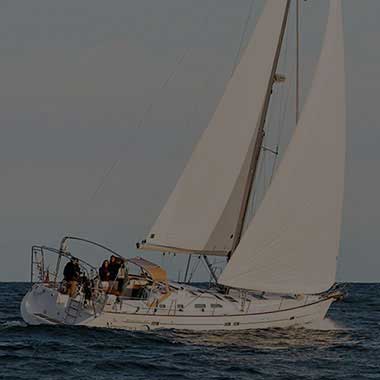
Cruising Sails
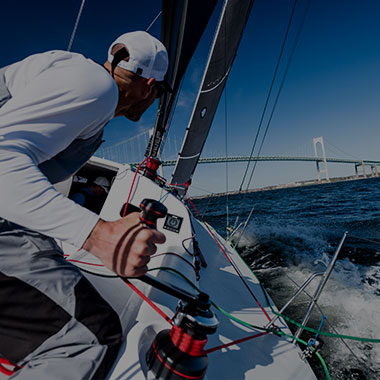
Racing Sails
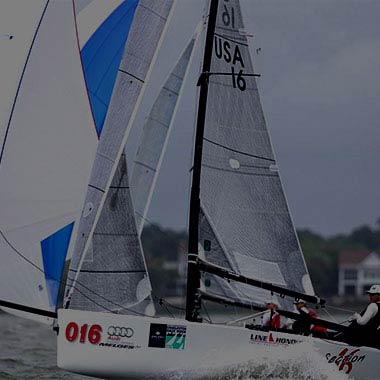
One Design Sails
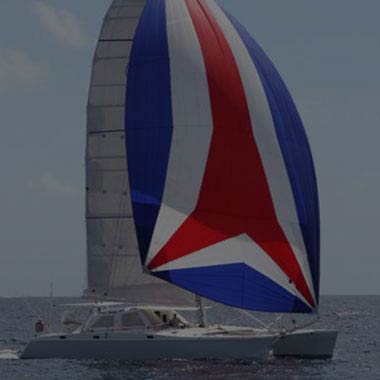
Multihull Cruising Sails
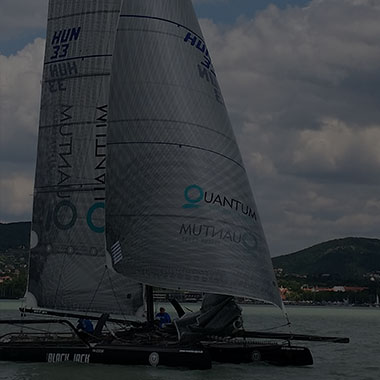
Multihull Racing Sails
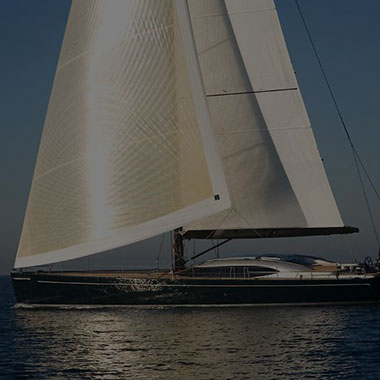
Super Yacht
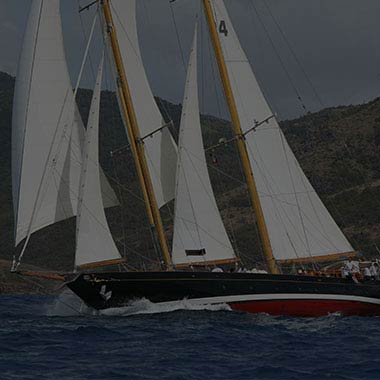
Traditional Sails
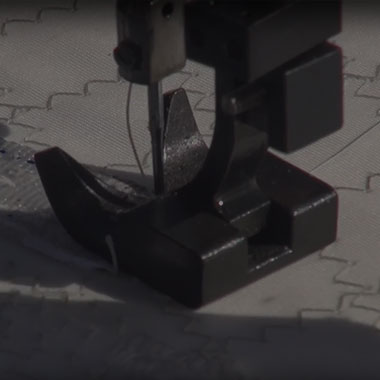
Request A Quote

iQ Technology
This website uses cookies and collects usage statistics. Privacy Policy

Us, too. We pour that passion into each of our newsletters to help you enjoy sailing even more.
- PRO Courses Guides New Tech Help Pro Expert Videos About wikiHow Pro Upgrade Sign In
- EDIT Edit this Article
- EXPLORE Tech Help Pro About Us Random Article Quizzes Request a New Article Community Dashboard This Or That Game Happiness Hub Popular Categories Arts and Entertainment Artwork Books Movies Computers and Electronics Computers Phone Skills Technology Hacks Health Men's Health Mental Health Women's Health Relationships Dating Love Relationship Issues Hobbies and Crafts Crafts Drawing Games Education & Communication Communication Skills Personal Development Studying Personal Care and Style Fashion Hair Care Personal Hygiene Youth Personal Care School Stuff Dating All Categories Arts and Entertainment Finance and Business Home and Garden Relationship Quizzes Cars & Other Vehicles Food and Entertaining Personal Care and Style Sports and Fitness Computers and Electronics Health Pets and Animals Travel Education & Communication Hobbies and Crafts Philosophy and Religion Work World Family Life Holidays and Traditions Relationships Youth
- Browse Articles
- Learn Something New
- Quizzes Hot
- Happiness Hub
- This Or That Game
- Train Your Brain
- Explore More
- Support wikiHow
- About wikiHow
- Log in / Sign up
- Cars & Other Vehicles
How to Sail a Boat
Last Updated: May 13, 2022 Approved
This article was co-authored by Nitzan Levy . Captain Nitzan Levy is a Sailor, Social Entrepreneur, and the Founder of Sailors NYC, a recreational sailors’ club based in Jersey City, New Jersey that specializes in cruising boats and a variety of community programs. Capt. Levy has over 20 years of sailing experience and has sailed in many places around the world including: the Atlantic Ocean, the Mediterranean Sea, The Caribbean, and the Indian Ocean. Capt. Levy is a U.S. Coast Guard Licensed Master of vessels up to 50 Tons with Auxiliary Sail and Assistance Towing Endorsements. Capt. Levy is also a NauticEd Level V Captain Rank Chief Instructor, an American National Standards Assessor, an SLC instructor, an ASA (American Sailing Association) Certified Instructor Bareboat Chartering, and an Israeli licensed skipper on Boats for International Voyages. There are 9 references cited in this article, which can be found at the bottom of the page. wikiHow marks an article as reader-approved once it receives enough positive feedback. This article received 25 testimonials and 92% of readers who voted found it helpful, earning it our reader-approved status. This article has been viewed 976,586 times.
For centuries, the sea has captured the spirits of sailors and adventurers all over the world. In his poem "Sea Fever", John Masefield claimed that all he needed was "a tall ship and a star to steer her by" to feel complete. Breaking into the sailing world can be challenging, but this article will help guide you through the ebb and flood of the nautical world. As a note, this article will help get you started, but it cannot be overstated that before you begin, have an experienced sailor show you the standing and running rigging on your boat and their functions before you venture out on the water on your own.
Gaining a Basic Knowledge of Sailing

- Block: This is the nautical term for a pulley.
- Boom: The horizontal support for the foot of the mainsail which extends aft of the mast. This is what you want to watch out for when changing directions in a sailboat. It can give you quite a wallop on the head if it hits you.
- Bow: This is what the front of the boat is called.
- Centerboard: This is a (usually fiberglass) plate that pivots from the bottom of the keel in some boats and is used to balance the boat when under sail.
- Cleat: Cleats are what lines (or ropes) get fastened to when they need to be kept tight.
- Halyard: Lines that raise or lower the sails. (Along with the sheets, aka running rigging.)
- Hull: The hull is the body of the boat and consists of everything below the deck.
- Jib: This is the sail at the bow of the boat. The jib helps propel the boat forward.
- Genoa: A foresail which is larger than a jib.
- Keel: The keel is what prevents a boat from sliding sideways ("making leeway") in whatever way the wind is blowing and stabilizes the boat.
- Line: Lines are ropes. They are everywhere on boats. There is only one "rope" on a sailboat, the bolt rope which runs along the foot of the mainsail.
- Mainsail: As the name implies, this is the mainsail of the boat. It is the sail attached to the back of the mast.
- Mast: The mast is a large, vertical pole that holds the sails up. Some boats have more than one mast.
- Painter: This is a line positioned at the front of small boats. It is used to tie the boat to a dock or another boat.
- Rudder: The rudder is how the boat is steered. It is movable so that when you turn the wheel or tiller, the rudder directs the boat in the direction you would like the boat to go.
- Sheets: The lines that control the sails. (aka running rigging.)
- Spinnaker: The usually brightly colored sail used when sailing downwind or across the wind.
- Stays and Shrouds: Some wires make sure the mast stays upright, even in very heavy winds. (aka standing rigging.)
- Stern: This is the term for the back of the boat.
- Tiller: The tiller is a stick attached to the rudder and is used to control the rudder.
- Transom: This is what we would call the butt of the boat. It is the back part of the boat that is perpendicular to its centerline.
- Wheel: The wheel works the rudder, steering the boat.
- Winch: Winches help tighten the sheets and halyards. When these lines are wrapped around a winch (in a clockwise direction), a sailor can turn the winch with a winch handle, providing mechanical advantage which makes it easier to bring in the lines.

- Sloop : Sloops are the most common type of sailboat (when you think of a sailboat this is probably the one you picture in your mind.) It has a single mast and is rigged up with a jib in the front and a mainsail attached to the back of the mast. They can range in size and are ideal for sailing upwind.
- Catboat : A Catboat has a mast set up near the front of the boat and is a single-sail boat. They are small (or large, for that matter) and easily operated by one or two people.
- Cutter : Cutters have one mast with two sails in the front and a mainsail on the back of the mast. These boats are meant for small crews or groups of people and can be handled relatively easily.
- Ketch : A Ketch has two masts, with the second mast called the mizzen mast. The mizzen is shorter than the mainmast and is in front of the rudder.
- Yawl : Yawls are similar to ketches with the difference being that their mizzen masts are located behind the rudder. The reason for this placement is that the mizzen on yawls is for keeping balance, rather than for moving the boat forward.
- Schooner : Schooners are large sailboats with two or more masts. The mast in the back of the boat is either taller or equal in height to the mast at the front of the ship. Schooners have been used to commercially fish, transport goods and as warships.

- Port: When you are facing the bow (the front of the boat) the side to your left is the port side.
- Starboard: Starboard is the right side of the boat when facing the bow.
- Windward: As the name might imply, windward is the direction from which the wind is blowing, upwind.
- Leeward: This is also called ‘Lee’. This is the direction to which the wind is blowing, downwind.
- Tacking: Tacking is when you turn the bow of the boat through the wind so that the wind switches from one side of the boat to the other. This is when you most need to be mindful of the boom, as the boom will swing from one side of the boat to the other when you tack (you don’t want to be in its way when it does that.)
- Gybing (Jibing): This is the opposite of tacking, which means that it is when you turn the stern (or back) of the boat through the wind so that wind shifts to the other side of the boat. This is a more dangerous maneuver in a strong breeze than tacking since the boat's sails are always fully powered by the wind, and may react violently to the change in the orientation of the boat to the wind. Care must be exercised to control the boom during this maneuver as serious injury is a possibility if the boom travels across the cockpit uncontrolled.
- Luffing: This is when the sails begin to flap and lose drive caused by steering the boat into wind or easing (loosening) sheets.

Preparing The Boat

- Check the lines ( running rigging ) that raise and control the sails ( halyards and sheets respectively). Make sure that they are separated, not wrapped around each other or fouled on anything else, and that they all have a figure-eight knot or other stopper knot on the free ( bitter ) end so they cannot pull through the mast or sheaves.
- Pull all lines out of their cleats and off their winches. There should be nothing binding any line; all should be free to move and be clear at this point.
- If you have a topping lift—a small line that holds the back of the boom up and out of the way when the sail isn't in use—let it out until the boom sags downward freely, then re-tie or re-cleat it. Watch out for the boom; it's just swinging around at this point; it will cause a painful "clunk" if it happens to hit you or your crew. The boom will return to its normal, horizontal position when you hoist the mainsail completely.
- If so equipped, be sure that the tiller is properly attached to and controls the rudder. Your sailboat is now prepared for you to hoist the sails!

- If your boat doesn't have a windex, tie a couple of nine-inch pieces of old cassette tape, VHS tape, or oiled yarn to the shrouds—the rigging cables that hold up the mast. Place them on each side, about four feet up from the sides of the boat. These will show you from which direction the wind is blowing, although some sailors find cassette tape to be just too sensitive for this purpose.

- If your boat has a motor, use the motor to keep the boat pointed into the wind while you hoist sail.
- Here's a handy tip: if the water is not deep at your dock, or if you have no side pier, walk the boat out away from the dock and anchor it into the sand, and the boat will automatically point itself into the direction of the wind!
Hoisting The Sails

- There will be a small line ( outhaul ) attaching the rear corner of the mainsail ( clew ) to the end of the boom. Pull it so the foot of the main is taut, and cleat. This helps the mainsail have a smooth shape for the air flowing over it.
- Hoist the mainsail by pulling down on its halyard until it stops. It will be flapping around ( luffing ) like crazy, but that's OK for a short period of time. (Excessive luffing will drastically reduce the life and durability of the sail).
- The leading edge of the sail ( luff ) must be tight enough to remove folds, but not so tight as to create vertical creases in the sail.
- There will be a cleat in the vicinity of the halyard where it comes down from the top of the mast. Cleat the halyard. Using the jib halyard, raise the front sail ( jib , genoa or simply the headsail ), and cleat the halyard off. Both sails will be luffing freely now. Sails are always raised mainsail first, then the jib, because it's easier to point the boat into the wind using the main.

- Turn the boat to the left ( port ) or right ( starboard ) so it's about 90 degrees off the wind. This is known as a beam reach .
- Pull on the main sheet ( trimming ) until the sail is around 45 degrees away from straight back ( aft ). This is a safe place for the main while you trim the jib.
- You will start moving and tilting ( heeling ) away from the wind. A heel of more than 20 degrees usually indicates that you're being overpowered. Releasing the mainsheet momentarily ( breaking the main ) will lessen the amount of heel, and you will return to a more comfortable sailing angle of 10 to 15 degrees.

- The jib will form a curve or pocket; trim the sail until the front edge just stops luffing. Keep your hand on the tiller (or helm ) and stay on course!

- If you or the wind hasn't changed direction, this is the most efficient place to set the sails. If anything changes, you have to adjust them in response.
- You have just entered the world of the sailor, and you will have to learn to do many things at once, or suffer the consequences.
Sailing Your Boat

- When the wind is at your back and side ( aft quarter ), it's called a broad reach . This is the most efficient point of sail as both sails are full of wind and pushing the boat at full force.
- When the wind is at your back, you are running with the wind . This is not as efficient as reaching, because air moving over the sail generates lift and more force than just the wind pushing the boat.
- When running with the wind, you can pull the jib over to the other side of the boat where it will fill. This is called wing-on-wing , and you have to maintain a steady hand on the tiller to keep this sail configuration. Some boats have a "whisker pole" which attaches to the front of the mast and the clew of the jib which makes the jib much easier to control and keep full of wind. Be sure to be vigilant of obstacles and other vessels, as having both sails in front of you blocks a significant portion of your view.
- Be careful —when the boat is running, the sails will be way off to the side, and because the wind is basically behind you the boom can change sides suddenly ( jibe or gybe ), coming across the cockpit with quite a bit of force.
- If you have a wind direction indicator at the top of your mast, do not sail downwind (run) so that the wind indicator points toward the mainsail. If it does, you are sailing with the boom on the windward side ( sailing by the lee ) and are at high risk of an accidental jibe. When this happens the boom can hit you with enough force to knock you unconscious and out of the boat ( overboard ).
- It's a good practice to rig a preventer (a line from the boom to the toe rail or any available cleat) to limit the travel of the boom across the cockpit in case of an accidental gybe.

- On most sailboats this will be about 45 degrees from the wind direction.
- When you've gone as far as you can on this tack, turn the boat through the wind (or changing direction by tacking ), releasing the jib sheet out of its cleat or off the winch drum as the front of the boat ( bow ) turns through the wind.
- The main and boom will come across the boat. The mainsail will self-set on the other side, but you will have to quickly pull in the jib sheet on the now downwind side to its cleat or winch, while steering the boat so the mainsail fills and begins to draw again.
- If you do this correctly, the boat won't slow down much and you will be sailing to windward in the other direction. If you're too slow tightening the jibsheet again and the boat bears off the wind too much, don't panic. The boat will be pushed sideways a little until it gains speed.
- Another scenario would be to fail to put the bow of your boat through the wind quickly enough and the boat comes to a complete stop. This is known as being in irons , which is embarrassing, but every sailor has experienced it, whether or not they'll admit it is another story. Being in irons is easily remedied: when the boat is blown backwards you will be able to steer, and as the bow is pushed off the wind you will achieve an appropriate angle to the wind to sail.
- Point the tiller in the direction you wish to go and tighten the jib sheet to windward, ( backwinding the sail ). The wind will push the bow through the wind. Once you've completed your tack, release the sheet from the winch on the windward side and pull in the sheet to leeward and you'll be on your way again.
- Because speed is so easily lost when tacking, you'll want to perform this maneuver as smoothly and quickly as possible. Keep tacking back and forth until you get to your destination.

- Reefing almost always needs to be done before you think you need to!
- It's also a good idea to practice capsize procedures on a calm day too. Knowing how to right your boat is a necessary skill.

Storing the Sails

Community Q&A
- Try learning to determine the wind direction using your ears. Let the wind blow onto your back, then slowly turn your head left to right and back until you feel it "equalize" over your ears. Once you find that point, you now know the wind direction, and using this method, you can understand the wind more without having to use your eyes. [7] X Research source Thanks Helpful 2 Not Helpful 0
- Know how to read clouds and the weather they may bring. [8] X Research source Thanks Helpful 2 Not Helpful 2
- If something bad happens—too much wind, man overboard, etc.—remember that you can bring the whole thing to a halt simply by pulling all three sheets out of their cleats or off their winches. The boat will (mostly) stop. Thanks Helpful 3 Not Helpful 0

- Going overboard is a serious matter, especially if you are alone. Cold water, currents, and other boats all can account for serious dangers, and if the sails are up, the boat will take off much faster than you might expect. Additionally, many boats float so high on the water ( freeboard ) that it is difficult to climb in or haul people in without assistance. When sailing at night, always wear a shoulder-mounted flashlight and strobe emergency signaling device, which makes it much easier for a SAR (Search And Rescue) crew to spot you in the water. Thanks Helpful 36 Not Helpful 4
- In sailing, your very life may depend on doing things before they need to be done, when they first cross your mind. If you wait until it needs to be done, it may be too late or very difficult. Follow your instincts. Thanks Helpful 30 Not Helpful 5
- Remember the old maxim "It's better to be on the dock, wishing you were on the lake, than to be on the lake, wishing you were on the dock". Don't let enthusiasm overcome your good judgement on a day you should not go out. The apparent wind while tied alongside at the dock may be very different out on the water. Many novices (and experienced sailors, for that matter) get into trouble venturing out when there is too much wind to sail safely. Thanks Helpful 4 Not Helpful 0
- It is highly recommended that you at least have working knowledge of the nomenclature of the boat and have done some reading of in-depth material before attempting this sport yourself. Some highly recommended reads are: The Complete Idiot's Guide to Sailing , Sailing for Dummies , and Sailing the Annapolis Way by Captain Ernie Barta. Thanks Helpful 2 Not Helpful 1
- Know how how to use VHF radio to make a Mayday call from a Marine Vessel . In an emergency, it is usually the quickest way to summon help. Cell phones may be used, but VHF will be able to contact a nearby vessel much more quickly should you need assistance or be able to render same. [9] X Research source Thanks Helpful 2 Not Helpful 0
Things You'll Need
- A life vest (Personal Flotation Device) is mandatory on all boats for all passengers. (A pealess whistle attached to the PFD is an excellent idea!) You should wear one at all times. If you have children with you, they should wear one even when you are at the dock.
- Every vessel, regardless of length is required to have a certain amount of safety gear aboard. This ranges from an anchor with sufficient rode, flares, and other equipment as may be mandated by the Government. These regulations are for your safety and should be adhered to.
You Might Also Like

- ↑ http://www.lovesailing.net/sailing-theory/sailing-basics/parts-of-a-boat/parts-of-a-boat.php
- ↑ https://www.boats.com/resources/sailing-101-sailboat-types-rigs-and-definitions/
- ↑ http://www.discoverboating.com/resources/article.aspx?id=243
- ↑ https://www.uscgboating.org/images/486.PDF
- ↑ https://www.cruisingworld.com/learn-to-sail-101#page-2
- ↑ https://www.discoverboating.com/resources/how-does-a-boat-sail-upwind
- ↑ https://www.dummies.com/sports/sailing/finding-the-winds-direction/
- ↑ https://weather.com/news/news/read-clouds-meteorologist-20130826
- ↑ https://www.boatus.org/marine-communications/basics/
About This Article

To sail a boat, start by performing a detailed visual check of the cables and ropes that support the mast. Next, determine the wind direction by referring to the wind direction indicator at the top of the mast, then point the boat into the wind. Secure the bottom front of the mainsail and jib to the shackles on the boom and bow of the boat, then trim the jib sheets and mainsail before letting out the main sheet! For tips on monitoring wind indicators, read on! Did this summary help you? Yes No
- Send fan mail to authors
Reader Success Stories
Sep 13, 2017
Did this article help you?

Tobias Tanti
Dec 25, 2020
Nov 19, 2017
Mar 30, 2016
Nov 22, 2016

Featured Articles

Trending Articles

Watch Articles

- Terms of Use
- Privacy Policy
- Do Not Sell or Share My Info
- Not Selling Info
Don’t miss out! Sign up for
wikiHow’s newsletter
Watch CBS News
Captain, 2 crew members from Mike Lynch's family yacht reportedly under investigation over sinking off Italy
By Anna Matranga
Updated on: August 28, 2024 / 10:47 AM EDT / CBS News
Rome — The engineer and a sailor from the crew of the luxury superyacht that sank off the coast of Sicily , killing British tech entrepreneur Mike Lynch and his 18-year-old daughter along with five other people, have been placed under investigation by Italian prosecutors along with the captain of the vessel, according to the Reuters and ANSA news agencies. CBS News could not immediately reach the prosecutors or lawyers for the Bayesian yacht's crew members to confirm the development, which comes about a week and a half after the vessel capsized on Aug. 19.
Engineer Tim Parker Eaton and sailor Matthew Griffiths, who was on night watch duty when the incident occurred, were reportedly placed under formal investigation for possible manslaughter and culpable shipwreck a few days after the 184-foot Bayesian yacht's captain, James Cutler, whose lawyers have confirmed that he's a subject of the probe.
After meeting with prosecutors for several days, Cutler, a 51-year-old New Zealander, has declined to answer any further questions, his lawyer said Wednesday.
"The captain exercised his right to remain silent for two fundamental reasons," attorney Giovanni Rizzuti told reporters. "First, he's very worn out. Second, we were appointed only on Monday and for a thorough and correct defense case, we need to acquire a set of data that at the moment we don't have."

Lynch and his daughter Hannah, 18, were among the passengers and one crew members who died when the superyacht sank rapidly during a violent storm in the pre-dawn hours of Aug. 19. The capsize of the high-tech vessel quickly raised questions, as another sailboat that had been anchored nearby off the coast of Palermo made it through the storm unscathed.
Fifteen people, including Lynch's wife Angela Bacares, escaped to a life raft and were rescued by another boat that had been in the vicinity.
According to reports by Italian media, investigators are looking into whether the engineer, Eaton, might have neglected to activate security systems designed to automatically close all the hatches on the vessel, leaving the engine room to flood and possibly causing a power outage and the subsequent rapid flooding of the entire yacht.
Under Italian law, being placed under investigation does not necessarily mean formal charges will follow.
During a press conference on Saturday, prosecutors said the investigation would require the wreck of the Bayesian to be salvaged from the seabed, where it currently sits at a depth of about 160 feet.
Chief prosecutor Ambrogio Cartosio said his team would work to determine whether the captain, other crew members, or the yacht's manufacturers bear any responsibility for the sinking.
- Boat Accident
More from CBS News

Italian grandma prays, drinks puddles to survive 4 nights lost in woods

Details emerge after Viking ship replica sinks, killing U.S. woman

Woman dead, 5 rescued after Viking ship replica sinks off Norway

"Curious" 4-year-old accidentally breaks a 3,500-year-old jar

We Are Yacht Brokers
Welcome to Atlantic Yacht & Ship, Inc. We remain an integral leader in the yacht and ship brokerage industry, serving the yachting community since 1959. Atlantic Yacht & Ship, in Fort Lauderdale, Florida is located in the heart of the “Yachting Capital of the World”. Whether buying or selling a quality motor yacht, center console, or having your luxury yacht built. Atlantic Yacht & Ship is your one-stop resource for the highest quality luxury yacht sales and service in the yachting industry today. The dynamics in buying or selling a yacht are complex and time consuming, but at Atlantic Yacht & Ship, our team of professional yacht brokers are prepared to handle the entire process and create a positive and easy experience for all our clients.
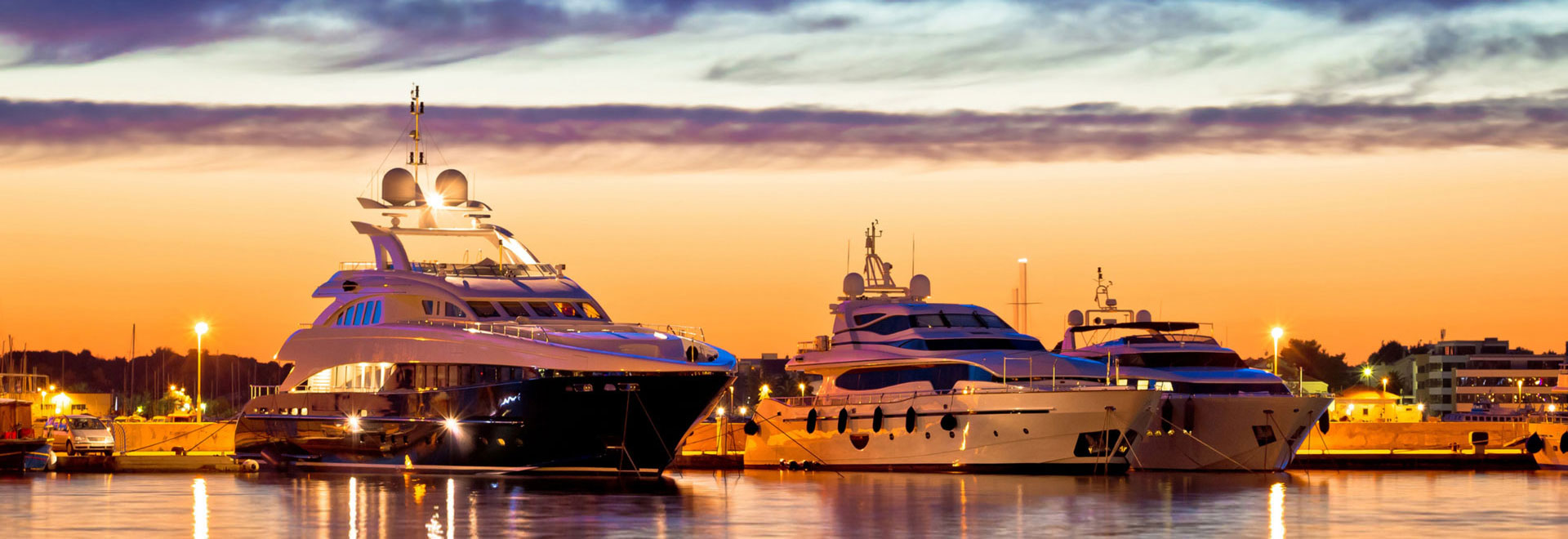
Presenting Our Featured Yachts

The Most Recent Yachting News

See Us At These Yachting Events


The global authority in superyachting
- NEWSLETTERS
- Yachts Home
- The Superyacht Directory
- Yacht Reports
- Brokerage News
- The largest yachts in the world
- The Register
- Yacht Advice
- Yacht Design
- 12m to 24m yachts
- Monaco Yacht Show
- Builder Directory
- Designer Directory
- Interior Design Directory
- Naval Architect Directory
- Yachts for sale home
- Motor yachts
- Sailing yachts
- Explorer yachts
- Classic yachts
- Sale Broker Directory
- Charter Home
- Yachts for Charter
- Charter Destinations
- Charter Broker Directory
- Destinations Home
- Mediterranean
- South Pacific
- Rest of the World
- Boat Life Home
- Owners' Experiences
- Conservation and Philanthropy
- Interiors Suppliers
- Owners' Club
- Captains' Club
- BOAT Showcase
- Boat Presents
- Events Home
- World Superyacht Awards
- Superyacht Design Festival
- Design and Innovation Awards
- Young Designer of the Year Award
- Artistry and Craft Awards
- Explorer Yachts Summit
- Ocean Talks
- The Ocean Awards
- BOAT Connect
- Between the bays
- Golf Invitational
- BOATPro Home
- Superyacht Insight
- Global Order Book
- Premium Content
- Product Features
- Testimonials
- Pricing Plan
- Tenders & Equipment
Exclusive: pushing the boundaries of technology, Sailing Yacht A
Andrey Melnichenko is a man with exceptional vision. Where other yacht owners like to blend into the background, he wants his superyachts to push the boundaries of design, creativity and technology as well as make a statement. His first superyacht, Motor Yacht A , rocked the superyacht world with its radical design and now he’s done it again.
With an insatiable appetite to drive change he has put together a highly skilled team to build his new creation, currently under construction in Germany. Boat International was given exclusive access to the yacht, and we can reveal for the first time its name, Sailing Yacht A , and that this huge new project is a “sail-assisted motor yacht”.
This is the second yacht in Melnichenko’s portfolio. His first, Motor Yacht A , split opinion, but today stands as one of the most talked about and recognisable yachts in the world. But Sailing Yacht A is a much bolder move and Melnichenko has raised the stakes even higher with a radically designed yacht that introduces new technologies and techniques never before used in the shipbuilding industry. He also broke down barriers by creating his own project team to undertake the build from start to finish. Sailing Yacht A is a monument to invention.
Philippe Starck , who created Motor Yacht A , and from there went on to design Venus for the late Steve Jobs, is working once again for Andrey and Aleksandra Melnichenko on the project. “I am honoured and happy to bring to life the owner’s dream of what will be the summit of high technology and poetry,” says Starck.
Sailing Yacht A is a unique story that began as far back as 2008 when eight of the world’s leading designers were invited to submit their ideas for a huge project – the creation of one of the world’s biggest sail-assisted private yachts. Initially, French designer Jacques Garcia was chosen for his designs, but later there were concerns about the progress of design development, and the owner decided on a change of direction.
Sailing Yacht A is slated for delivery in 2016, although her masts were not stepped when Boat International was invited on board in July. The interior was also under wraps, but here we can take a look at some of her incredible statistics.
She is a three-masted, 142.81 metre (LOA) sail-assisted motor yacht, with a moulded beam at the widest point of 24.88 metres, an eight metre encapsulated keel and a gross tonnage of approximately 12,700GT. For a vessel of this size it was a challenge to find a shipyard that had the capacity, knowledge and skills to put together the naval architecture and engineering for the motor yacht side of the project. The one chosen, given its skills in building large yachts, was Nobiskrug in Germany.
For the sailing design, rig and keel, and associated structural engineering, Dykstra Naval Architects in The Netherlands was appointed for its advanced technical abilities demonstrated on various world-class sailing yachts. Aloft Sailing Yacht A carries three of the largest and most highly loaded composite freestanding structures in the world produced by Magma Structures in the UK. The custom booms were made by Future Fibres in Valencia, and the custom sails by Doyle Sails in the USA.
With a hull and superstructure predominantly constructed of steel and incorporating composite and accents of carbon fibre, in order to keep the weight and draught to an acceptable level, Sailing Yacht A is the highest classified vessel of her type: (Maltese Cross) 100A1 Passenger ship Sail Assisted, (Maltese Cross) LMC UMC and (Maltese Cross) 100A1 Yacht Mono G6.
Propulsion comes from a customised hybrid diesel-electric package made up of two MTU 3,600kW diesel engines, and two 4,300kW electric motors, driving shafts ending in highly skewed five-bladed Andritz controllable pitch propellers. She is expected to cruise under power at 16 knots with an expected range of 5,320 nautical miles and will have a top speed of 21 knots.
With her uninterrupted shard-like appearance she carries her eight decks aft along the sheerline, which slopes up towards the stern, reaching a full beam width of 24.88 metres at the widest point. All her machinery is hidden within the hull structure, and as you can see, everything, including the windows, are flush. The bridge control centre for propulsion and sailing systems is on deck seven and there is a touch-and-go helicopter pad on deck six. There is accommodation available for up to 54 crew.
There are many more technical advances, innovations and surprises throughout her hull, decks and keel, which Boat International will reveal, in detail, in an exclusive feature in the November issue.
Sign up to BOAT Briefing email
Latest news, brokerage headlines and yacht exclusives, every weekday
By signing up for BOAT newsletters, you agree to our Terms of Use and our Privacy Policy .
More about this yacht
More stories, most popular, from our partners, sponsored listings.
Affordable and safe yacht rentals directly from owners
Top summer boats 2024.
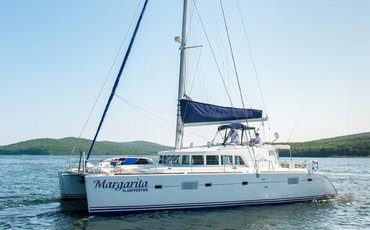
Publications

Rating of captains
Top destinations.

Vladivostok is a city and a port in the Far East of Russia. It is located on the Murav'ev-Amursky peninsula and the islands in the Great Petr Bay of the Sea of Japan.

Thanks to the canal system, Moscow is known as the "port of five seas" - Baltic, White, Caspian, Azov and Black. A walk on a yacht along the Moscow-river bed will allow you to enjoy beautiful views of the city from an unusual side.
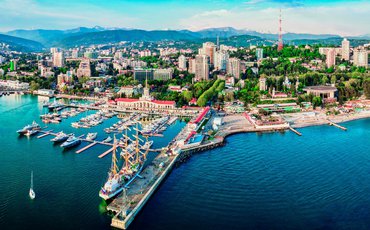
Sochi is the largest resort city in Russia. There are about 200 beaches on the territory of the city: municipal, sanatorium, sand and pebble.
Rent a yacht without intermediaries easy and safe
Without intermediaries.
Sails Speak is a network of captains from whom you can rent a yacht or boat directly, avoiding price gouging and a long wait for a response.
Meet the captain on his personal page, ask him any questions, select and book a yacht in a few clicks.
Ratings and reviews
Sail Peak has an effective reputation system that allows you to choose the most reliable offers for you.
After the end of the lease, you and the owner of the yacht write reviews about each other, which affect the rating. If the captain often cancels orders or receives negative feedback, his yachts and boats fall below in the search results or are blocked altogether.
Rating gives you additional confidence that the planned trip will be organized by a proven and responsible captain.
Without risk
Sail Speak allows you to rent a boat or yacht with a guarantee of no risks for both parties.
Payment for the yacht is frozen on the website, the owner receives it only after the end of the lease term. If the owner cancels the lease, the system will offer you another option or refund the payment.
Are you a yacht owner?
Earn on safe yacht rental with payment guarantee and without intermediaries
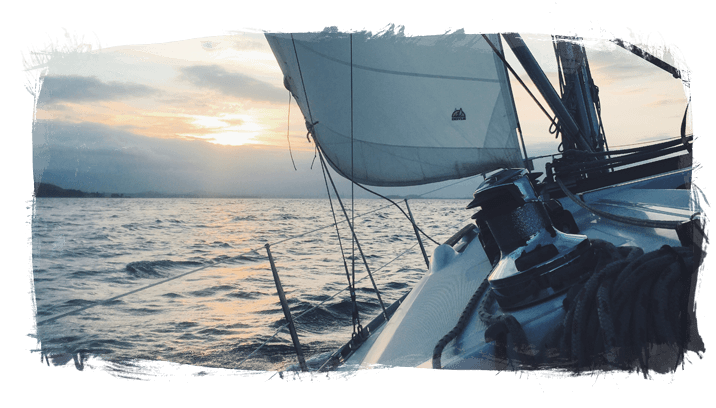
Add your yacht and tell clients about leisure facilities. Upload nice photos, add descriptions and mark extra services.Receive applications on rental yacht
Home / School, courses also ONLINE / Russia
Sailing schools and courses (ISSA, RYA, IYT) in Russia
The possibilities for yachting in russia are unlimited, since this is a country with a long maritime history. you just need to choose where you want to sail. small and big lakes, full-flowing rivers, warm and cold seas — all this is available to those who want to try sailing in this country..

Practical yachting
You will be able to master the skills of sailing; learn to feel the boat, approach and leave the pier, learn about the safety measures on the water and much more.
There are places in 1 team

International Bareboat Skipper (IYT) Course
Having received the International Bareboat Skipper Certificate, you can independently charter a yacht on a charter and operate it in the waters of any country.

More details

ISSA Offshore Skipper course
The certificated confirms the skills sufficient to sail the yacht in light and dark hours at a distance from a sheltered port up to 100 sea miles.

IYT International Crew course
This is a certificate of excellence for those candidates who wish to train to become an active crew member on a power or sailing yacht. It includes Introduction to Boating for power and sail yachts.

IYT Introductory Sailing Skills course
This course is great for groups of friends or like-minded people to get together for a few days of fun sailing while learning skills to better help as crew onboard.

IYT Try Sailing Course
It’s a fun hands-on course to enjoy being on the water while learning basic sailing skills.

Yacht management training in the Moscow region
In three hours of training, you will learn the basic techniques of managing a yacht, learn some of the specifics of working with a yacht, a helm, sails.
RYA Coastal Skipper course
Advanced skippering techniques for yachtsmen with considerable knowledge of sailing and navigation, wanting to undertake coastal passages by day and night.

RYA Competent Crew course
This course is for beginners and those who would like to become active crew members rather than just passengers.

RYA Day Skipper course
A course for aspiring skippers with some yachting experience and basic navigation and sailing skills.

RYA Start Yachting course
A short introduction to sailing for complete beginners.

IMAGES
VIDEO
COMMENTS
The Sailing Yacht A, initially known as Project 787 'White Pearl,' was delivered by Nobiskrug to her owner, Andrey Melnichenko, in 2017. As the world's largest sailing yacht, she measures an impressive 143 meters (469 ft) in length with a beam of 25 meters (82 ft). Featuring eight decks, SY A can accommodate 20 guests and a crew of 20.
Sailing Yacht A is a sailing yacht launched in 2015. [2] The vessel is a sail-assisted motor yacht [3] designed by Philippe Starck (exteriors and interiors) [4] [5] and built by Nobiskrug in Kiel, Germany for the Russian billionaire Andrey Melnichenko. [6] History.
SAILING YACHT A is the most expensive sailing yacht in the world and cost an estimated price of US $600 million - a relatively "affordable" price considering her large size and tonnage. A calculated US $48,000 per ton is considered low in the yachting industry, where European yachts are usually priced at US $60,000 per ton and over.
SAILING YACHT A, a 142.81 m Sail Yacht built in Germany and delivered in 2017, is the flagship of Nobiskrug. Her top speed is 21.0 kn and she boasts a maximum range of 5320.0 nm when navigating at cruising speed, with power coming from two MTU diesel engines. She has a gross tonnage of 12700.0 GT and a 24.88 m beam.
Steel hull and steel superstructure with high-tech composite fashion plates that can be formed into any shape or size, a technology NOBISKRUG has developed during the past 15 years in co-operation with classification societies and special subcontractors. Thanks to her striking looks and innovative technology SAILING YACHT A definitely changes ...
Instantly recognisable with her black sails and Dynarig set-up, Black Pearl is the second-largest sailing yacht in the world. Delivered during the same year as 142.81-metre Sailing Yacht A (officially designated as a sail-assisted motor yacht), Black Pearl spent five years in development at Dutch yard Oceanco. Dykstra Naval Architects, Ken Freivokh, Nuvolari Lenard, BMT Nigel Gee and Gerard P ...
The boundary pushing Sailing Yacht A is a natural head turner. Delivered in 2017 by German yard Nobiskrug, Sailing Yacht A measures a total of 142.81 metres and is classed as a "sail-assisted motor yacht". BOAT rounds up the best photos of Sailing Yacht A from around the world.
2017. |. Sail Yacht. SAILING YACHT A is an exceptionally unique 2017 build by Nobiskrug, measuring 142.80m (468'6"ft). She is the ultimate embodiment of German superyachts built for the 22nd century. Measuring almost 143 m and a gross tonnage of about 12,600 GT, she became one of the most impressive PYC superyachts in the world in terms of ...
You like her or not, but one thing is for sure: with her length of 142.81m/ 468'5" and her masts length up to 100m/ 328', Sailing Yacht A is impressive, espe...
Sailing Yacht A is the largest sail-assisted yacht in the world and, although the price is just speculated to be around $600 million, it's clearly one of the most expensive yachts in the world as well. The exterior design is sleek and subtle and is able to hide many features including shell doors and windows while the interior spans 8 decks ...
We make it easy to get new sails custom designed for your sailboat or sailing yacht, at the best prices online. Replacement sails for Catalina, Hunter, Beneteau, Pearson, C&C, and 15,000 more! Get a free quote within 24 hours or less. Headsails, Mainsails, Spinnakers, and Turtle Bags too!
A jib is used to improve handling and to increase sail area on a sailboat. This helps to increase speed. The jib gives control over the bow (front) of the ship, making it easier to maneuver the ship. The mainsail gives control over the stern of the ship. The jib is the headsail (frontsail) on a front-and-aft rig.
The yacht's mast stood 72.27 meters (237 feet) high above the designated water line, just short of the world's tallest mast which is 75.2 meters, according to Guinness World Records.
Sailing a yacht, with its billowing sails and the gentle sound of water against the hull, is an enchanting experience that beckons adventurers and dreamers alike. Whether you've always been drawn to the allure of the open waters or you simply seek a new and exhilarating hobby, setting sail on a yacht is an extraordinary journey that awaits you. ...
Spinnaker sails are a type of downwind sail that can be used to increase boat speed when sailing in light winds. They are typically used in wind conditions below 10 knots, which are considered light air sails. Spinnakers come in two types: symmetrical and asymmetrical. Author: Ken Heaton CC BY-SA-4..
Sails and Motor. The boat may be powered purely by the wind or by one or more inboard or outboard motors, depending on the model. While some larger boats may have very massive engines to provide genuine speed on the water, most yacht engines are far less powerful. Yacht engines are substantially larger, can produce far more power - up to ...
The rig and sail plan of Sailing Yacht A. Three colossal unstayed masts - the largest carbon masts in the world - define Sailing Yacht A. The mainmast towers 100 metres above the waterline - taller than Big Ben. An enclosed electric gimballed crow's nest is incorporated, to whoosh a crew member 60 metres up the mast for what will surely ...
Customer Service. +1 (888) 773-4889. We design and construct custom high quality racing sails, cruising sails, multihull sails, superyacht sails and traditional yacht sails.
1. Attach the sails. Secure the bottom front ( tack) of the mainsail and jib to their respective shackles on the boom and the bow of the boat. There will be a small line ( outhaul) attaching the rear corner of the mainsail ( clew) to the end of the boom. Pull it so the foot of the main is taut, and cleat.
The 184-foot sailing yacht Bayesian is seen in an undated file photo provided by SuperYacht Times. SuperYacht Times Lynch and his daughter Hannah, 18, were among the passengers and one crew ...
From romantic Sicily to family-oriented Sardinia, find out more about the best places to sail in Italy for families, couples and first-time sailors. Update Leisure Day Flash Sale ... If you haven't set sail on a yacht charter before, you might feel more comfortable hiring a skipper or booking a crewed charter, ...
One man has died and six people are missing after a luxury yacht sank in freak weather conditions off the coast of Sicily. The 56m British-flagged Bayesian was carrying 22 people - 12 passengers ...
Welcome to Atlantic Yacht & Ship, Inc. We remain an integral leader in the yacht and ship brokerage industry, serving the yachting community since 1959. Atlantic Yacht & Ship, in Fort Lauderdale, Florida is located in the heart of the "Yachting Capital of the World". Whether buying or selling a quality motor yacht, center console, or having ...
Sailing Yacht A is a unique story that began as far back as 2008 when eight of the world's leading designers were invited to submit their ideas for a huge project - the creation of one of the world's biggest sail-assisted private yachts. Initially, French designer Jacques Garcia was chosen for his designs, but later there were concerns ...
American Magic's AC75 boat sails during America's Cup Preliminary Regatta ahead of the 37th America's Cup sailing race at the Barcelona's coast, Spain, Thursday, Aug. 22, 2024. The world's oldest international sports trophy, best yachtsmen and cutting-edge design and technology will come together in Barcelona when the 37th edition of ...
Without risk. Sail Speak allows you to rent a boat or yacht with a guarantee of no risks for both parties. Payment for the yacht is frozen on the website, the owner receives it only after the end of the lease term. If the owner cancels the lease, the system will offer you another option or refund the payment. Choose a yacht.
Motor yacht Timmerman 32m is an elegant, modern and comfortable motor yacht which has noble origin and rich history. Built in 2003 at Timmerman Yachts shipyard in Moscow she became the first «luxury»motor yacht made in Russia. The yacht project was developed by the designer Guido de Grotto and naval architect Yaron Ginton, Holland. Яхта has been used for hospitality and leisure purposes ...
Yacht management training in the Moscow region. In three hours of training, you will learn the basic techniques of managing a yacht, learn some of the specifics of working with a yacht, a helm, sails. €175 Total days: 1. Active days: 1. €175 per active day. There are places in 1 team. Saint Petersburg, Russia.